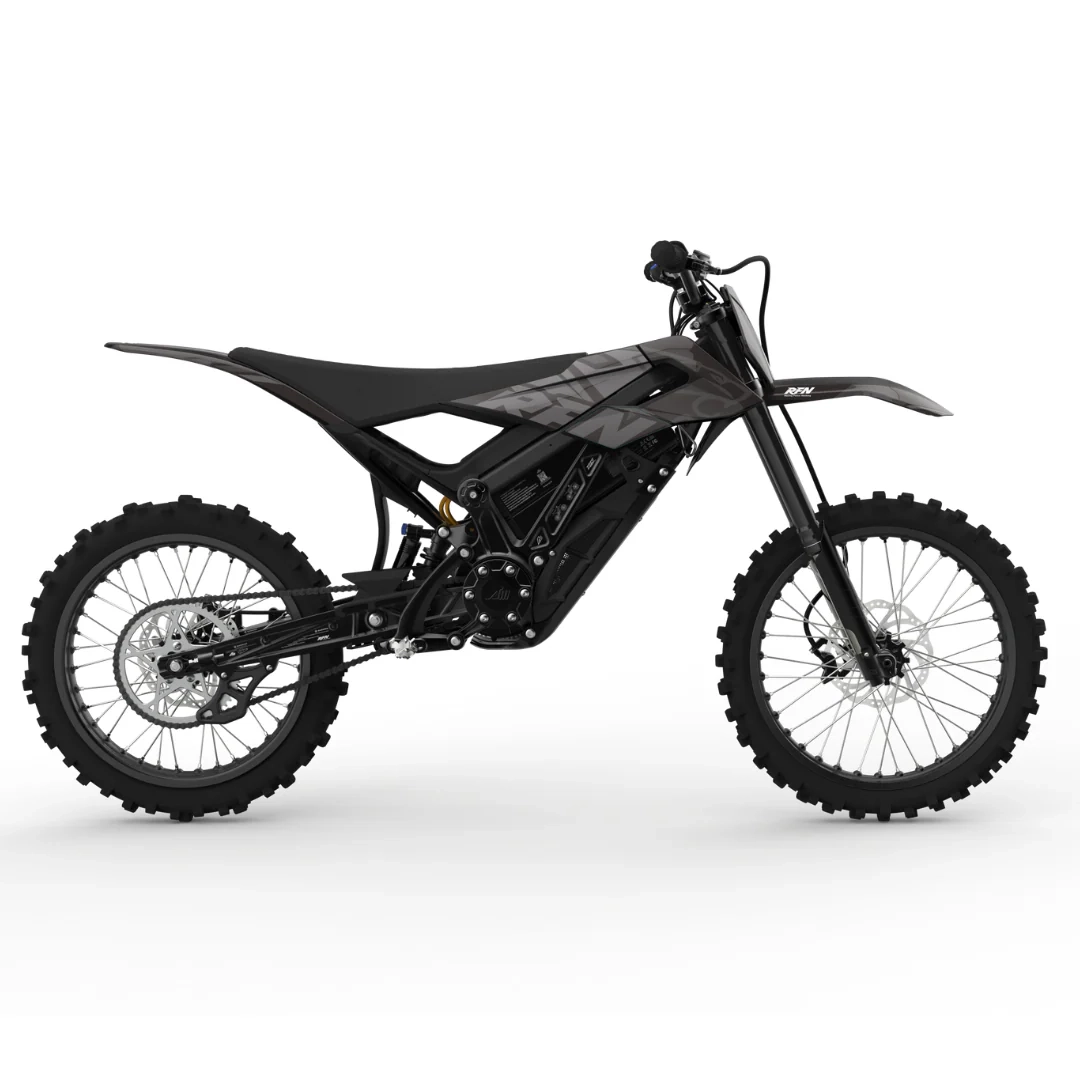Buyer’s Guide
Buyer’s Guide
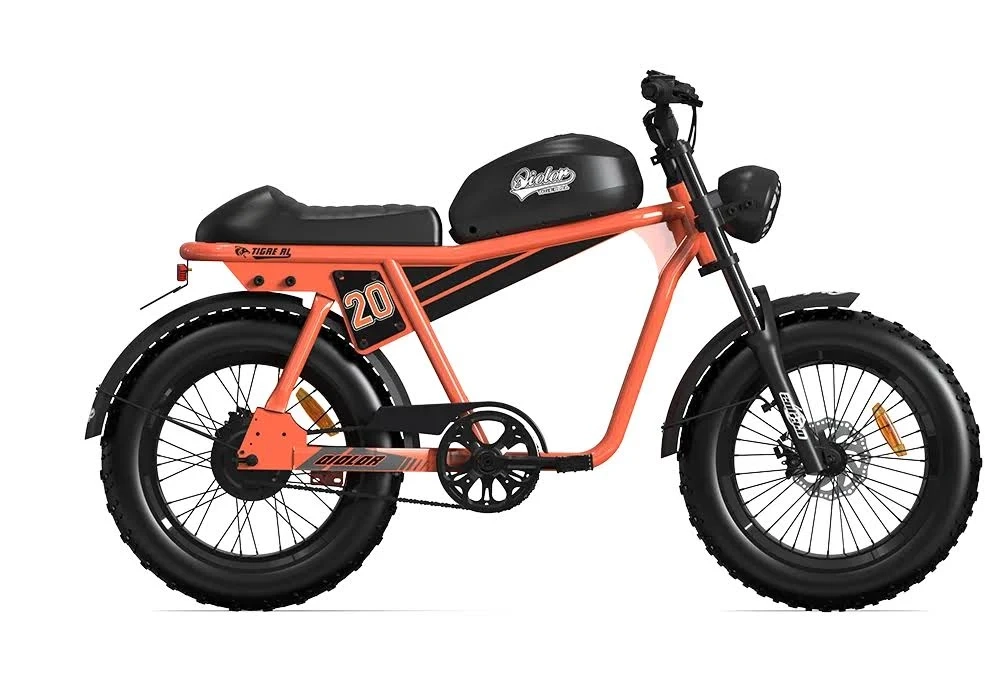
Tired of running out of juice mid-ride? Whether you’re commuting across town, tackling cross-country trails, or delivering all day, long-range e-bikes are here to change the game. In 2025, battery technology has taken a huge leap forward—giving riders more freedom, fewer charge stops, and a smoother ride every mile.
In this guide, we’ll break down the best long-range electric bikes of 2025, what makes them stand out, and how to choose the right one for your lifestyle.
What Makes an E-Bike "Long Range"?
When we say “long range,” we’re talking 60+ miles per charge—and some 2025 models now exceed 100 real-world miles. That’s not just lab-tested marketing speak. These bikes are built for serious distance.
A few key factors contribute to extended range:
- Battery Size (Watt-Hours): Look for bikes with 700Wh or more—some even pack 1500Wh with dual batteries.
- Motor Efficiency: Mid-drive motors tend to stretch your miles farther than hub motors.
- Assist Mode Use: Lower assist = longer range. Simple.
- Terrain & Conditions: Hills, wind, weight, and tire pressure all impact how far you’ll go.
Pro Tip: Range estimates on product pages are often best-case scenarios. Real-world mileage depends on how you ride, so always check rider reviews!
Top Long-Range E-Bikes in 2025 by Category
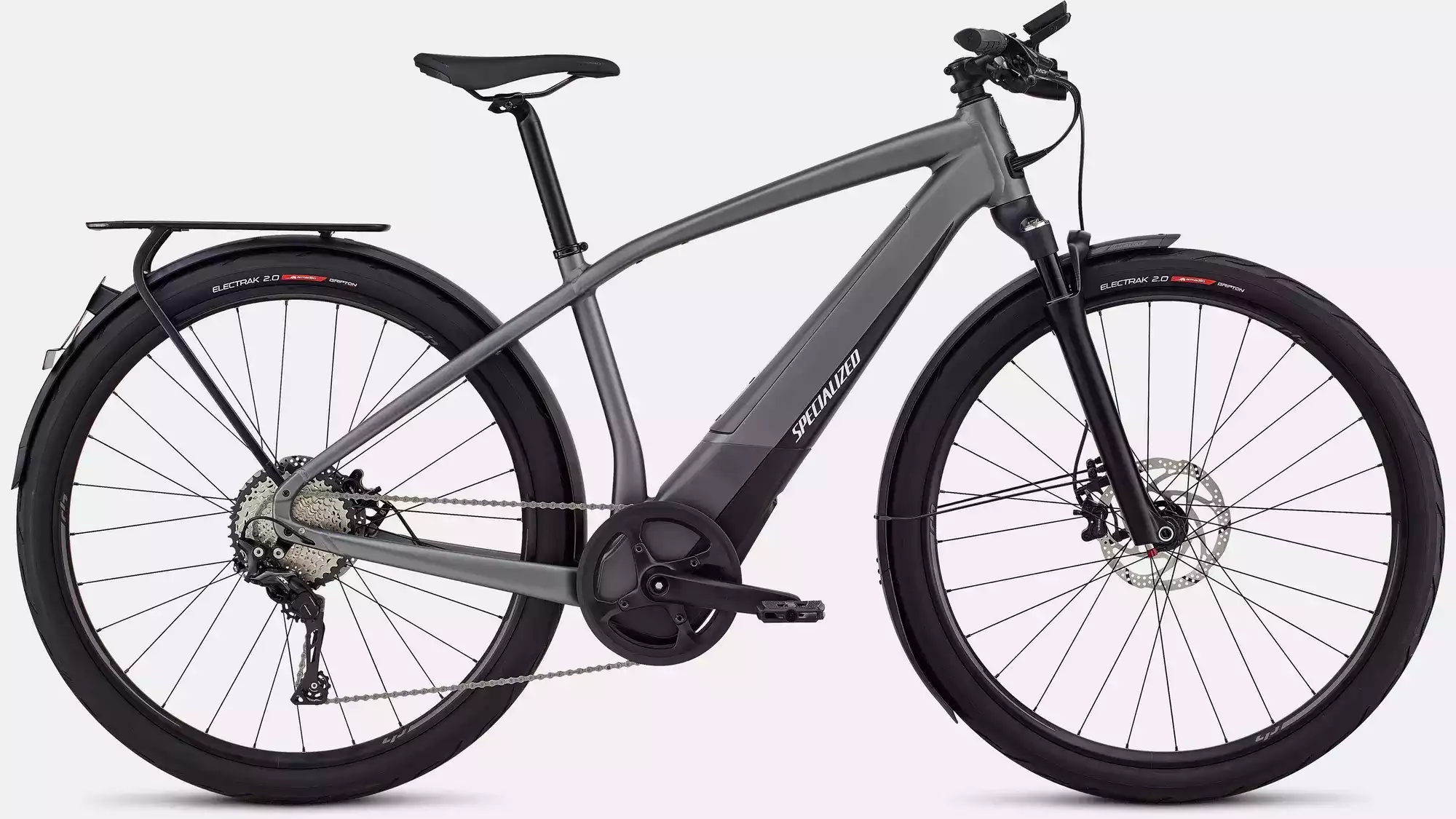
🚴 Best Overall: Specialized Turbo Vado 6.0 IGH
- Real-World Range: 100–120 miles
- Battery: 710Wh with optional range extender
- Why It Rocks: Smooth mid-drive motor, automatic shifting, premium comfort for any distance
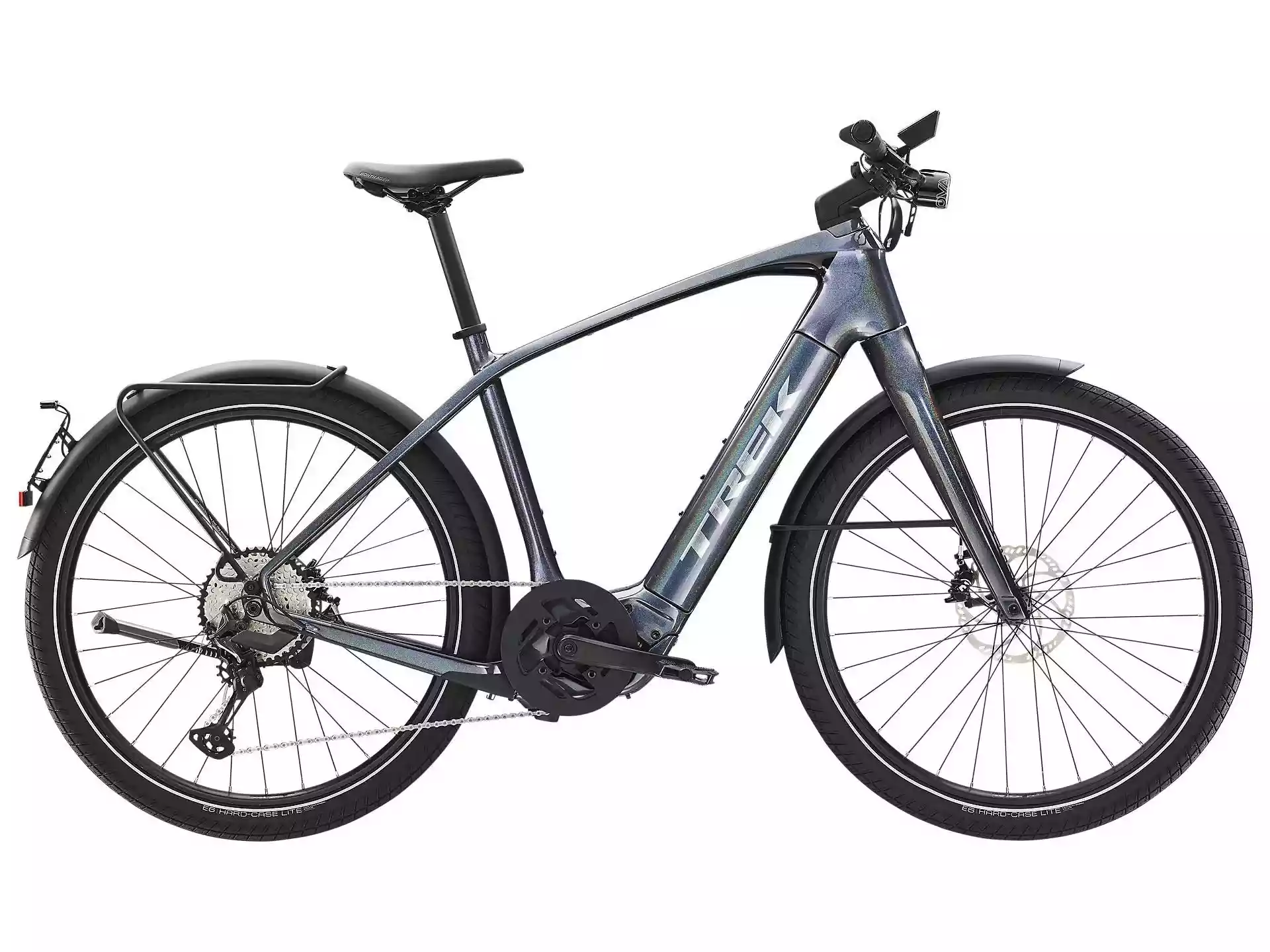
🏙️ Best for Commuting: Trek Allant+ 9.9S
- Real-World Range: Up to 100 miles
- Battery: Bosch 625Wh + dual battery support
- Why It’s Smart: Sleek look, integrated lights, and enough range for a full week of rides
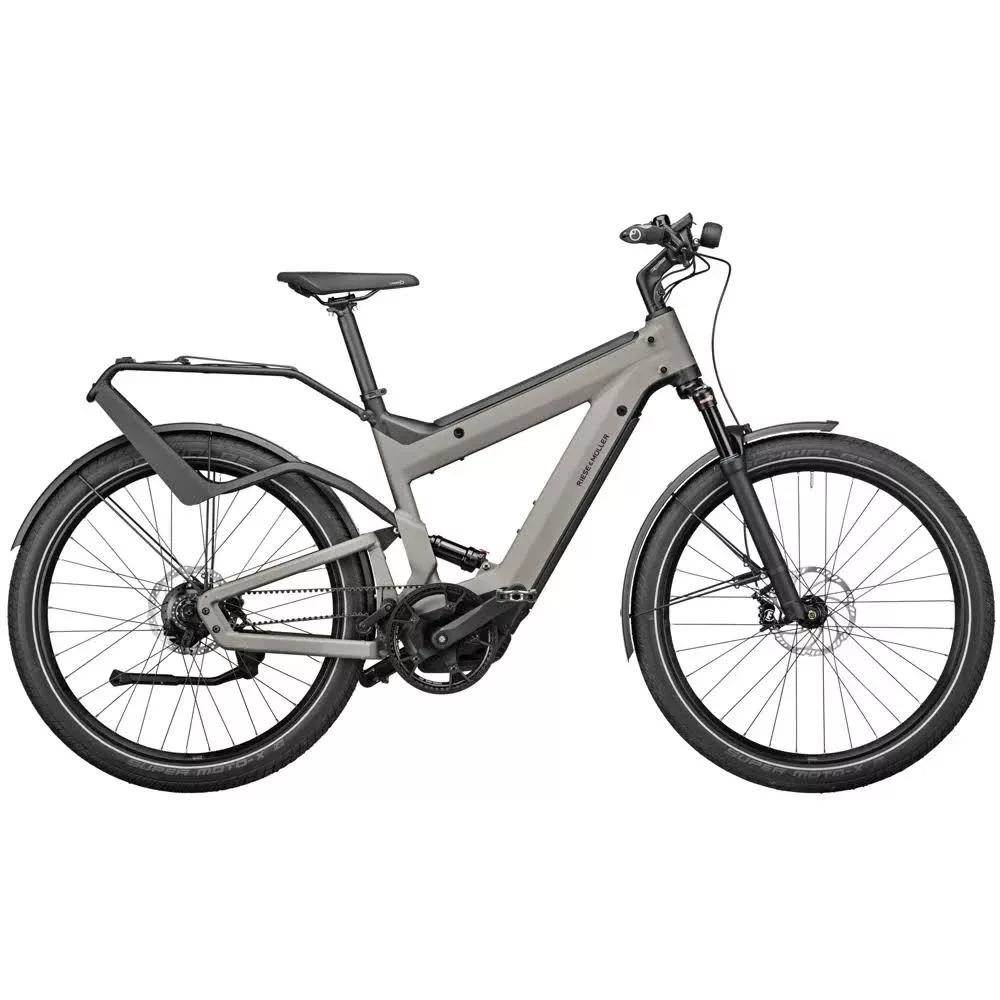
🌄 Best for Touring & Adventure: Riese & Müller Superdelite GT Rohloff
- Real-World Range: 120+ miles
- Battery: Dual 1125Wh
- Adventure-Ready Features: Full suspension, rugged frame, and built-in GPS display
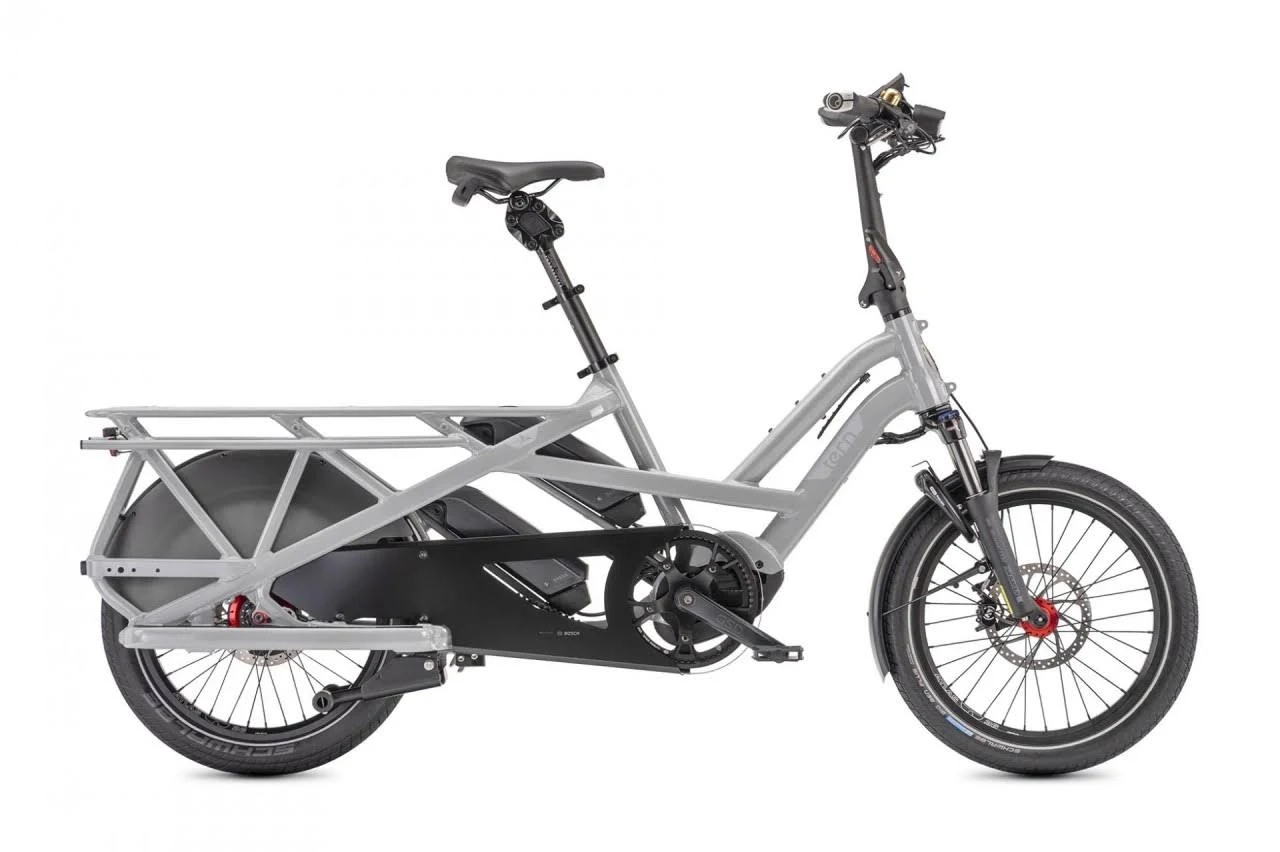
🛒 Best Long-Range Cargo E-Bike: Tern GSD R14
- Real-World Range: 75–100 miles
- Battery: Dual Bosch 1000Wh
- Why Families Love It: Hauls kids, groceries, or gear without breaking a sweat
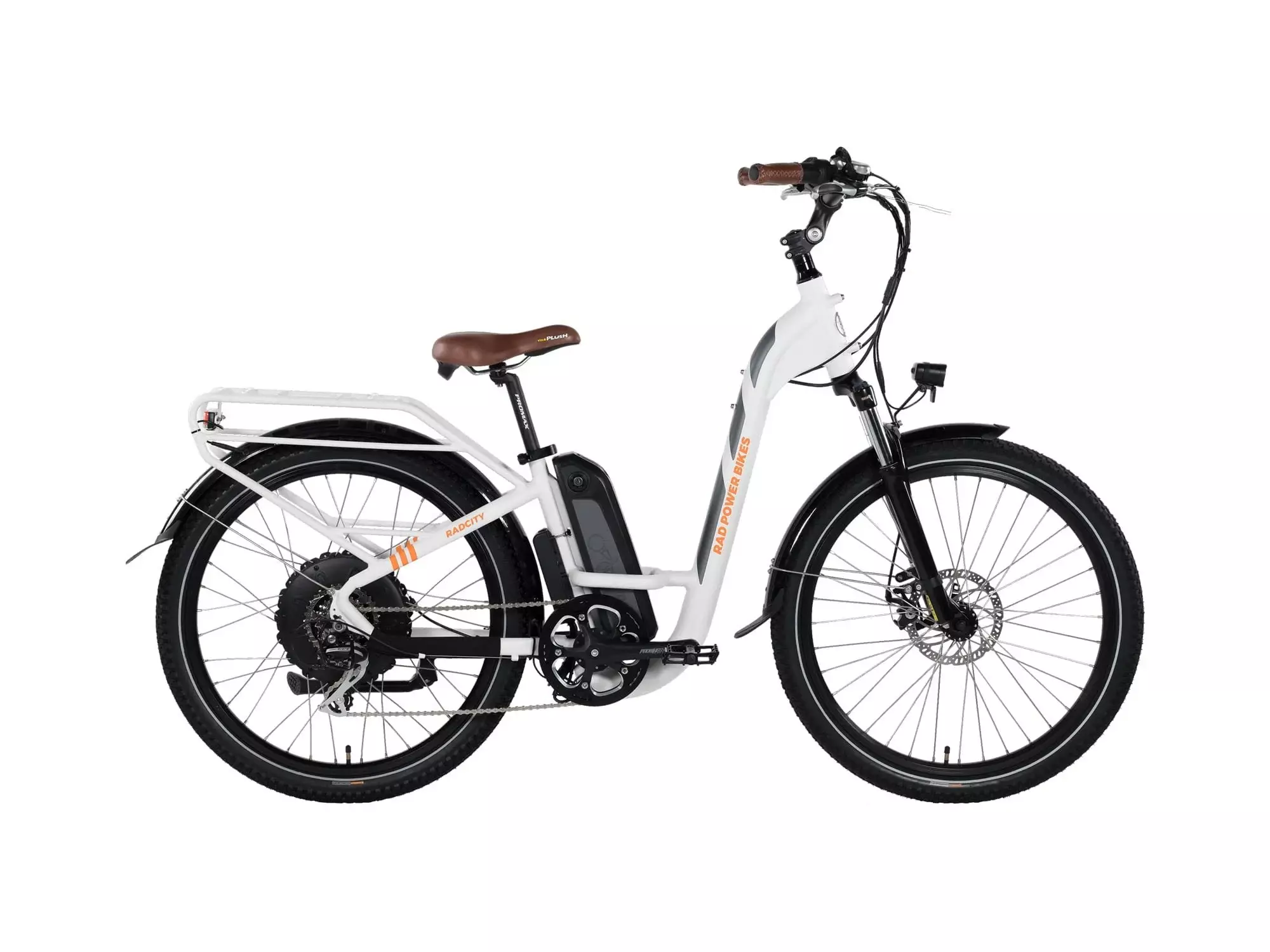
💰 Best Budget Long-Range Pick: Rad Power RadCity 5 Plus
- Real-World Range: 50–65 miles
- Battery: 672Wh
- Solid Value: Under $2,000, step-through frame, and a super comfy upright ride
Battery Specs & Comparison Table
| Model | Range (mi) | Battery (Wh) | Drive Type | Price | Ideal For |
|---|---|---|---|---|---|
| Specialized Turbo Vado 6.0 | 100–120 | 710+extender | Mid-drive | $5,500+ | Daily & distance |
| Riese & Müller Superdelite GT | 120+ | Dual 1125Wh | Mid-drive | $8,000+ | Adventure touring |
| Trek Allant+ 9.9S | ~100 | 625Wh | Mid-drive | $5,000+ | Commuting |
| Tern GSD R14 | 75–100 | Dual 1000Wh | Mid-drive | $6,500+ | Cargo/family use |
| RadCity 5 Plus | 50–65 | 672Wh | Hub-drive | ~$1,999 | Budget commuting |
Want More Miles Per Charge? Try These Tips
- Keep tires inflated to reduce drag
- Use Eco or low-assist mode on flat roads
- Avoid full-throttle starts—ease into your ride
- Lighten your load where you can
- Charge before you hit 0% to extend battery lifespan
Pro Tip: Cold weather can reduce range. If you're riding year-round, store your battery indoors when possible.
Why Choose a Long-Range E-Bike?
Long-range e-bikes are ideal for:
- Commuters traveling 15–30+ miles daily
- Bikepackers & explorers riding off the grid
- Delivery riders who need full-shift endurance
- Anyone who hates charging every day
Yes, they cost more—but the convenience, flexibility, and peace of mind are worth every dollar.
Final Thoughts: Go Far, Ride Easy
Electric bikes are already changing the way we move—but long-range models unlock true freedom. No more charging every night. No more worrying about the last few miles. Just ride farther, faster, and smarter.
Ready to ditch range anxiety?
Explore the best long-range e-bikes of 2025 and find your perfect match today.
What Counts as “Long Range” in 2025?
Wondering what "long range" really means in today’s electric bike world? Here’s how 2025 is redefining distance on two wheels.
Just a few years ago, getting 40 miles from a single e-bike charge felt impressive. Now, thanks to battery breakthroughs and smarter motors, many of the best e-bikes in 2025 can easily double—or even triple—that.
So what’s considered long range today? Let’s break it down.
Today’s Long-Range Benchmark: 60+ Real-World Miles
In 2025, a true long-range e-bike isn’t just about the spec sheet—it’s about what you actually get on the road. Here’s the new gold standard:
- 60+ miles per charge in real-world conditions (think hills, cargo, and wind)
- 100+ miles advertised under ideal settings (flat roads, eco mode, light rider)
- Some models even push 120+ miles with dual-battery setups
That’s enough to ride to work and back all week—or go on a weekend bikepacking trip without reaching for a charger.
Pro Tip: Advertised range is often based on low-assist, flat-terrain testing. Look for real-world range tests in rider reviews before you buy.
Battery Terms Made Simple
Not sure what battery numbers really mean? Here’s a quick guide to the specs that matter most in any 2025 e-bike buying guide:
- Watt-Hours (Wh): This is your fuel tank. A 750Wh battery stores more energy (and offers more miles) than a 500Wh one.
- Dual-Battery Systems: Some e-bikes let you connect two batteries for double the range—great for touring or delivery riders.
- Regenerative Braking or Solar Assist: While still emerging, these tech add-ons can help slightly extend range by recharging the battery as you ride.
Bigger Batteries, Smarter Systems
What’s fueling the leap in range isn’t just more capacity—it’s smarter energy use. In 2025, you’ll see:
- Mid-drive motors that deliver more torque using less power
- Auto-adjust assist levels that optimize energy on the fly
- Built-in range estimators that update in real time as you ride
These features make it easier than ever to plan longer rides with confidence—and fewer surprises.
Long story short?
If you’re shopping for the best long-range e-bike in 2025, start with bikes offering at least 700Wh of battery power or dual-battery capability. Then look at how efficiently that energy is used—not just how much of it there is.
Ready to cover more ground?
Up next, we’ll look at the top long-range e-bikes by category so you can find one that fits your ride.
Key Features of High-Range E-Bikes
Want to ride farther without the worry of running out of battery? These are the must-have features behind the best long-range e-bikes of 2025.
If you're shopping for a long-range electric bike, it’s not just about slapping on a big battery. The best models in 2025 combine power, efficiency, and smart design to stretch every charge as far as possible.
Below are the top features to look for when comparing bikes in any e-bike buying guide.
Big Battery Capacity (700Wh–1500Wh+)
The most obvious feature? A big battery.
- Wh (Watt-hours) tells you how much energy your battery holds.
- Most long-range e-bikes in 2025 start around 700Wh.
- Premium models now go up to 1500Wh or higher, especially with dual-battery options.
Pro Tip: Think of watt-hours like a gas tank—the more Wh, the farther you can go.
Dual-Battery Compatibility
Need to ride for hours (or days) at a time? Look for dual-battery support. This setup:
- Doubles your range without stopping to charge
- Keeps weight balanced with smart frame integration
- Often includes automatic switching between batteries mid-ride
Great for adventure riders, commuters, and delivery cyclists.
Efficient Motors (Mid-Drive Preferred)
Motor type plays a big role in range. In general:
- Mid-drive motors are more energy-efficient and better for climbing hills
- Hub motors are simpler and cheaper but drain the battery faster on inclines
- Look for torque sensors—they adjust power based on how hard you're pedaling, saving energy
Bikes with efficient motors often deliver better real-world mileage—even with smaller batteries.
Smart Assist Systems
Long-range e-bikes in 2025 are smarter than ever. Many now include:
- Auto-adjusting assist modes that adapt to terrain
- Eco modes for maximizing battery life
- Phone-connected apps that track battery usage and performance
These tools let you ride longer without thinking too much about settings.
Aerodynamic, Lightweight Frames
Battery life isn’t just about electronics—it’s about design. The best long-range models feature:
- Lightweight frames that reduce drag
- Internal cabling to improve airflow and style
- Rigid or full-suspension frames built for distance and comfort
Less resistance = less power needed = more miles.
Integrated Displays + Range Estimators
Finally, don’t overlook the display unit. A quality one shows:
- Battery level and real-time range estimates
- Current assist mode and trip stats
- Navigation or GPS (on high-end models)
This info helps you ride smarter, adjust as needed, and avoid running out of power mid-trip.
Bottom Line:
When you're comparing the best long-range electric bikes of 2025, look beyond battery size. Pay attention to how the motor, frame, and onboard tech all work together to get the most out of every charge.
Up next? Let’s break down the top-performing long-range e-bikes by category so you can find one that fits your ride style.
Best Long-Range E-Bikes by Category (2025)
Looking for an electric bike that can go the distance? These top picks deliver serious range, performance, and value—tailored to how you ride.
Whether you're commuting 20 miles a day, hauling cargo, or riding off-grid for days, there's a long-range e-bike built for your lifestyle. Below, we’ve rounded up the best long-range electric bikes of 2025, broken down by category to help you compare real-world range, features, and price points.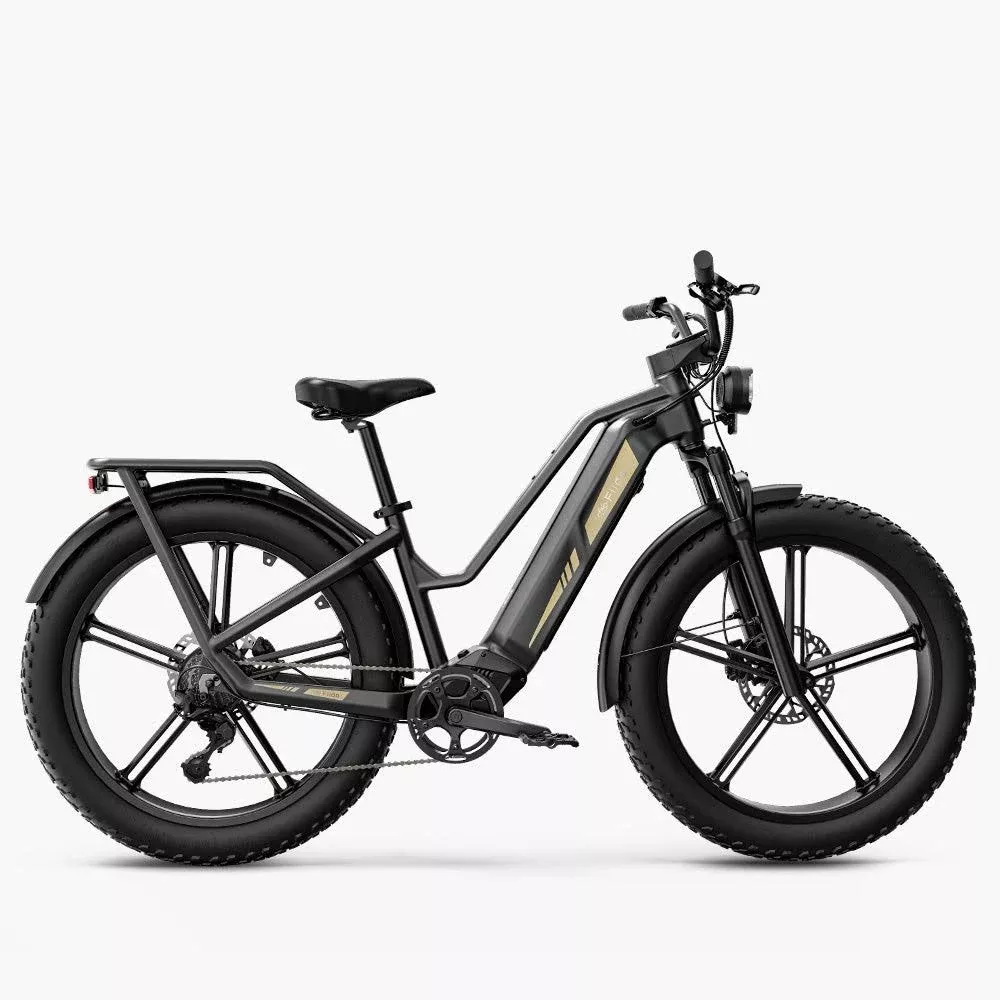
Best Overall Long-Range E-Bike: Fiido Titan
- Max Range: Up to 250 miles (with 3 batteries; ~85–100 miles per battery)
- Battery Setup: Modular 960Wh batteries; supports up to 3 at once
- Highlights:
- Massive payload support (200kg+)
- Excellent for long-haul or off-grid riding
- Rugged design with fat tires and solid suspension
- Downside: Heavy when fully loaded; cost increases with extra batteries
- Best For: Riders who prioritize range above all—cross-country tours, bikepacking, heavy cargo trips
Pro Tip: You don’t have to run all 3 batteries. Start with one and upgrade later as needed.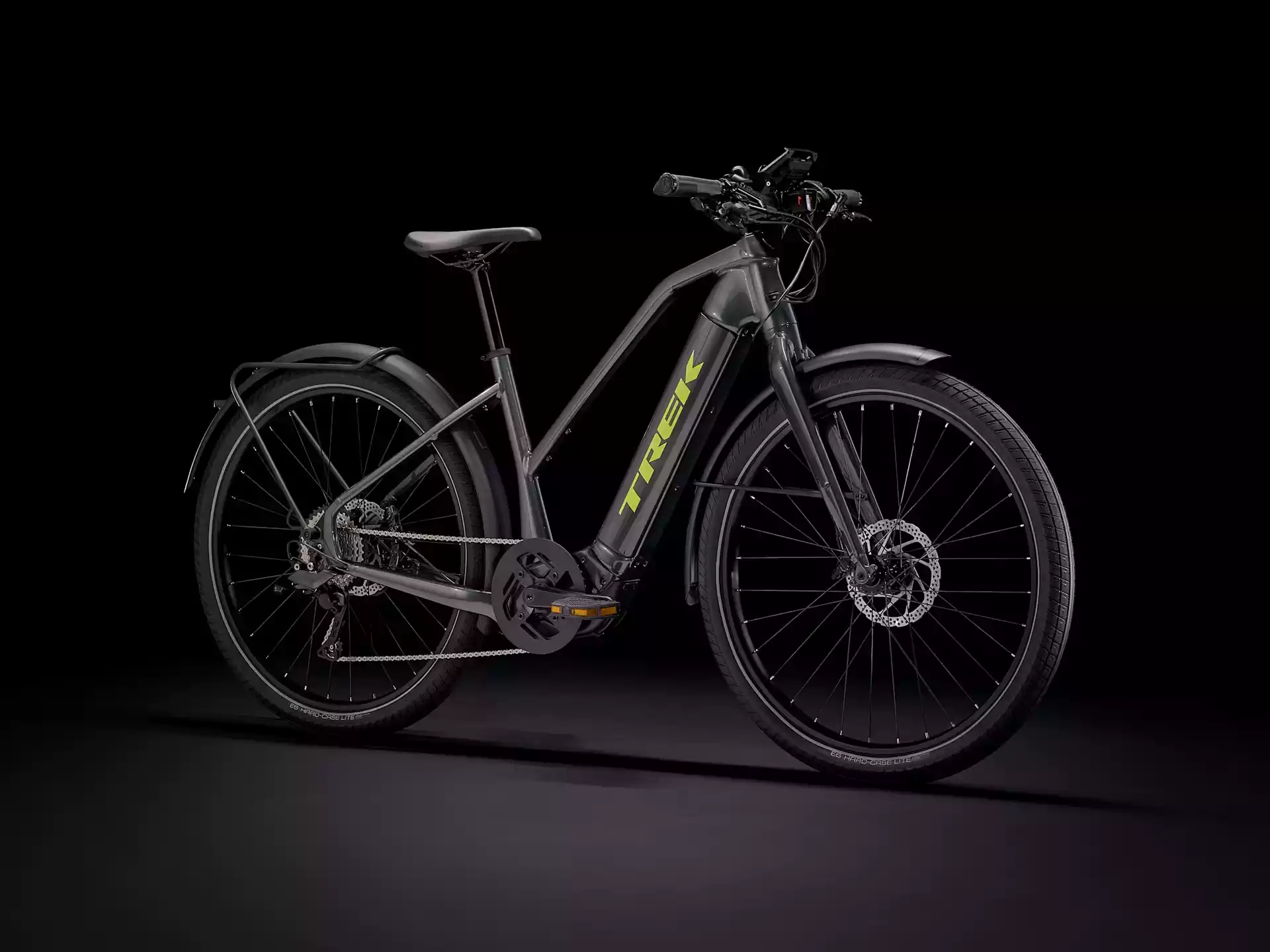
Best Commuting E-Bike: Trek Allant+ 8S / 9S
- Real-World Range: 80–100 miles (with dual battery)
- Battery Setup: Bosch PowerTube system; dual up to 1125Wh
- Highlights:
- Bosch Performance Line Speed mid-drive
- Integrated commuter features: lights, fenders, rear rack
- Sleek, low-profile urban design
- Downside: High price point with upgrades; dual-battery adds weight
- Best For: Urban professionals, daily commuters, tech-savvy riders who value style and speed
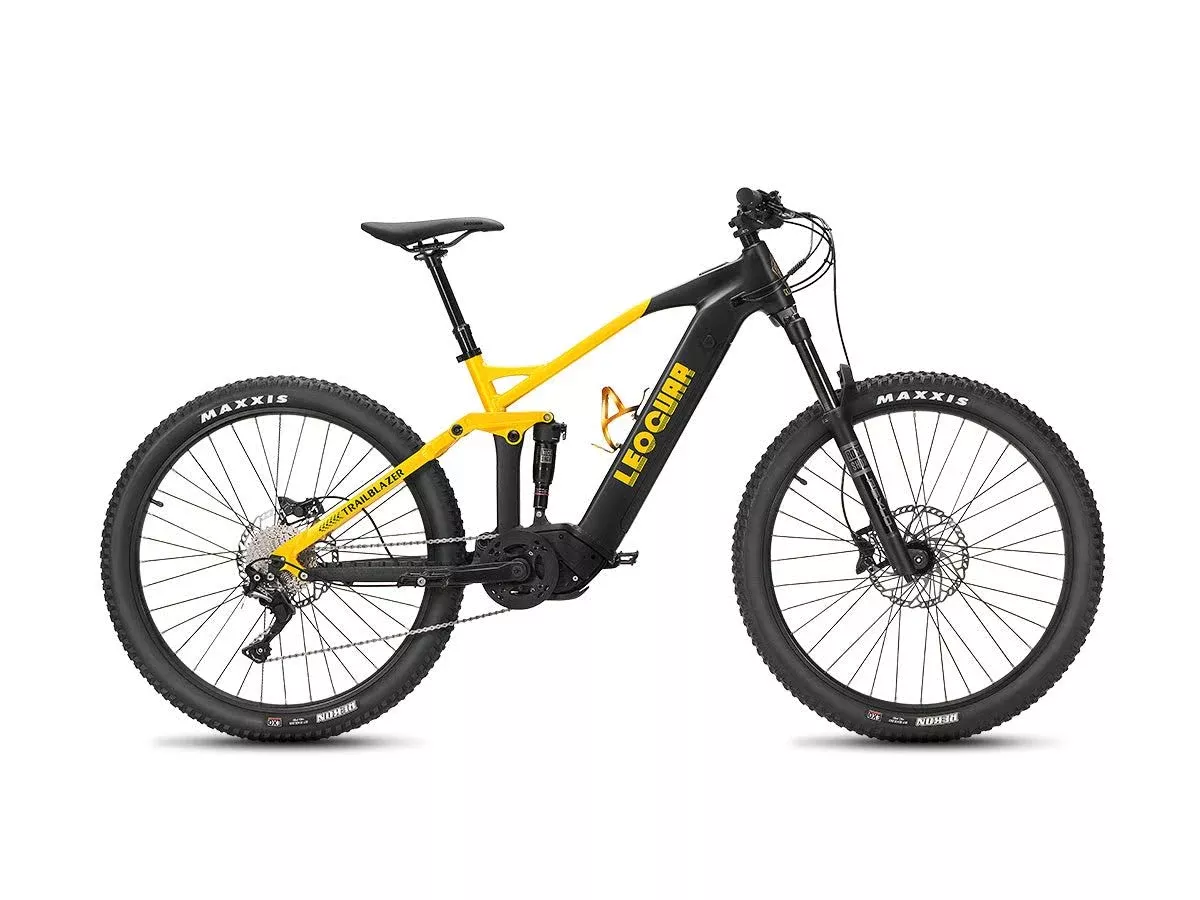
Best for Touring & Adventure: Leoguar Trailblazer EMTB
- Real-World Range: 95–105 miles
- Battery Setup: Dual 720Wh batteries
- Highlights:
- Full suspension, powerful mid-drive motor
- Power management system handles varied terrain
- Built tough for off-road and long-distance trips
- Downside: Bulkier than urban models; trail-focused design isn’t for everyone
- Best For: Bikepackers, mountain adventurers, and riders planning multi-day excursions
Alternative: Riese & Müller Superdelite GT Rohloff – German luxury build, 120+ mile range, premium components (at a premium price)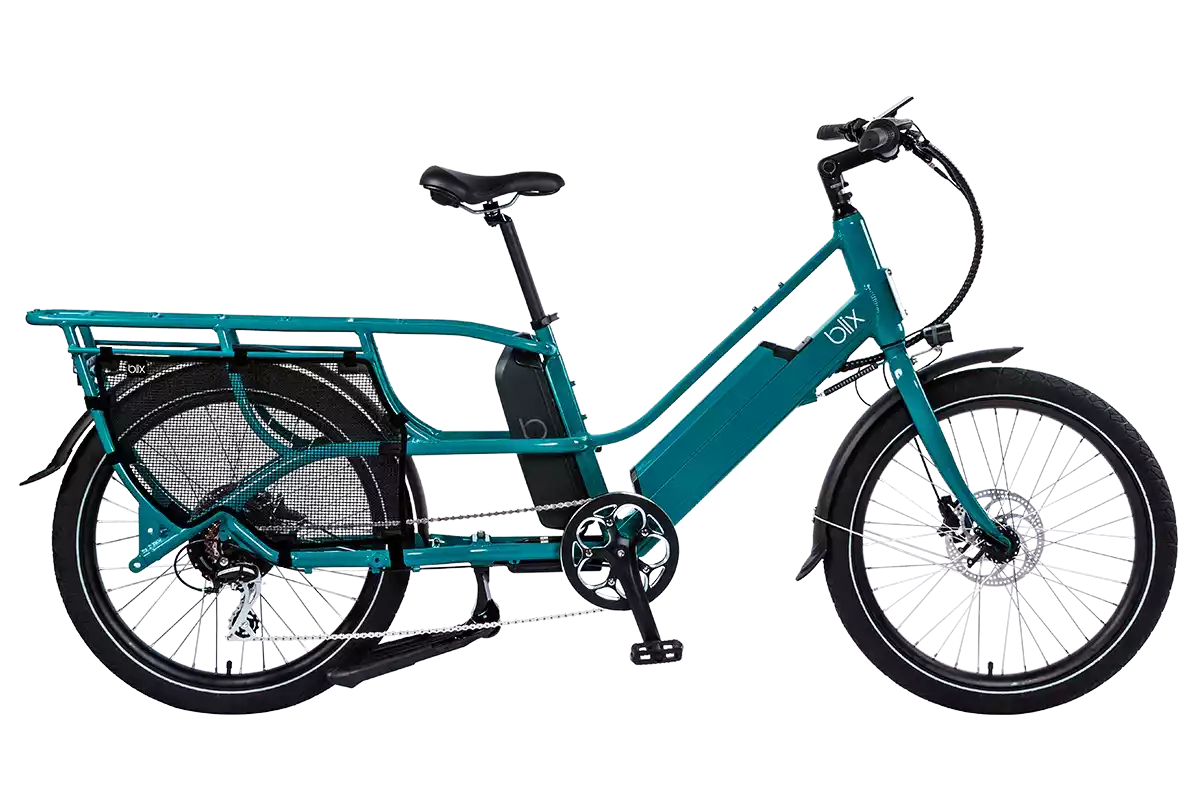
Best Cargo E-Bike: Blix Packa Genie (Dual Battery)
- Max Range: Up to 80 miles with dual 28Ah batteries
- Highlights:
- 24” wheels for stability when loaded
- Rear rack holds up to 242 lbs
- Modular accessories and safety features included
- Downside: No suspension; standard single-battery version has average range
- Best For: Families, delivery riders, or anyone hauling groceries, gear, or passengers over longer distances
Alternative: Tern GSD R14 – High-end Bosch Cargo Line motor, up to 100-mile range, best-in-class cargo features
💰 Best Budget Long-Range E-Bike: Qiolor Tiger RL
- Real-World Range: Up to 60 miles (more with upgraded battery)
- Battery Setup: 48V 13Ah standard
- Highlights:
- 750W motor with 85Nm torque
- Retro styling with modern performance
- Hydraulic brakes, fat tires, great value for the price
- Downside: Heavier than average; limited range on full power
- Best For: Budget-conscious commuters, students, or anyone seeking value and decent distance
Other Solid Budget Pick: Aventon Aventure 2 – 65–75 mile range, torque sensor, rugged feel, very competitive price
🔍 At-a-Glance Comparison Chart
| Category | Best Pick | Max Range | Battery Setup | Key Features | Price Range |
|---|---|---|---|---|---|
| Overall | Fiido Titan | Up to 250 | 3 × 960Wh modular | Max range, heavy-duty build | $1,499+ |
| Commuting | Trek Allant+ 8S / 9S | 80–100 | Dual Bosch PowerTube | Sleek, commuter-ready, fast | $5,000+ |
| Touring | Leoguar Trailblazer EMTB | 95–105 | Dual 720Wh | Off-road capable, full suspension | $3,000+ |
| Cargo | Blix Packa Genie | Up to 80 | Dual 28Ah | Affordable cargo hauler | $2,199 |
| Budget | Qiolor Tiger RL | Up to 60 | 48V 13Ah (upgradeable) | Stylish, strong torque, great value | $1,399 |
Choosing the Right Long-Range E-Bike for You
Not all long-range e-bikes are built the same—and that’s a good thing. Whether you want maximum distance, cargo space, or just a smarter way to commute, the right model will make every mile easier.
Still deciding?
Compare range, motor type, and use case. Prioritize what you need most—speed, comfort, hauling power, or simply the longest ride possible.
Ready to go the distance?
Explore these 2025 electric bike reviews, take a test ride, and get ready to redefine how far you can go on two wheels.
Top Long-Range E-Bike Models: Side-by-Side Comparison
Trying to choose the best long-range e-bike for your needs? This chart makes it easy to compare range, price, and features at a glance.
Not all electric bikes are built the same—and when it comes to long-distance performance, the details matter. Whether you're prioritizing value, premium power, or all-out adventure range, this comparison table will help you quickly spot the best fit for your ride.
Use this as your go-to 2025 e-bike buying guide when narrowing down your top picks.
| Model | Real-World Range | Battery (Wh) | Drive Type | Price | Best For |
|---|---|---|---|---|---|
| Model A | ~100 miles | 750Wh + optional extender | Mid-drive | $5,999 | Long-distance touring |
| Model B | ~80 miles | 625Wh | Hub motor | $1,999 | Urban commuting on a budget |
| Model C | 120+ miles | Dual 1000Wh | Mid-drive | $8,500 | Backcountry & expedition |
What These Specs Really Mean
- Real-World Range tells you how far you’ll go under normal riding conditions—hills, wind, moderate assist mode—not idealized lab tests.
- Battery Size (Wh) shows your energy storage. Bigger means longer range, but it also adds cost and weight.
- Drive Type: Mid-drive motors offer better hill climbing and range. Hub motors are cheaper but less efficient on tough terrain.
- Best For helps match each bike to your riding goals—whether it’s daily use or weekend getaways.
Pro Tip: Going with a mid-drive motor and dual battery setup can often double your range without doubling your effort.
Still Deciding? Here’s How to Choose:
- For budget-conscious riders: Look at mid-range hub-drive bikes with 600–700Wh batteries.
- For serious commuters: Go for dual battery options and built-in lights, racks, and fenders.
- For long-range adventurers: Prioritize full suspension, rugged tires, and 1000Wh+ battery setups.
Your Next Ride Is Closer Than You Think
From city streets to mountain trails, the best electric bikes of 2025 offer more range and flexibility than ever. Use this comparison as your launchpad, then dive deeper into reviews or test rides.
Ready to ride farther? Find your perfect long-range e-bike today.
Tips to Maximize Your E-Bike Range
Want to squeeze more miles out of every charge? These practical habits can stretch your e-bike’s range—no upgrades required.
You don’t need a 1,000Wh battery to go the distance. With a few smart riding and maintenance habits, you can boost your e-bike’s real-world range and get more out of every ride. Here’s how to ride smarter and farther.
1. Keep Your Tires Properly Inflated
Low tire pressure creates more rolling resistance, which drains your battery faster. Check your pressure weekly and inflate according to the recommended PSI on the sidewall.
- Use e-bike-rated tires for better efficiency and durability
- Consider smooth or semi-slick tread if you ride mostly on pavement
Pro Tip: A floor pump with a pressure gauge makes tire checks quick and accurate.
2. Ride Smoothly and Use the Right Assist Level
Maxing out your pedal assist or constantly using throttle might feel fun—but it burns through your battery fast.
- Use lower assist modes (Eco or Tour) whenever possible
- Try steady, consistent pedaling instead of stop-and-go bursts
- Use gears wisely to keep your cadence efficient on hills
3. Minimize Throttle Use
If your e-bike has a throttle, use it sparingly. Throttles pull more power because the motor does all the work, especially when starting from a stop or climbing hills.
- Pedal to start moving, then engage throttle if needed
- Limit full-throttle bursts unless absolutely necessary
4. Reduce Extra Weight
The heavier your load, the harder your motor has to work.
- Remove unnecessary accessories (like unused racks or bags) when not needed
- Pack light for daily rides or commutes
- For cargo bikes, distribute weight evenly to avoid drag
Even a few pounds can make a difference over longer distances.
5. Take Care of Your Battery
Your battery is your fuel tank—treat it well and it’ll last longer, both per charge and overall.
- Avoid letting the battery fully deplete before charging
- Store indoors when not in use—extreme heat or cold can reduce performance
- Charge to 80–90% for daily rides to extend long-term battery health
Pro Tip: If you won’t ride for a while, store your battery at around 50% charge.
Max Range = Smart Riding + Simple Maintenance
The best long-range e-bikes of 2025 are designed to go far, but how you ride and care for them matters just as much. Keeping your tires dialed in, riding smart, and babying your battery can easily add 10–20% more range—no upgrades needed.
Looking to ride farther with confidence?
Pair these habits with the right long-range e-bike, and you’ll be amazed how far you can go.
Pros and Cons of Long-Range E-Bikes
Thinking of going the distance? Here’s what to love—and what to consider—before buying a long-range electric bike.
Long-range e-bikes are built to travel farther and handle more demanding rides, whether you’re commuting across town or adventuring into the wilderness. But with extra range comes a few trade-offs. Let’s break down the benefits and drawbacks so you can make the smartest choice for your ride style.
✅ Pros of Long-Range E-Bikes
1. No More Range Anxiety
You won’t constantly worry about running out of juice mid-ride. Long-range models offer 60 to 100+ miles of real-world riding—enough for full-day commutes, weekend trips, or delivery shifts.
2. Ideal for Daily Use or Off-Grid Exploration
Whether you're biking to work five days a week or heading off the beaten path, these e-bikes are made for reliable, extended performance. They’re especially great for:
- Touring cyclists
- Delivery riders
- Off-grid campers or bikepackers
3. Higher Resale Value
Because battery size and motor quality are top selling points, long-range models often hold value better over time. A large battery with low charge cycles? That’s a win for secondhand buyers.
Pro Tip: Keep your battery maintained and include its health stats when reselling to boost buyer confidence.
⚠️ Cons of Long-Range E-Bikes
1. Heavier Frames
More battery means more weight. Long-range e-bikes can feel bulky, especially with dual-battery setups. That affects:
- Hill climbs (if pedaling unassisted)
- Lifting and transporting the bike
- Maneuverability in tight spaces
2. Higher Upfront Cost
Expect to pay more for bigger batteries and better motors. Long-range models often start around $2,000 and can exceed $6,000+ with top-tier features.
3. Longer Charge Times
A 1000Wh battery can take 6–10 hours to fully recharge. You can mitigate this with:
- Fast chargers
- Dual-battery rotation (charge one while using the other)
- Smart planning between rides
Should You Go Long-Range?
If you’re a casual weekend rider who only logs a few miles, a long-range e-bike might be overkill. But if you want freedom from frequent charging, flexibility for longer trips, and a bike that can grow with your needs—long-range is worth it.
Next up: We’ll link you to helpful tools to estimate range, explore more models, and book a test ride. Ready to ride smarter and farther? Let’s roll.
Who Should Buy a Long-Range E-Bike?
Wondering if a long-range e-bike is right for you? If your rides are long, frequent, or unpredictable—read on.
Not every rider needs 80+ miles of range, but for many, a long-range electric bike makes daily life easier, cheaper, and more fun. Here’s who benefits most from the added capacity, and why it might be worth the upgrade.
🚲 1. Daily Commuters (15+ miles per day)
If your round-trip commute covers more than 10–15 miles, a long-range model will let you go multiple days without charging—a big win for convenience.
- Skip charging every night
- Ride in higher assist modes without worry
- Extra range for detours or errands
Pro Tip: Look for models with integrated lights, racks, and weather protection to make commuting seamless.
🌄 2. Rural or Suburban Riders
When destinations are spread out and bike lanes are rare, having 70–100+ miles of range means less stress about finding charging stops.
- Ideal for riders in hilly or open countryside
- Great for weekend trips into town or nature
- Range buffers against terrain changes and elevation
🏕️ 3. Bikepackers and Tour Cyclists
Long-range e-bikes open up true off-grid exploration. You can carry camping gear, explore national parks, or ride trails without worrying about the next outlet.
- Dual batteries = more freedom
- Pair with solar charging or dynamo hubs for multi-day rides
- Best when paired with rugged builds and mid-drive motors
🛵 4. Delivery Riders and Gig Workers
If your income depends on covering miles, more range equals more orders, less downtime, and fewer mid-shift recharges.
- Look for models with swappable or hot-swappable battery setups
- Range helps when GPS takes you on longer routes
- Save time and earn more without worrying about range limits
💡 5. Anyone Who Hates Charging
Maybe you're not a daily commuter—but you'd rather ride all week and charge once. Long-range bikes let you ride on your schedule, not your charger’s.
- Perfect for students, city dwellers, or multi-purpose riders
- Less battery stress = better ride enjoyment
- Works great with solar or garage charging setups
Bottom Line:
If you ride far, ride often, or simply want to ride worry-free, a long-range e-bike is a smart, future-proof investment. The extra mileage pays for itself in time, flexibility, and peace of mind.
Final Thoughts: Why Long-Range E-Bikes Are Worth It
Still on the fence? Here’s why going the distance could be the smartest move you make this year.
If you’re serious about riding—whether that means commuting daily, hauling gear, or exploring the unknown—a long-range e-bike is a total game changer. These bikes aren’t just about numbers on a spec sheet—they’re about the freedom to ride farther, stress less, and do more.
Freedom That Fits Your Lifestyle
When you don’t have to think about charging every night or cutting your trip short, you can focus on the joy of the ride. Whether you're zipping through the city or planning a weekend escape, range equals flexibility.
- Test ride before you buy—range feels different for everyone
- Think long-term: dual-battery systems give you room to grow
- Choose models that match your terrain and use case
Pro Tip: Bring a backpack or gear bag to your test ride—you’ll want to feel what real use looks like.
Range Is More Than Miles—It’s Possibility
The best long-range e-bikes of 2025 let you reimagine what’s possible on two wheels. With smart features, powerful batteries, and comfortable builds, these bikes make practical riding exciting—not a chore.
So whether you're aiming to reduce car trips, ride farther without limits, or simply want the best gear for your lifestyle, a long-range e-bike is a smart, future-ready investment.
Ready to ride without limits?
Explore top models, compare features, and find the best long-range e-bike for your 2025 adventures.
Additional Resources for Long-Range E-Bike Buyers
Want to dive deeper? These tools and guides will help you make the most informed choice—and get more out of every mile.
Choosing the best long-range e-bike isn’t just about specs—it’s about how it performs in your real-world rides. Whether you’re comparing models, planning a cross-state tour, or just curious about how far you can go on a single charge, these resources will help you ride smarter and farther.
🔋 Battery Comparison Charts
Understand how different batteries stack up by capacity, size, weight, and charge times. These visual guides make it easy to compare:
- Watt-hour (Wh) ratings
- Estimated real-world range by bike type
- Charging speeds with standard vs. fast chargers
Resource: E-Bike Battery Comparison Tools →
📏 Real-World Range Calculators
Don’t rely only on manufacturer estimates. Input your own weight, assist level, terrain, and weather to get a personalized range estimate.
- Adjust for cargo loads or dual-battery setups
- Great for planning long commutes or tours
- Helps match your needs to the right motor and battery combo
Resource: Bosch Range Assistant →
Pro Tip: Use a range calculator before you buy to avoid surprises on your first ride.
🗺️ Long-Distance E-Bike Route Maps (U.S.)
Explore scenic, bike-friendly routes across the country optimized for e-bike riders.
- National and state-level trails
- Charging stations, campgrounds, rest stops
- Elevation profiles and traffic conditions
Resource: Adventure Cycling Route Network →
🧭 Reviews from Long-Distance Riders
Get firsthand insights from riders who have logged 500+ miles on their e-bikes.
- Honest pros and cons after extended use
- Tips on battery life, comfort, and maintenance
- Ideal for choosing between similar models
Resource: r/ebikes Long-Range Reviews Thread →
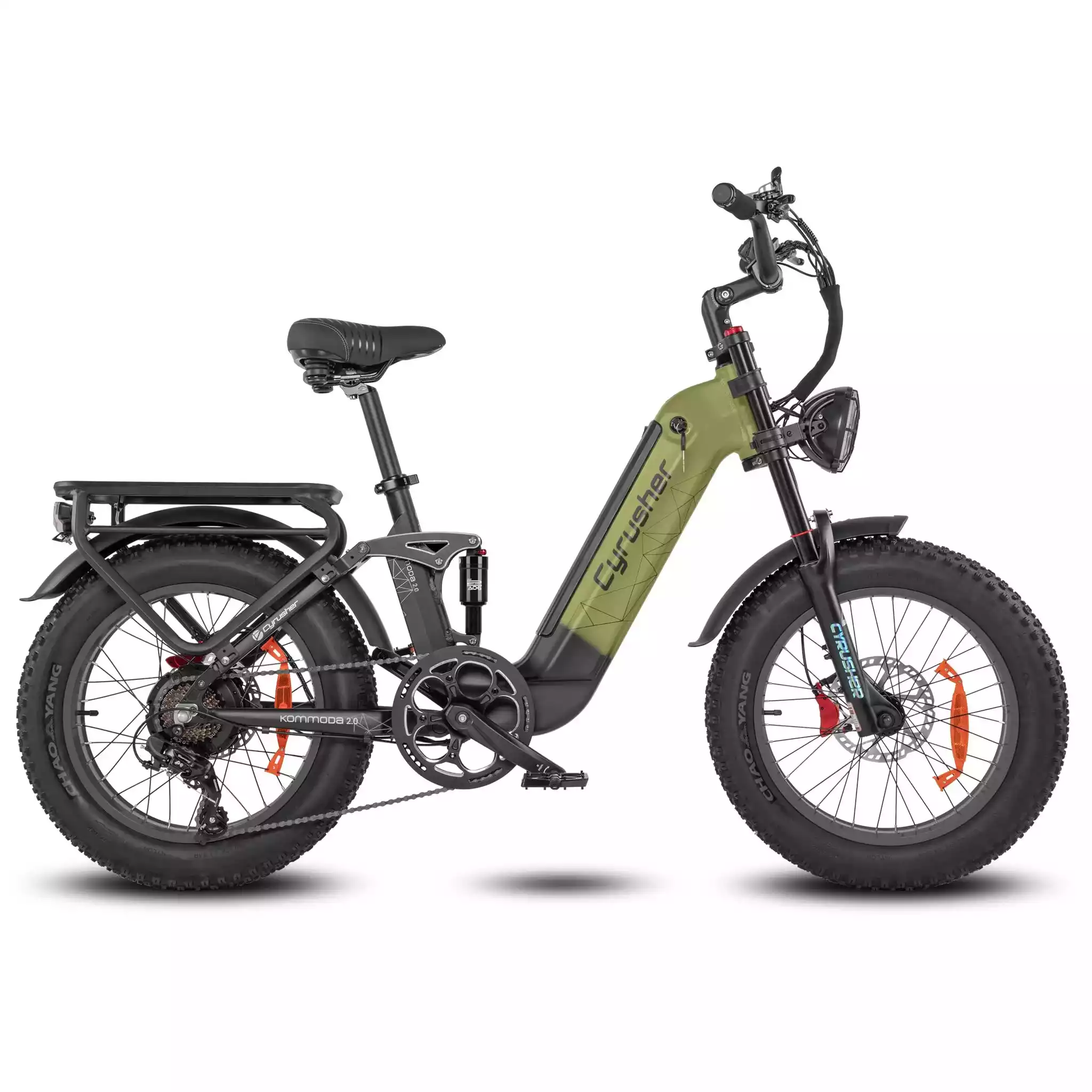
Ever wondered if an e-bike could be your new favorite way to get around? Whether you're commuting, cruising the neighborhood, or just getting back into cycling, an entry-level e-bike is a fun, low-stress way to ride more often—with a lot less effort.
Entry-level e-bikes are electric bikes designed specifically for new riders. They’re simple to use, easy to maintain, and often much more affordable than high-end models. Think: no complicated settings, no steep learning curve—just hop on and ride.
Why E-Bikes Are Perfect for Beginners
Electric bikes give you a boost while pedaling, making hills feel flatter and long rides feel shorter. For beginners, this means:
- Less physical strain, more enjoyment
- More confidence to ride in traffic or on trails
- Fewer excuses to skip a ride
And thanks to improvements in battery and motor technology, even entry-level models in 2025 offer impressive range and reliability.
What Makes a Great Beginner E-Bike?
When you're just starting out, the best e-bike is one that feels easy and comfortable—without breaking the bank. Here’s what to look for:
- Simplicity: A clean interface, minimal buttons, and pedal-assist you can trust
- Affordability: Great models now start as low as $800–$1,500
- Comfort: Upright seating, cushy seats, and easy step-through frames
- Ease of Maintenance: Look for hub motors, sealed batteries, and sturdy components
- Range & Power: 20–40 miles is more than enough for most beginner riders
✅ Pro Tip: If it looks intimidating or too high-tech, skip it. Your first e-bike should feel as friendly as a cruiser bike—with a little extra magic under the hood.
Ready to find out which models are best for new riders? In the next section, we’ll break down the top beginner e-bikes of 2025, from budget-friendly cruisers to foldable city bikes and everything in between.
Key Features to Look for in a Beginner E-Bike
Not all e-bikes are created equal—especially if you’re a first-time buyer. Choosing the right entry-level model means focusing on what truly matters: comfort, simplicity, and reliability. Here’s a quick breakdown of the most important features in any good beginner e-bike.
Affordability: Spend Smart, Ride More
For most new riders, there's no need to spend $3,000+ on a high-end model. Some of the best e-bikes for beginners in 2025 sit comfortably in the $800 to $1,800 range. These bikes offer solid build quality, good battery life, and just the right amount of motor power—without the premium price tag.
✅ Pro Tip: Brands like Aventon, Ride1Up, and Lectric offer excellent beginner models under $1,500.
Ease of Use: Simple, Stress-Free Riding
You don’t need a tech degree to ride an e-bike—and your first one shouldn’t make you feel that way.
Look for:
- Step-through frames (easier to mount and dismount)
- Minimal controls (basic display, clear buttons)
- Pedal-assist systems that kick in naturally
- Optional thumb throttle for boost-on-demand (great for hills or takeoff)
A beginner-friendly e-bike should feel just like a regular bike—but with superpowers.
Low Maintenance: Ride More, Worry Less
As a first-time rider, the last thing you want is constant trips to the repair shop. Low-maintenance e-bikes keep things simple and smooth.
Here’s what helps:
- Hub motors (sealed and durable—fewer moving parts)
- Integrated batteries (easier to charge and less exposed to weather)
- Mechanical or hydraulic disc brakes (reliable stopping power in all weather)
⚙️ Did You Know? Hub motors are usually quieter and need less upkeep than mid-drive motors, making them perfect for beginners.
Comfort: Because Happy Riders Ride More
An e-bike should feel good from the moment you sit on it. For beginners, comfort is key—and can make the difference between a fun ride and a sore back.
Look for:
- Upright riding position to reduce strain on your back and wrists
- Front suspension forks to smooth out bumps and cracks
- Cushioned or wide saddles for extra padding
If your ride feels natural and relaxed, you're way more likely to use your bike daily.
Battery Range: How Far Is “Enough”?
When you’re just starting out, you don’t need a 100-mile range. Most new riders stick to short commutes, weekend rides, or casual errands. A range of 20–40 miles per charge is more than enough.
What affects range:
- Rider weight and terrain
- Level of pedal assist
- Battery size (measured in watt-hours or Wh)
And don’t worry—charging is as easy as plugging in a laptop.
With these key features in mind, you’ll be able to shop confidently—and avoid common first-time mistakes. Up next: we’ll walk through the top-rated beginner e-bikes of 2025 for every budget and lifestyle. Ready to find your match?
Best Entry-Level E-Bikes for 2025
Explore the top beginner e-bikes of 2025, organized by lifestyle and riding needs—from all-around champs to budget buys, foldable models, and light trail cruisers.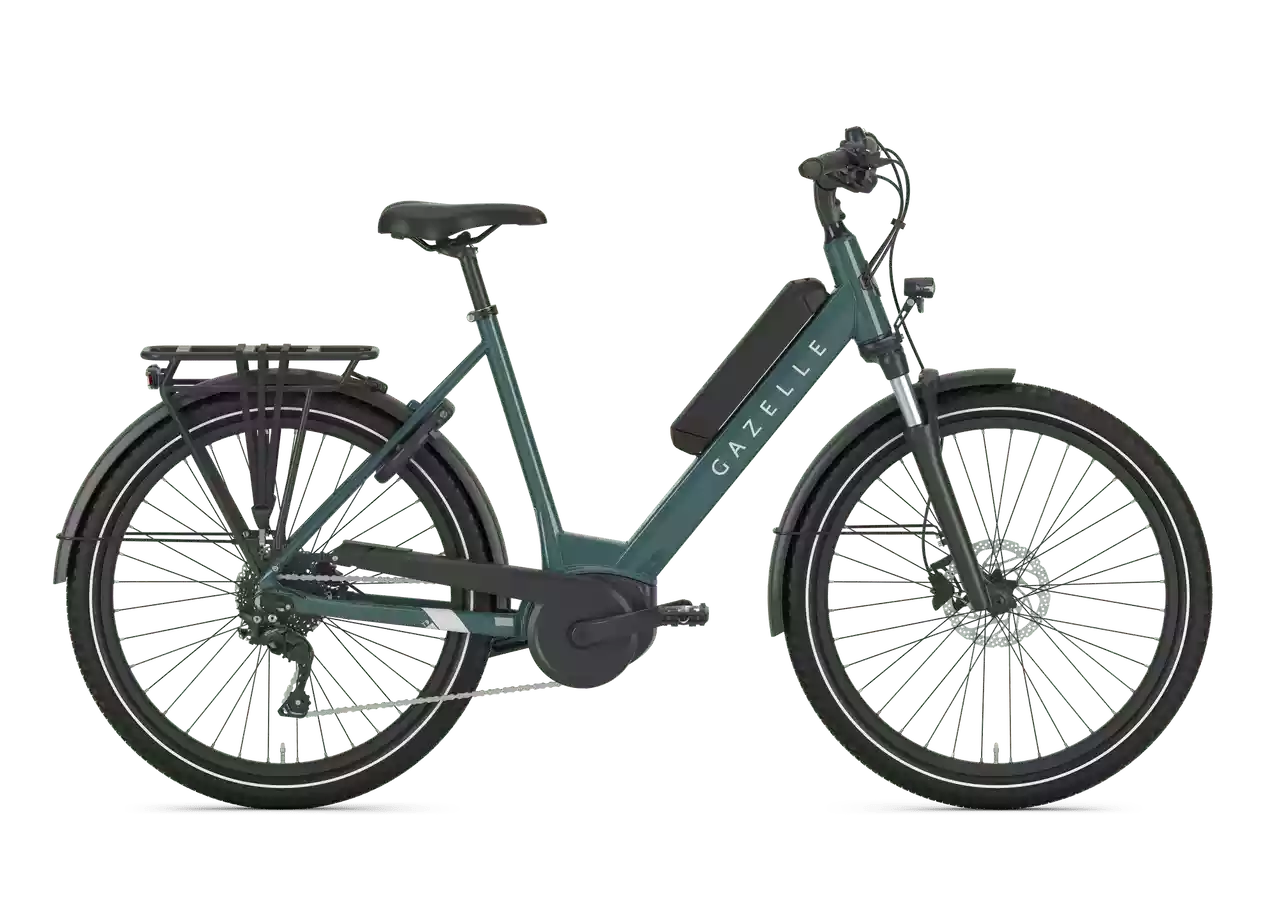
A. Best Overall Beginner E-Bike
Gazelle Medeo City T9
- Price Range: ~$2,299–$2,600
- Motor/Battery: Bosch Active Line mid-drive, 400Wh battery
- Top Speed: 20 mph
- Weight: 48.1 lbs
Why It’s Great for Beginners:
The Medeo City T9 nails the sweet spot between comfort, performance, and ease of use. Its smooth, quiet motor and stable frame make it approachable even if you haven’t biked in years. Upright posture and integrated features (rack, lights, fenders) make it ready for city life or weekend cruises.
✅ Pro Tip: Mid-drive motors like Bosch offer a more natural, balanced ride—perfect for longer commutes or mild hills.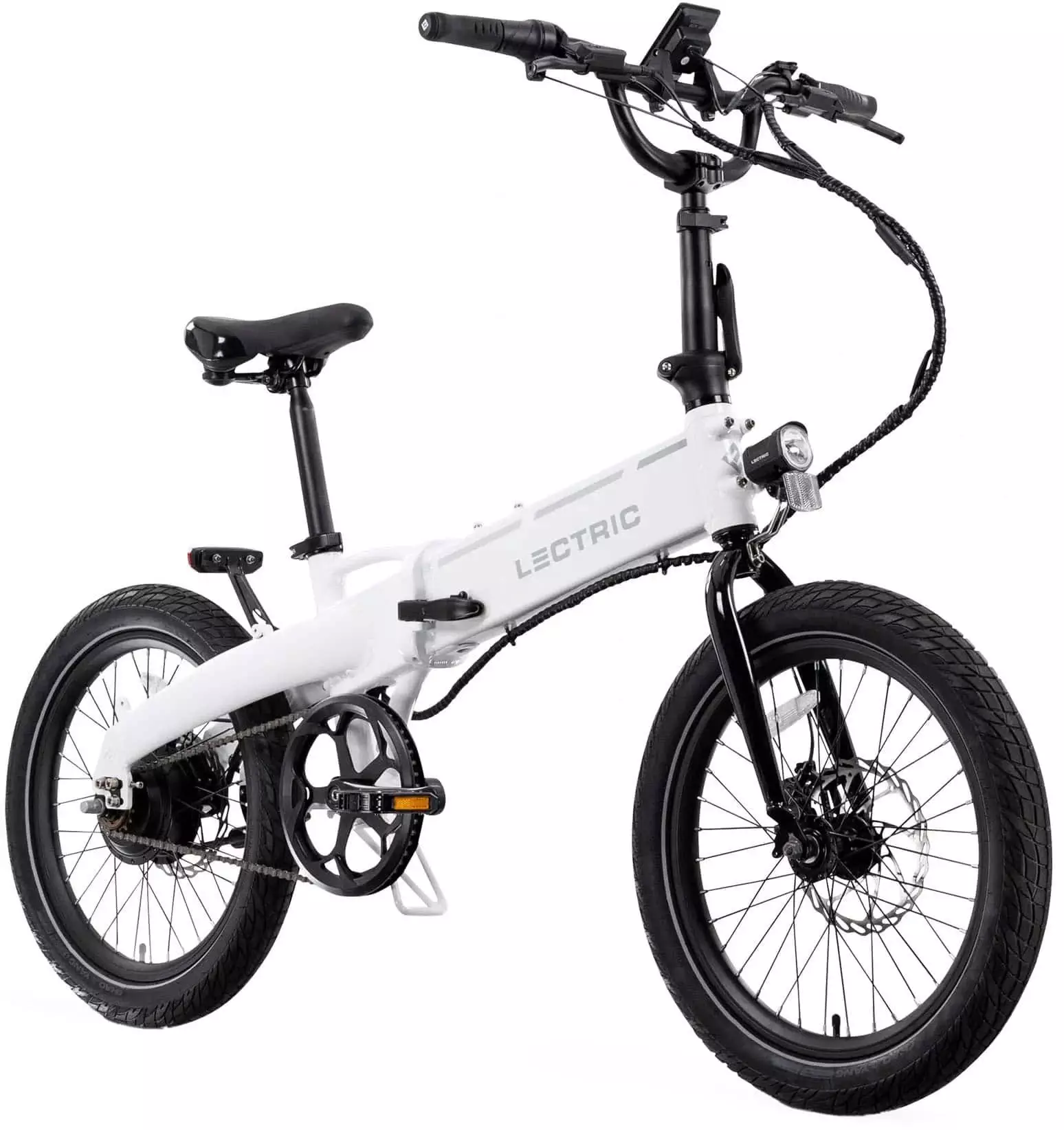
B. Best Budget E-Bike Under $1,000
Lectric XP Lite 2.0
- Price: $799
- Motor: 300W rear hub (peak 720W)
- Range: Up to 45 miles (80 with extender)
- Weight: 49 lbs
Why It’s a Top Pick for Budget Riders:
Affordable without feeling “cheap,” the XP Lite is ideal for students, new commuters, or anyone e-curious. Despite the price, it delivers real range and power, plus hydraulic disc brakes—a rare find under $1,000.
Watch Out For:
Single-speed gearing means it's best for flat areas. No suspension, but the ride remains smooth thanks to wide tires and stable geometry.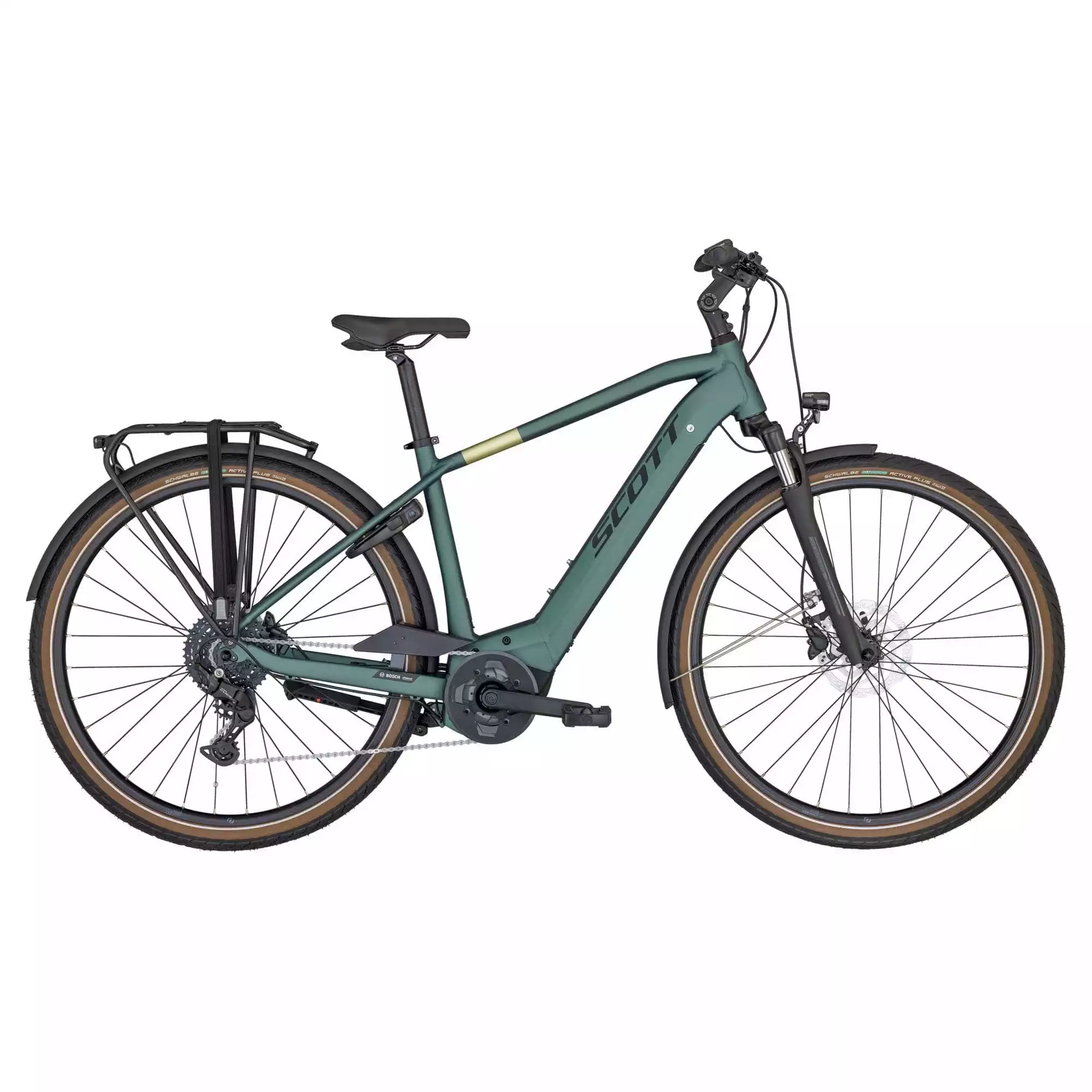
C. Best Step-Through E-Bike for Easy Mounting
Scott Sub Active eRide
- Motor/Battery: Bosch Active Line mid-drive, 400Wh
- Comfort Features: Suspension fork, wide tires, upright handlebars
- Extras: Built-in lock, lights, fenders, rear rack
Best For:
Seniors, shorter riders, or anyone who wants a stress-free, easy-on-and-off design. The frame is ultra-low and intuitive to mount, making it a favorite for comfort-first beginners.
⚙️ Pro Tip: Step-through bikes are especially helpful if you’ll be stopping frequently (errands, city riding, etc.).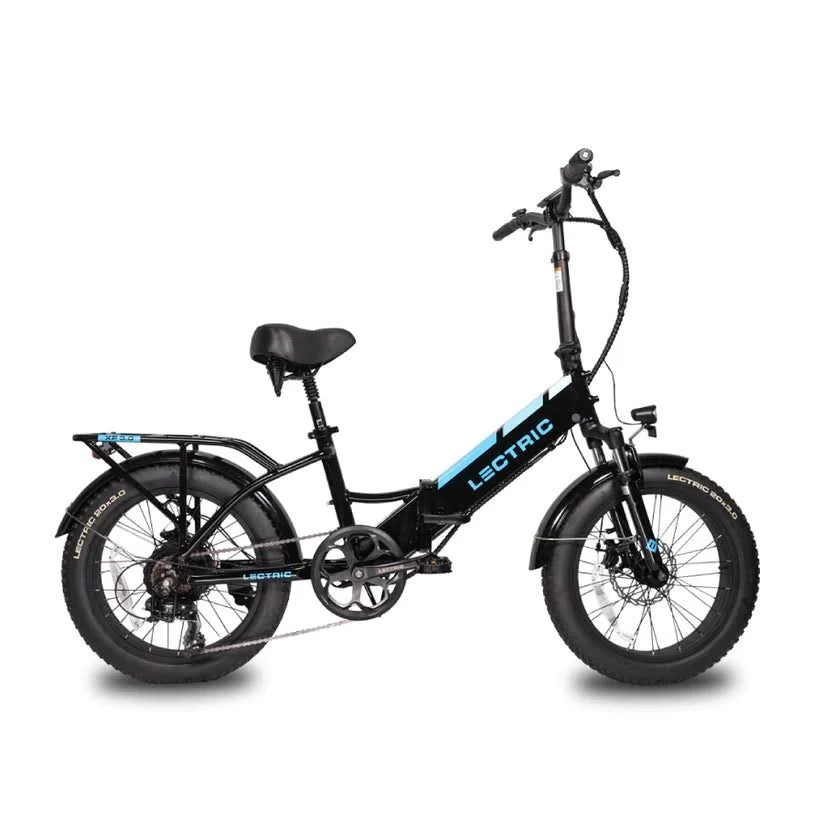
D. Best Folding E-Bike for Portability
Lectric XP 3.0 Step-Thru
- Folded Size: 37" x 18" x 28"
- Motor: 500W rear hub, ~500Wh battery
- Range: 20–45 miles
- Weight: 64 lbs
Perfect For:
Apartment dwellers, RV travelers, or anyone who wants to stash a bike in a closet or car trunk. It arrives fully assembled, folds quickly, and is easy to transport.
Why It’s Beginner-Friendly:
Great power-to-weight ratio, adjustable seating, and a very approachable price make this a top folding choice.
E. Best E-Bike for Urban Commuting
Cyrusher Kommoda 2.0
- Motor: 750W rear hub
- Battery: ~768Wh (varies by build)
- Range: Up to 68 miles
- Top Speed: 28 mph (Class 3)
- Commuter Perks: Integrated lights, fenders, suspension, cargo rack
Why Urban Riders Love It:
From stoplights to potholes, the Kommoda handles urban terrain with ease. It’s powerful yet easy to control, and its included accessories make daily commuting smoother—and safer.
🚲 Note: If you're new to higher speeds (28 mph), try starting with a lower assist level while getting comfortable.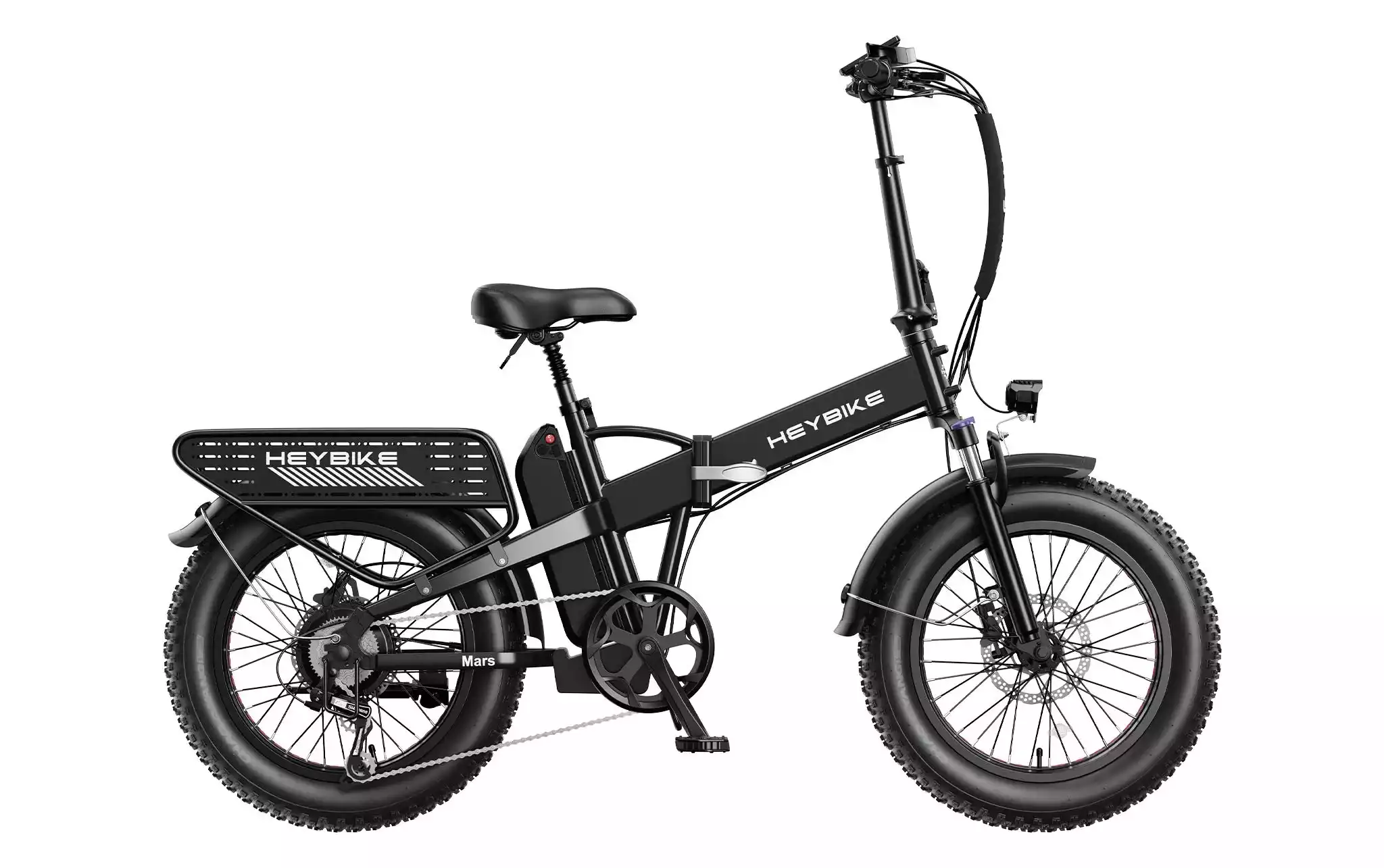
F. Best Trail-Ready Beginner E-Bike
Heybike Mars 2.0
- Price: $999
- Motor/Battery: 500W hub motor, 624Wh battery
- Range: ~45 miles
- Build: Front suspension, 4” fat tires, folding frame
Beginner-Friendly Dirt Riding:
Not quite a mountain bike, not just a city cruiser—the Mars 2.0 is perfect for gravel trails, park paths, and mild off-road exploring. The fat tires add grip and confidence while the build stays accessible and compact.
Good to Know:
No technical gear systems or advanced shocks—just the right mix of toughness and simplicity for your first trail adventure.
Quick Reference Table: Best Beginner E-Bikes 2025
| Category | Model | Price | Motor/Battery | Range | Highlights |
|---|---|---|---|---|---|
| Overall Pick | Gazelle Medeo City T9 | $2,299+ | Bosch mid / 400Wh | 35–50 miles | Comfort, mid-drive, premium feel |
| Budget Choice | Lectric XP Lite 2.0 | $799 | 300W rear / 48V | Up to 45 mi | Light, foldable, great value |
| Step-Through | Scott Sub Active eRide | $2,000+ | Bosch mid / 400Wh | 40+ miles | Low frame, comfort, city-ready |
| Folding | Lectric XP 3.0 Step-Thru | $999 | 500W rear / 500Wh | 20–45 mi | Fully assembled, compact, adjustable |
| Urban Commuter | Cyrusher Kommoda 2.0 | $1,699 | 750W rear / 768Wh | Up to 68 mi | Fast, loaded with commuter features |
| Trail Explorer | Heybike Mars 2.0 | $999 | 500W rear / 624Wh | ~45 mi | Fat tires, trail-friendly, affordable |
Whether you're commuting to work, hitting the park on weekends, or just getting back into biking, these entry-level e-bikes offer serious value, comfort, and fun. Each one is beginner-approved and built to make your first rides safe, smooth, and exciting.
Ready to ride? Let the right e-bike take you further—without the stress or the sweat.
Comparison Table of Recommended Models
Not sure which beginner e-bike is right for you? Let’s make it easy. Below is a quick side-by-side comparison of the best entry-level e-bikes of 2025, so you can find the perfect match for your budget, lifestyle, and riding goals.
This chart breaks down key features like price, motor type, range, weight, and frame style, helping you narrow your choices fast.
✅ Pro Tip: Don’t just look at speed or power—frame style, weight, and comfort features often matter more for day-to-day use, especially for new riders.
| Model | Price | Motor Type | Battery Range | Weight | Frame Style | Best For |
|---|---|---|---|---|---|---|
| Gazelle Medeo T9 City | $2,299+ | Bosch mid-drive | 35–50 miles | 48.1 lbs | Step-through | All-around beginner comfort |
| Lectric XP Lite 2.0 | $799 | 300W rear hub | Up to 45 miles* | 49 lbs | Low-step/folding | Budget commuting, students |
| Scott Sub Active eRide | ~$2,000+ | Bosch mid-drive | 40+ miles | 51 lbs | Extra-low step | Seniors or accessibility-focused riders |
| Lectric XP 3.0 ST | $999 | 500W rear hub | 20–45 miles | 64 lbs | Folding step-thru | Compact storage, mixed transit |
| Cyrusher Kommoda 2.0 | $1,699 | 750W rear hub | Up to 68 miles | 73 lbs | Step-through | Urban riders, long-range commutes |
| Heybike Mars 2.0 | $999 | 500W rear hub | ~45 miles | 66 lbs | Folding fat-tire | Beginner-friendly trail or gravel use |
*With optional range extender, where available.
This table is your at-a-glance e-bike buying guide for 2025. Whether you want the best value, the easiest ride, or something trail-ready, you’ll find a solid match in this lineup.
Next up: Let’s walk through some buying tips to make sure your first e-bike is a smooth, smart investment.
Buying Tips for First-Time E-Bike Riders
Buying your first e-bike is exciting—but it can also feel overwhelming. With so many brands, styles, and features, how do you choose the right one? This section breaks down practical tips to help you shop smart and confidently.
Whether you’re browsing online or heading to a local bike shop, this beginner e-bike buying guide will help you avoid regrets and get rolling faster.
Test Ride Before You Commit (If You Can)
Nothing beats actually sitting on a bike and taking it for a spin. A test ride lets you feel the fit, check how the motor kicks in, and see if the ride matches your comfort level.
Where to test ride:
- Local e-bike shops or outdoor retailers like REI
- E-bike demo events hosted by brands or city cycling groups
- Friends or neighbors who already own a model you’re eyeing
✅ Pro Tip: Ask to try different assist levels and braking systems during your ride—it’ll help you figure out what feels most natural.
Online vs In-Store Shopping
Both options have pros and cons, especially for first-time buyers.
Buying in-store:
- Pro: Test rides, in-person service, and easy returns
- Con: Higher prices or smaller selection
Buying online:
- Pro: Better deals, more variety, direct-to-door delivery
- Con: Must assemble yourself or take to a shop; no hands-on help
If you go the online route, choose brands known for solid support and clear return policies—like Aventon, Lectric, or Ride1Up.
Check the Warranty & Return Policy
Before clicking “buy,” double-check the fine print. Reliable brands will back their bikes with clear warranties—often 1 to 2 years on the frame, battery, and motor.
Look for:
- At least 30 days for returns or exchanges
- U.S.-based customer service or live chat support
- Easy access to replacement parts or repair partners
This is your safety net if something feels off after your first few rides.
Don’t Forget the Essentials: Accessories to Budget For
Your e-bike is just the beginning—there are a few key accessories you’ll need to ride safely and comfortably:
- Helmet (a must-have!)
- Bike lock (U-locks or folding locks are best)
- Bike pump and basic multi-tool
- Front and rear lights (if not already built-in)
- Mirror for urban riders
- Optional: Rear rack bags, water bottle cage, phone mount
🛠️ Pro Tip: Some direct-to-consumer bikes come with a basic tool kit. Check the box before buying extra gear.
Buying your first e-bike doesn’t have to be complicated. With the right mindset, a short checklist, and a few test rides, you’ll be ready to ride with confidence.
Next up: Let’s cover a few beginner mistakes to avoid—so you can skip the learning curve and hit the road smoothly.
Common Mistakes First-Time Buyers Should Avoid
Buying your first e-bike should be exciting—not stressful. But with so many options, it’s easy to fall into a few common traps. This quick checklist will help you steer clear of rookie mistakes and feel more confident in your decision.
Think of it as your no-regrets e-bike buying guide for 2025.
1. Buying Too Much Bike
It’s tempting to go big on your first e-bike—super high speeds, advanced motor systems, top-shelf components. But more isn’t always better.
Why it’s a mistake:
- You’ll likely overpay for features you don’t need
- A powerful bike can feel intimidating or hard to control
- Heavier bikes are harder to store and transport
✅ Pro Tip: Start with a Class 1 or 2 e-bike with pedal assist and/or throttle. These are simpler, safer, and more beginner-friendly.
2. Ignoring Comfort and Frame Fit
The best e-bike in the world is useless if it doesn’t feel good to ride. Fit and comfort should be at the top of your list—especially if you plan to ride daily.
Don’t forget:
- Step-through frames are great for casual, urban, or senior riders
- Adjustable handlebars and seat posts let you dial in your riding position
- Always check weight capacity and frame size guidelines before buying
If a bike doesn’t match your body, it can cause discomfort, fatigue, or even safety issues over time.
3. Underestimating Battery Range or Charging Needs
Many new riders misjudge how far they’ll ride—or how often they’ll need to recharge.
Avoid this by:
- Choosing a bike with a minimum 20–40 mile range
- Factoring in hills, rider weight, and assist level
- Understanding charge time (some batteries take 4–6 hours or more)
Also, make sure your riding habits fit your battery. If you plan to ride daily or on longer routes, consider a removable battery you can charge at work or indoors.
4. Overlooking After-Sales Support and Spare Parts
It’s easy to focus on price and specs, but don’t forget what happens after you buy.
Important support features:
- Clear warranty terms (especially on battery and motor)
- U.S.-based customer service or tech support
- Availability of replacement parts or authorized repair centers
Stick with reputable e-bike brands that offer solid post-purchase service—not just flashy specs.
🛠️ Pro Tip: Check online reviews for mentions of real-life customer service experiences—not just ride quality.
Final Thought
Buying your first e-bike doesn’t have to be perfect—but avoiding these common mistakes can make the ride smoother, safer, and a lot more fun. Focus on comfort, practicality, and your actual riding needs—and you’ll be rolling with confidence in no time.
Next: Let’s wrap up with a few bonus resources and tools to help you compare, test, and ride smarter.
Maintenance Tips for New Riders
Keeping your e-bike in great shape doesn’t have to be complicated or expensive. In fact, a few simple habits can keep your bike running smoothly for years—without any technical skills needed.
This quick guide walks you through basic e-bike maintenance for beginners, including monthly checks, battery care, and when it’s time to call in a pro.
Easy Monthly Maintenance Checks
You don’t need a mechanic’s toolkit to stay on top of your e-bike’s health. These quick inspections take just minutes and can prevent bigger issues down the road:
- Tires: Check air pressure (usually 40–60 PSI) and inspect for cracks or embedded debris
- Brakes: Test levers for firmness; make sure pads aren’t worn down
- Chain: Keep it lightly lubricated and free of rust or gunk
- Lights & Display: Confirm everything powers on and all buttons respond properly
✅ Pro Tip: Set a calendar reminder for a monthly check-up. It’s quick, and your bike will thank you for it.
DIY vs. Bike Shop: Know When to Call the Pros
Some fixes are simple. Others? Best left to trained hands—especially when electronics are involved.
DIY-friendly tasks:
- Inflating tires
- Adjusting your seat or handlebars
- Cleaning the frame and drivetrain
- Installing lights or accessories
Time to visit a shop:
- Brake system replacements or hydraulic bleeds
- Wheel truing (fixing wobbly wheels)
- Motor or electrical issues
- Firmware updates for mid-drive systems
Many e-bike shops offer first-service tune-ups within 30–60 days of purchase—take advantage of them!
Battery Care 101
Your battery is the heart of your e-bike. Treat it well, and it’ll last for years. Most modern batteries are lithium-ion and can handle hundreds of charge cycles—but a few best practices go a long way.
Battery basics:
- Don’t let it drain to zero—recharge around 20–30% remaining
- Store indoors when not in use, especially in extreme heat or cold
- Avoid full charges overnight—unplug once it hits 100%
- Use the charger provided by the manufacturer to avoid damage
⚡ Pro Tip: If you’re not riding for a while, store the battery at about 60% charge and check it monthly.
Regular maintenance helps your e-bike stay safe, ride better, and avoid costly repairs. A little time each month goes a long way—so treat your ride right and it’ll return the favor mile after mile.
Up next: Let’s explore some additional tools, guides, and resources that’ll make your e-bike journey even smoother.
A Smart, Fun Start to E-Bike Riding
Entry-level e-bikes are one of the easiest—and most fun—ways to dive into the world of electric cycling. Whether you're commuting, cruising trails, or just looking for a fresh way to move, there’s a beginner-friendly model built for your lifestyle.
Remember: the best e-bike for beginners isn’t the flashiest—it’s the one that fits your needs, feels good to ride, and keeps things simple.
Quick recap:
- Start with comfort, ease of use, and battery range in mind
- Don’t overpay for speed or features you won’t use yet
- Test ride when you can—and buy from brands with solid support
- Take care of your bike with basic maintenance and battery tips
✅ Pro Tip: You don’t need the “perfect” bike—just the right one to get started. You can always upgrade later as your riding style evolves.
Ready to ride?
Explore our comparison guide above or check out your local e-bike shop to find your ideal beginner model. With the right entry-level e-bike, your next adventure is just a pedal away.
Additional Resources for New E-Bike Riders
Still doing your homework? Smart move. The more you know before you buy, the better your first e-bike experience will be. Below are some helpful resources to guide you—from choosing the right size to tracking battery range and finding local test rides.
Use these tools to shop with confidence and hit the road fully prepared.
Helpful Tools & Guides
- 🔧 Beginner E-Bike Sizing Guide
Find the right frame size based on your height and inseam—comfort starts with a good fit. - 🔋 E-Bike Battery Range Calculator
Estimate how far you’ll go on a single charge based on your weight, terrain, and assist level. - 📍 Find a Local E-Bike Test Ride Near You
REI, Aventon, Rad Power Bikes, and local bike shops often offer free test rides for beginners.
✅ Pro Tip: Bookmark a few trusted e-bike blogs or Reddit communities like r/ebikes to ask questions, compare bikes, and get real-world advice from other new riders.
Whether you're still comparing the best e-bikes for beginners or you're ready to buy, these tools can make your journey smoother, safer, and way more fun.
Need a next step? Head back to the comparison chart in section 4 or explore your favorite model's website to schedule a test ride today.
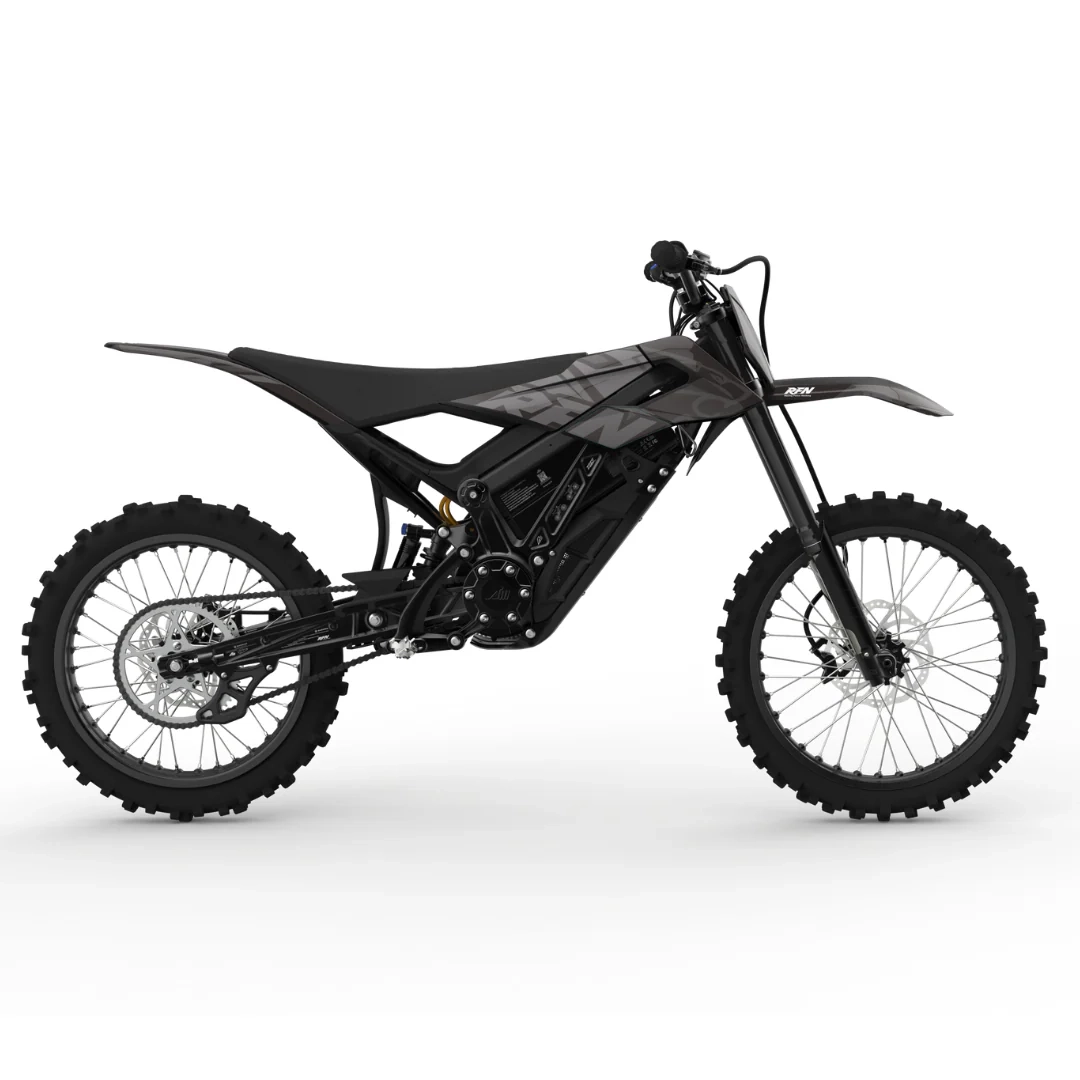
Dreaming of tearing up trails without the roar of a gas engine? Electric dirt bikes are leading a quiet revolution in off-road riding. With instant torque, zero emissions, and far less maintenance, they’re becoming the go-to choice for riders who want performance and sustainability.
This guide is built for anyone ready to hit the dirt—whether you're a total beginner, a seasoned rider looking to upgrade, or just someone who wants a fast, fun, and eco-friendly ride.
What to Look for in an Electric Dirt Bike
Before you pick your ride, it helps to know what matters most. Here are the key features to compare:
- Motor Power & Torque: Higher wattage = more speed and hill-climbing strength
- Battery Life & Range: Look for 40–70 mile range per charge, depending on ride style
- Suspension & Build: Quality suspension softens jumps and rough terrain
- Weight & Frame: Lightweight aluminum is easier to maneuver than steel
- Top Speed: Most e-dirt bikes range from 30–55 mph
- Terrain Compatibility: Choose tires and frame design that match your riding environment
Pro Tip:
If you're new to e-dirt bikes, look for models with adjustable ride modes so you can start slow and unlock full power later.
Not all electric dirt bikes are built the same—and choosing the right one can make or break your off-road experience. Whether you're bombing down trails or cruising forest paths, this e-bike buying guide breaks down the key features you actually need to understand.
Below are the essentials to compare when shopping for the best e-dirt bikes in 2025:
Motor Power & Torque
The motor is your engine—so power matters. Look for bikes with at least 2,000–5,000 watts of power for real off-road capability. Torque is what helps you climb steep hills and accelerate out of turns.
- More torque = better performance on rough trails and inclines
- Brushless motors tend to be quieter and more efficient
Pro Tip:
If you're a beginner, go for a model with multiple power modes so you can build confidence before unlocking full torque.
Battery Life & Range
Your battery controls how far you can ride. Most electric dirt bikes offer a range of 30 to 70 miles per charge, depending on terrain, rider weight, and speed.
- Swappable batteries are great for all-day adventuring
- Look for fast-charging (under 4 hours) if you're tight on time
If you plan to ride remote trails, range should be one of your top priorities.
Suspension & Handling
Unlike street e-bikes, dirt bikes need serious suspension to absorb impact from rocks, jumps, and uneven terrain.
- Go for dual suspension with at least 6–8 inches of travel
- Adjustable forks help you tune the ride for different terrain
Good suspension keeps you comfortable—and in control—when the trail gets rough.
Weight & Frame Design
Light bikes are easier to throw around, but heavier frames offer better stability at speed.
- Aluminum frames = lighter, more agile
- Steel frames = tougher, but heavier
Make sure the frame fits your size and riding style. If you’re smaller or new to off-roading, weight can affect how confident you feel on the bike.
Top Speed & Ride Modes
Speed matters—but control matters more. Most e-dirt bikes hit between 30 to 55 mph, with some racing models topping 60+.
- Look for adjustable ride modes: eco, sport, turbo
- Speed-limited modes are great for teens or cautious riders
Want to go full throttle? Just make sure your brakes and tires can handle it.
Tire Type & Terrain Compatibility
The right tires can make or break your ride. Choose based on the terrain you’ll tackle most often.
- Knobby tires = best for trails, dirt, and mud
- All-terrain tires = good balance for mixed surfaces
- Sand or snow? Look for wider tires with deep tread
Pro Tip:
If you’ll be riding in different conditions, look for bikes with easily swappable wheels or rims.
Rider Fit
E-dirt bikes come in all shapes and sizes—just like riders.
- Check recommended height and weight limits
- Look for adjustable seat height and handlebar reach
- Youth models are scaled down for safety and comfort
If you’re sharing a bike or still growing, choose a model with flexible sizing.
Quick Recap
When choosing an electric dirt bike, focus on what matches your needs:
- Speed? Look at motor wattage and top speed
- Long rides? Prioritize battery range and fast charging
- Rough trails? Suspension and tire type are key
- New rider? Keep it light and manageable with ride modes
Ready to find your perfect off-road match?
Keep reading to discover the top 10 best electric dirt bikes of 2025, handpicked for every type of rider.
Best Electric Dirt Bikes of 2025: Ranked List
Ready to meet the fastest, most capable electric dirt bikes of 2025? Whether you're looking for raw speed, trail-tuned handling, or teen-friendly designs, this list has a ride for you. Below are the top 10 e-dirt bikes ranked by performance, features, and value—so you can find your perfect off-road match.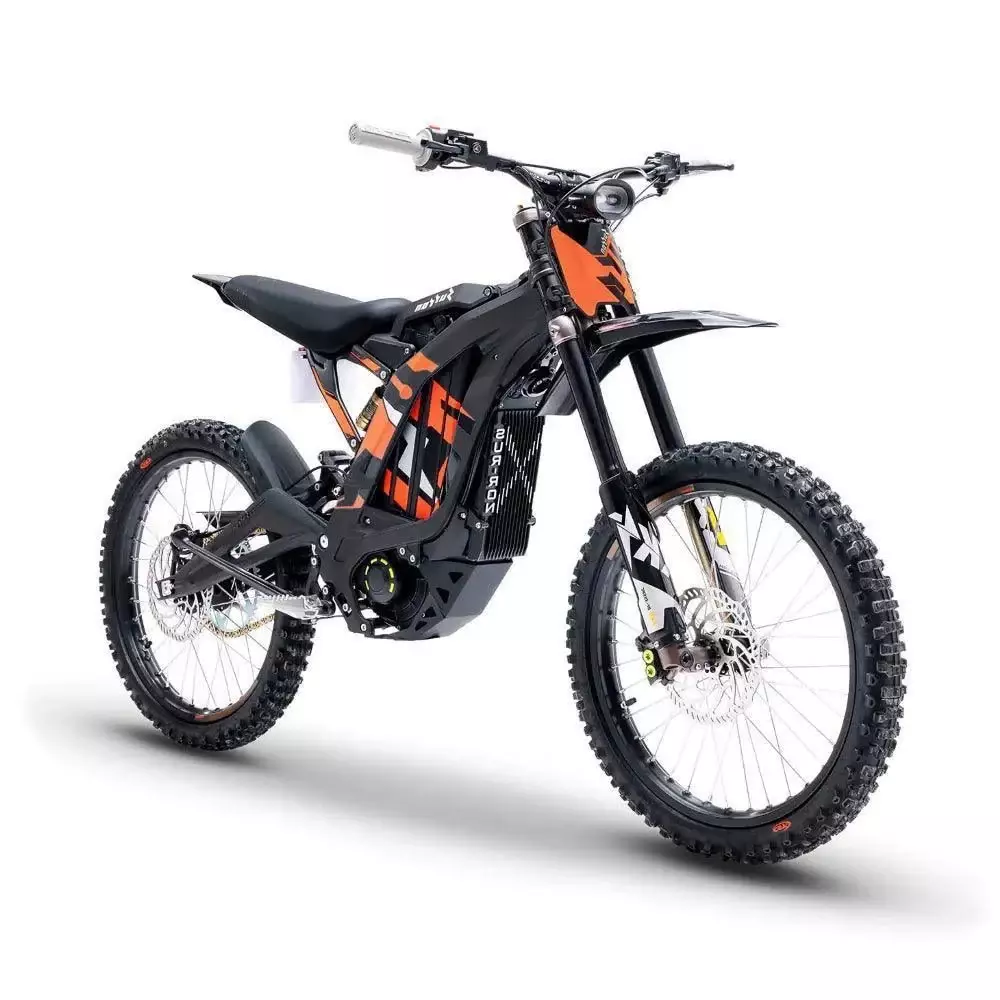
1. Sur Ron Light Bee X
Best all-around e-dirt bike for performance and value
- Motor: 8kW
- Battery: 60V 40Ah
- Top Speed: 46.6 mph
- Range: Up to 46.6 miles
- Weight: ~125.6 lbs
- Best for: Beginners, trail riders, daily use
Pros
✅ Fast charging (2 hrs)
✅ Excellent torque and handling
✅ Lightweight and beginner-friendly
✅ Regenerative braking
Cons
❌ Not ideal for long-distance trail riding
❌ Suspension may feel basic for hardcore riders
Price: ~$4,500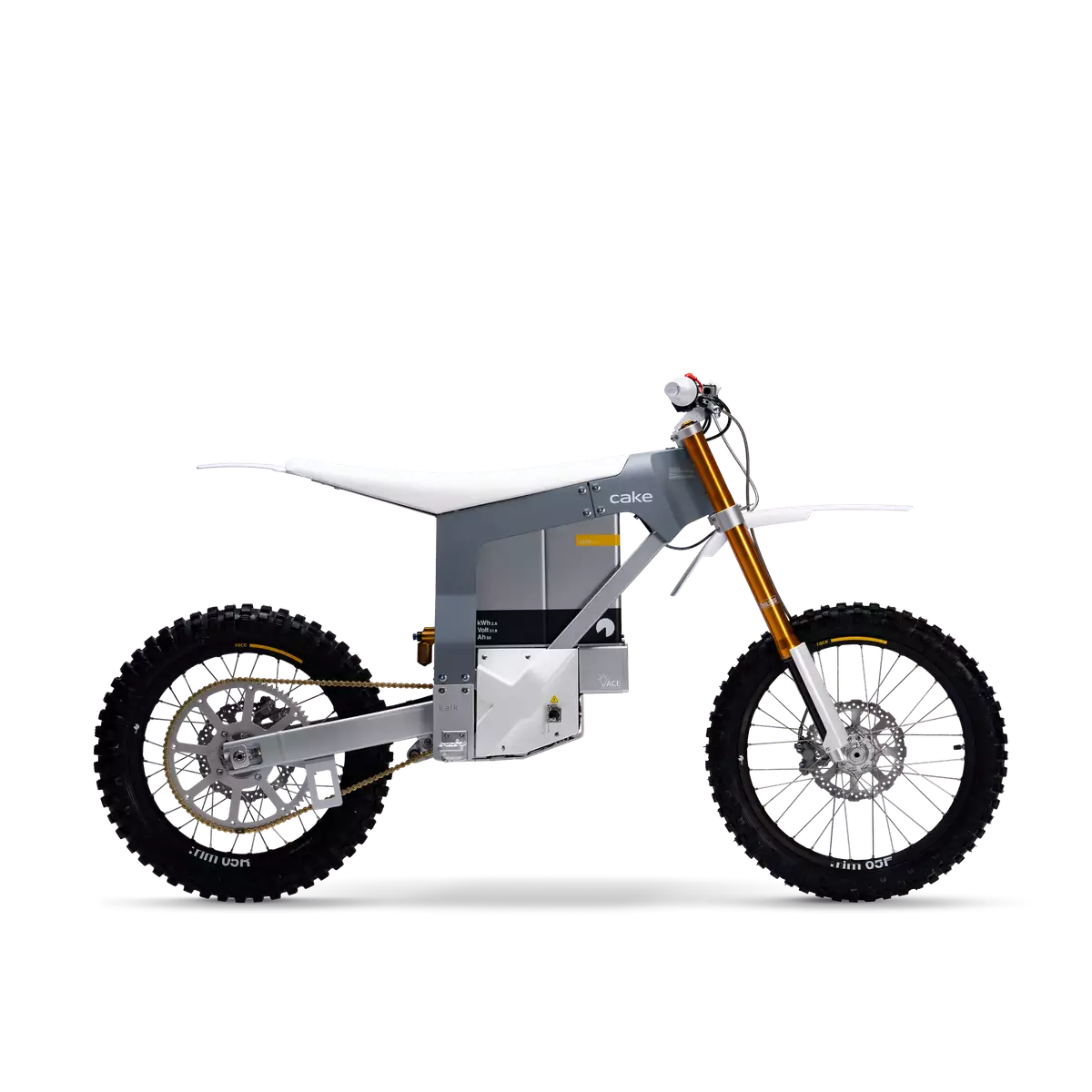
2. Cake Kalk INK
Premium pick for serious off-road riders
- Motor: 11kW
- Battery: 51.8V 50Ah
- Top Speed: 56+ mph
- Range: Up to 4 hours of ride time
- Weight: 174 lbs
- Best for: Advanced riders, performance-focused buyers
Pros
✅ Stylish, high-end build
✅ Huge torque (280Nm)
✅ Excellent for tech terrain
Cons
❌ Expensive
❌ Slightly heavier than Kalk OR
Price: ~$11,000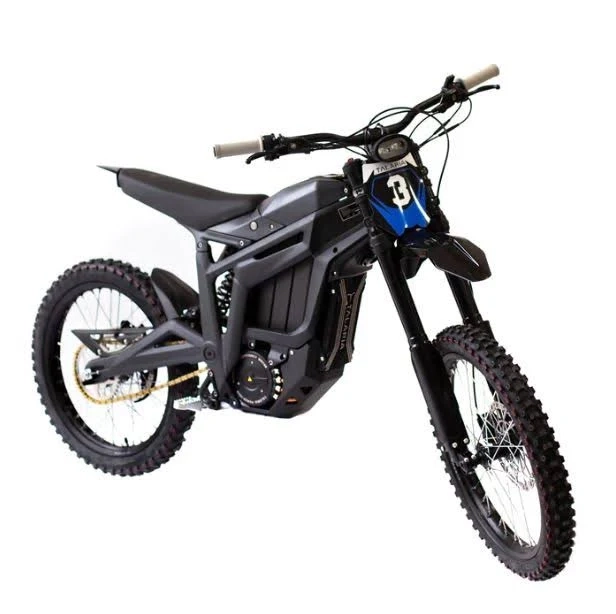
3. Talaria Sting R MX4
Great mid-range option with strong torque and battery life
- Motor: 8kW peak
- Battery: 60V 45Ah LG
- Top Speed: 53 mph
- Range: Up to 74 miles
- Weight: ~145 lbs
- Best for: Intermediate riders, trail adventurers
Pros
✅ High-capacity battery
✅ OLED dash + ride customization
✅ 4 levels of regen braking
Cons
❌ Heavier than similar models
❌ Not ideal for casual riders
Price: ~$4,800–$5,200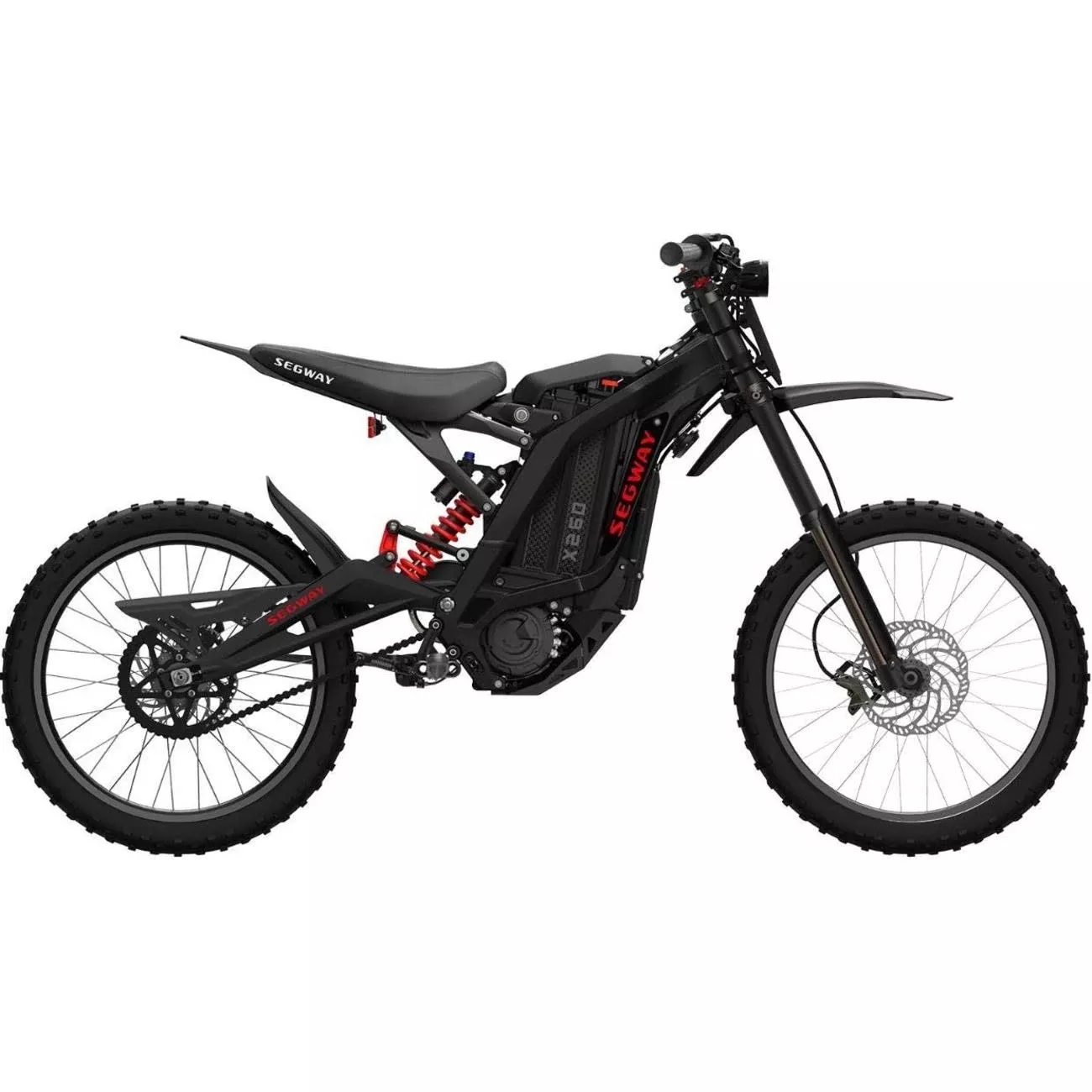
4. Segway X260 Dirt eBike
Feature-rich and highly tunable for all terrain types
- Motor: 5kW
- Battery: 60V 32Ah
- Top Speed: 46.6 mph
- Range: Up to 75 miles
- Weight: 121 lbs
- Best for: Customization lovers, tech-savvy riders
Pros
✅ App integration + ride tracking
✅ Long range
✅ Great all-terrain build
Cons
❌ Smaller frame may not fit tall riders
❌ Slightly underpowered for aggressive hill climbs
Price: ~$4,999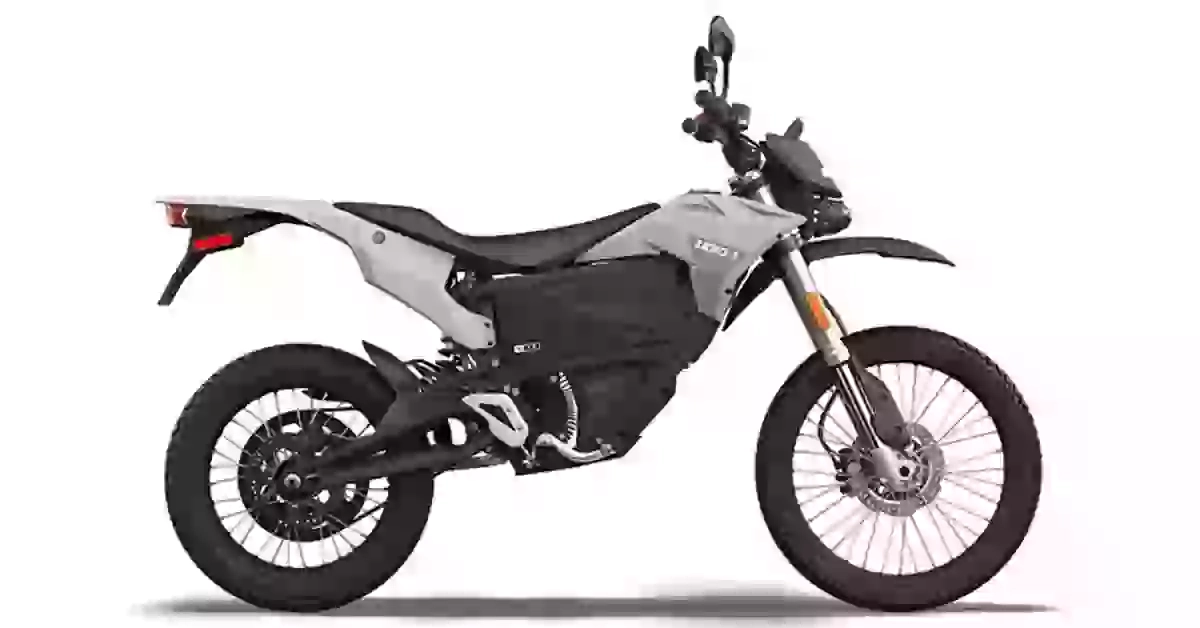
5. Zero FX ZF7.2
High-end e-moto crossover with insane power
- Motor: 34kW
- Battery: 7.2 kWh
- Top Speed: 85 mph
- Range: Up to 91 miles (city), 39 (highway)
- Weight: 289 lbs
- Best for: Dual-sport riders, serious speed enthusiasts
Pros
✅ Fully street legal
✅ Outstanding acceleration
✅ Strong off-road handling
Cons
❌ Very heavy
❌ Expensive (closer to motorcycle pricing)
Price: ~$12,000+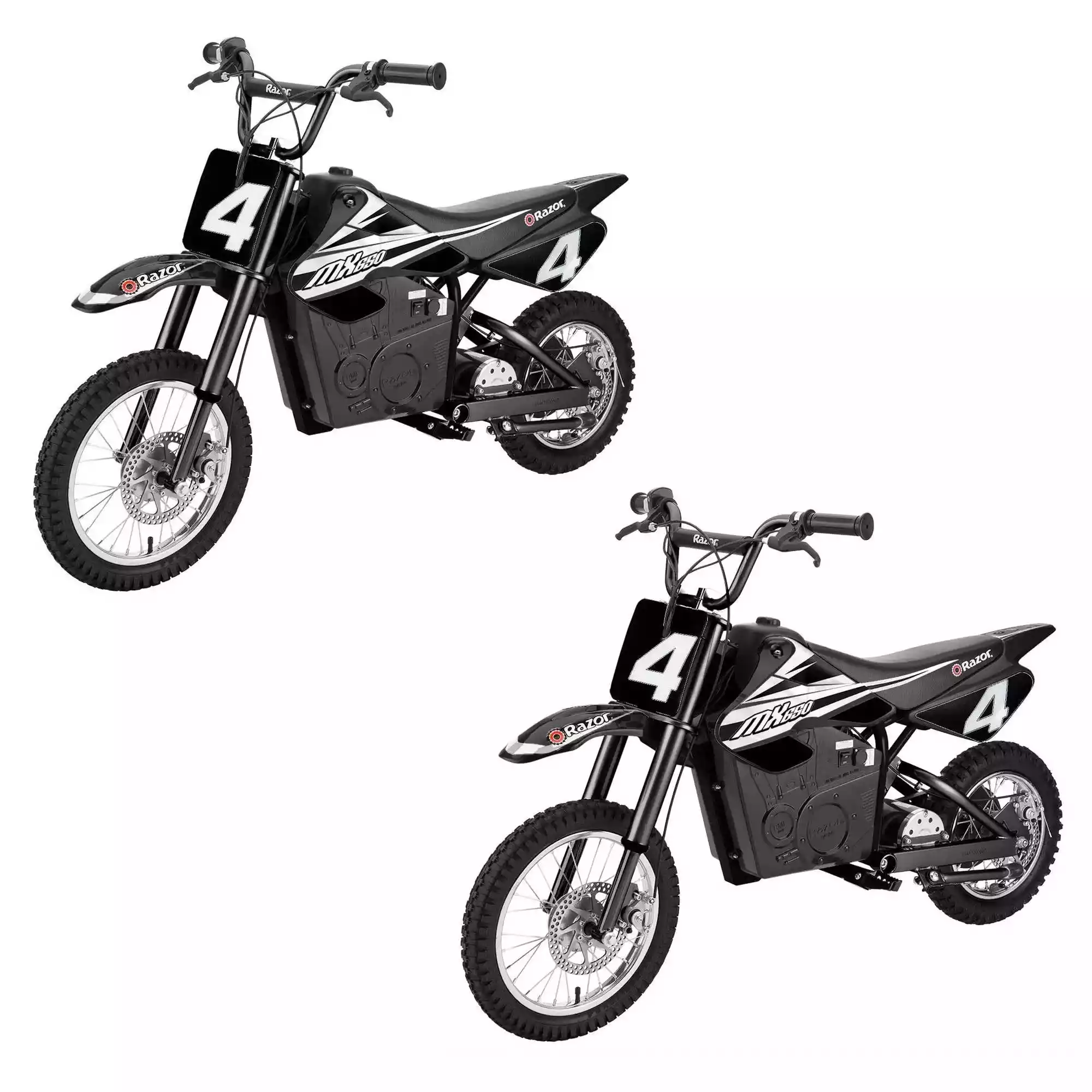
6. Razor MX650
Affordable pick for teens and light trail use
- Motor: 650W
- Battery: 36V
- Top Speed: 17 mph
- Range: 10 miles
- Weight: 98 lbs
- Best for: Kids and young teens
Pros
✅ Low price
✅ Safe for younger riders
✅ Easy to maintain
Cons
❌ Limited range and power
❌ Not suitable for adults or rough trails
Price: ~$700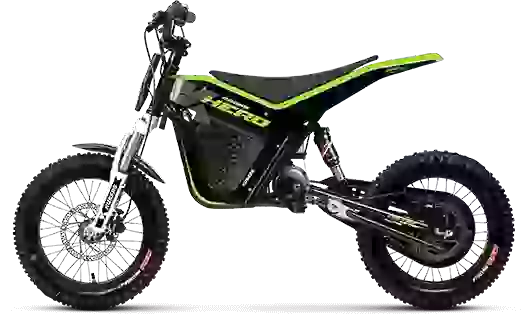
7. Kuberg Cross Hero
Lightweight and agile for youth or beginners
- Motor: 3kW
- Battery: 48V
- Top Speed: 22 mph
- Range: Up to 2 hours of ride time
- Weight: 77 lbs
- Best for: Youth riders, first-time dirt bikers
Pros
✅ Very light and maneuverable
✅ Adjustable seat height
✅ Responsive throttle
Cons
❌ Not for large riders
❌ Modest top speed
Price: ~$2,000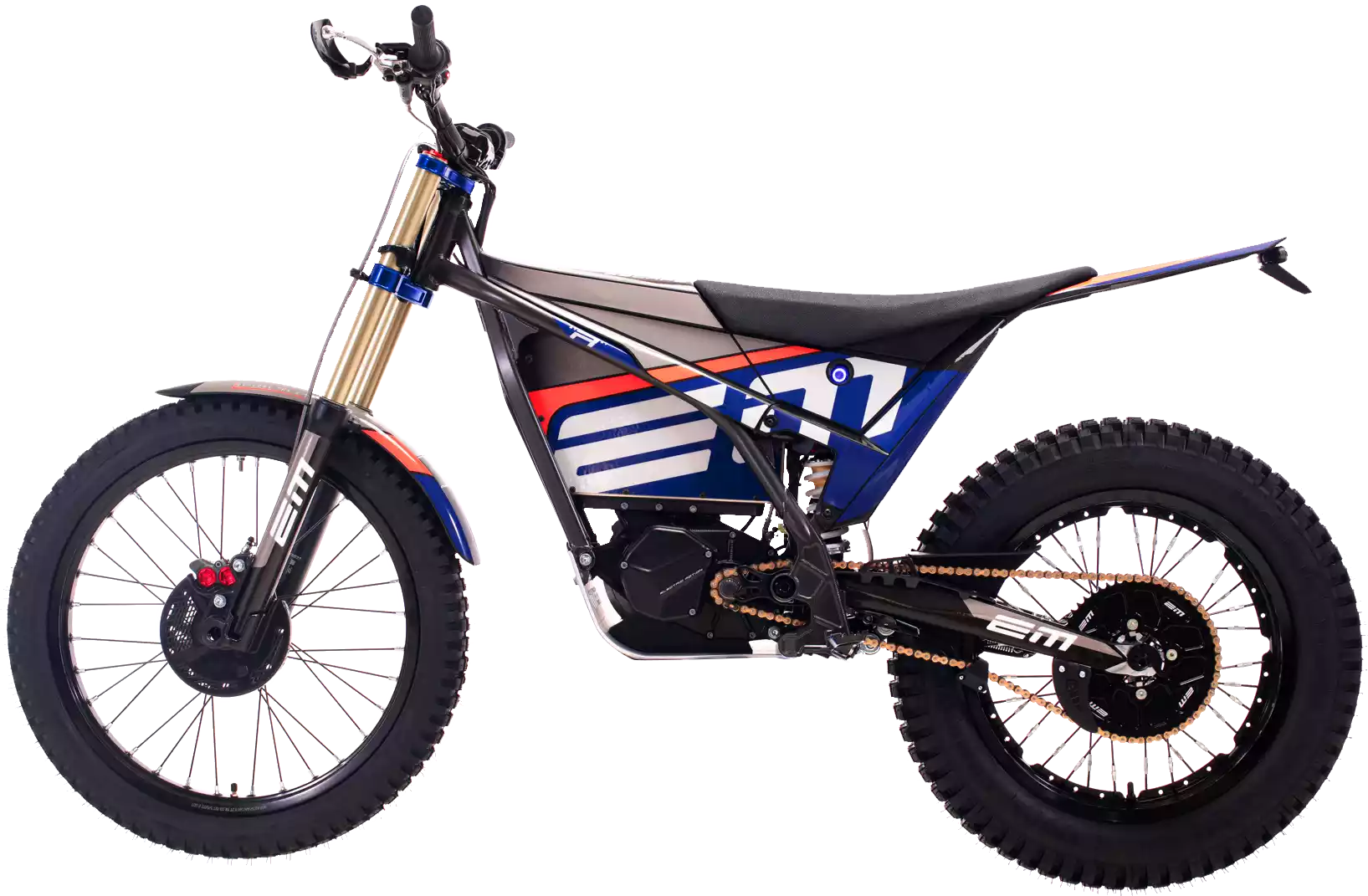
8. Electric Motion Escape R
Excellent for trials-style riding and mountain terrain
- Motor: 11kW
- Battery: 2.6 kWh
- Top Speed: 43 mph
- Range: 38 miles
- Weight: 165 lbs
- Best for: Trials, mountain paths, technical riding
Pros
✅ Built for agility and control
✅ Strong low-end torque
✅ Compact and stable on climbs
Cons
❌ Lower range than others
❌ Not built for speed
Price: ~$8,900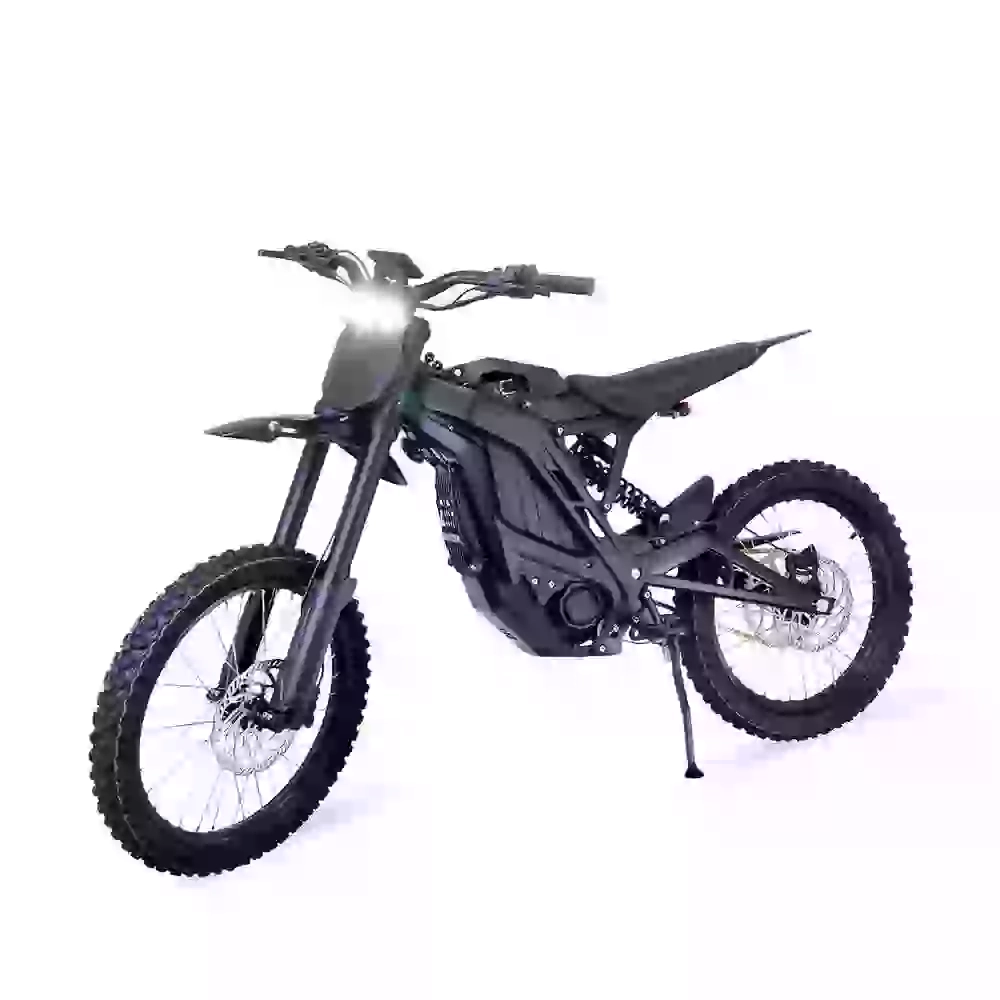
9. E-Ride Pro SS
Budget-friendly performance with trail-ready features
- Motor: 12kW
- Battery: 60V 45Ah
- Top Speed: 50+ mph
- Range: 50+ miles
- Weight: 128 lbs
- Best for: Budget riders, aggressive trail use
Pros
✅ Powerful motor for the price
✅ Modern styling + LED lighting
✅ Comfortable seat + solid suspension
Cons
❌ Limited brand recognition
❌ Smaller service network
Price: ~$3,800
10. Apollo RFN Ares
New contender with serious off-road capability
- Motor: 12kW
- Battery: 60V 43Ah
- Top Speed: 60 mph
- Range: 60 miles
- Weight: 132 lbs
- Best for: Off-road speed junkies, aggressive terrain
Pros
✅ Full-size motocross design
✅ Great performance-to-price ratio
✅ High top speed for trails
Cons
❌ Still establishing a track record
❌ Fewer upgrade/customization options
Price: ~$4,200–$4,600
Ready to ride?
Use this list to find the e-dirt bike that fits your style, speed, and skill level. From lightweight cruisers to full-power beasts, 2025 has something electric for every rider.
Best Electric Dirt Bikes by Rider Type
Not every electric dirt bike is built for the same rider. Whether you're brand new to the trail or a seasoned speed demon, choosing a bike that matches your experience and goals makes a huge difference. This section breaks down the best e-bikes for beginners, teens, pros, and commuters—so you get a ride that fits your style and your skill level.
Best E-Dirt Bikes for Beginners
New to off-road riding? Start with a bike that’s light, forgiving, and easy to handle. These picks offer smooth throttle control, moderate top speeds, and simple controls.
- 🏆 Sur Ron Light Bee X – Great all-around starter with dual ride modes
- 🥈 Talaria Sting R MX4 – A little more power, still manageable for quick learners
- 🥉 Kuberg Cross Hero – Lightweight and super easy to control
Pro Tip:
Look for bikes with Eco modes or adjustable power settings so you can grow into higher speeds over time.
Best Electric Dirt Bikes for Teens & Youth Riders
Safety, size, and speed control are top priorities for young riders. These bikes are designed to be fun without overwhelming new or smaller riders.
- 🏆 Razor MX650 – Affordable and safe with a top speed of 17 mph
- 🥈 Kuberg Cross Hero – Rugged build with adjustable fit for growing teens
- 🥉 Segway X160 (not X260) – Lighter and slightly smaller, ideal for young riders with experience
Quick Note:
Always check height and weight recommendations—many “youth” bikes are ideal for ages 13+ only.
Best Electric Dirt Bikes for Adults & Pros
If you’re looking for maximum power, speed, and serious off-road capabilities, these are the high-performance models to consider. Great for riders with motocross experience or a need for adrenaline.
- 🏆 Cake Kalk INK – Precision-built for trail racing and technical terrain
- 🥈 Zero FX ZF7.2 – Dual-sport beast with 85 mph top speed
- 🥉 Electric Motion Escape R – Trials-ready with advanced torque and traction control
Pro Tip:
Advanced bikes often require more weight control and throttle finesse. Ride modes help, but experience counts.
Best E-Dirt Bikes for Commuters & Mixed-Use Riders
Want one bike for work and the weekend? These dual-sport options are road-legal, comfortable on pavement, and still handle dirt like a champ.
- 🏆 Zero FX ZF7.2 – Built for both city and trail
- 🥈 Segway X260 – Smart tech meets versatile off-road handling
- 🥉 Apollo RFN Ares – Durable enough for commuting, fast enough for trail days
Callout:
Look for features like lights, mirrors, and street-legal status if you plan to ride on public roads.
Quick Summary
Choosing by rider type can save you money, increase safety, and help you enjoy your bike way more. Here’s your shortcut:
- Beginner? Start with the Sur Ron or Kuberg
- Teen? Razor MX650 is your safe bet
- Experienced? Go wild with the Kalk INK or Zero FX
- Mixed-use? Segway X260 gets the job done on both street and trail
Still not sure?
Keep reading for our buying tips and final checklist—or scroll back to the top 10 list to explore your favorites.
Meta Description: Keep your electric dirt bike running like a dream and stay safe while riding. Learn key maintenance steps, safety gear essentials, and legal tips in this e-bike guide.
E-Dirt Bike Maintenance & Safety Tips
So you’ve got the power and performance—now let’s make sure your electric dirt bike stays in top shape and keeps you safe on every ride. Whether you’re hitting trails or testing your limits on tough terrain, proper care and smart safety habits make all the difference.
In this quick guide, you’ll learn how to maintain your e-bike’s performance, what safety gear is non-negotiable, and a few legal basics every rider should know.
Battery Care: Power That Lasts
Your e-dirt bike’s battery is its heart—and treating it right will keep you riding longer and charging less.
- Charge after every ride but avoid leaving it plugged in overnight.
- Store your bike in a cool, dry place to protect the battery from heat damage.
- If you’re not riding for a while, keep the charge at 40–60% to prevent battery wear.
Pro Tip: Avoid draining your battery to 0%. Keeping it above 20% extends its life dramatically.
Tires, Brakes & Suspension: Trail-Ready Every Time
Before every ride, give your bike a quick check. It only takes a minute and could save you from a nasty crash or breakdown.
- Tires: Look for wear, punctures, and keep them inflated to the recommended PSI.
- Brakes: Squeeze the levers—if they feel loose or weak, check pads or get them tuned up.
- Suspension: Make sure it’s properly adjusted for your weight and riding style. Smooth travel = better control.
Essential Safety Gear: Ride Smart, Ride Protected
Electric dirt bikes are fast, fun, and powerful—which means your gear needs to match the ride.
Here’s what every rider should wear:
- Full-face helmet for maximum head and face protection
- Body armor or chest protectors to absorb impacts
- Durable gloves for grip and crash protection
- MX boots or reinforced riding boots to protect your ankles and shins
Pro Tip: Even on short rides, gear up. Most accidents happen close to home or on familiar trails.
Know the Law: Where Can You Ride?
E-dirt bikes blur the lines between pedal-powered bikes and motorcycles. Depending on where you live, rules vary.
- Off-road only models usually can’t be ridden on public roads.
- Some dual-sport electric dirt bikes are street-legal, but need mirrors, lights, and registration.
- Always check local e-bike laws before riding—especially in parks, forests, or city limits.
Staying legal isn’t just about avoiding fines—it’s about keeping trails open for everyone.
Keep Your Ride Safe & Smooth
Keeping your e-dirt bike in top shape and gearing up properly means more confidence, better rides, and fewer surprises on the trail.
Stay ahead of the curve with regular maintenance, the right safety gear, and a little legal know-how—and you’ll be set for every adventure ahead.
Ready to ride? Check out our full electric dirt bike buying guide and discover the best models for your style and skill level.
Meta Description: Discover the best electric dirt bikes by category and learn why switching to e-power is the future of off-road riding. See our top picks and tips for choosing the perfect ride.
Final Thoughts: Find the E-Dirt Bike That Fits You
Still deciding which electric dirt bike is right for you? Let’s wrap it all up with a quick recap to help you ride off with confidence.
Top Picks by Category
We’ve covered the best e-dirt bikes across every rider type—whether you’re just starting out or looking for high-performance thrills.
- Best for Beginners: Easy-to-control models with smooth power delivery
- Top Picks for Teens & Youth Riders: Lightweight, speed-limited options with strong safety features
- For Adults & Pros: Power-packed bikes with premium suspension and longer range
- Best for Commuters or Dual Use: Street-legal e-bikes that handle dirt and pavement
Looking for a more detailed breakdown? Our full e-bike buying guide walks through what to look for based on price, terrain, and riding goals.
Why Go Electric for Dirt Riding?
The benefits of switching to an electric dirt bike are hard to ignore:
- Instant torque means quicker takeoffs and better control on hills
- Low maintenance with no oil changes or engine rebuilds
- Quiet motors = no engine noise, more trail access, and less disruption
- Eco-friendly riding with zero emissions
It’s not just the future of dirt biking—it’s the smarter, more fun way to ride now.
Try Before You Buy
Every rider has a different feel for what makes a bike click. That’s why test rides are key.
- Visit local dealers or demo events
- Pay attention to fit, comfort, and how the power kicks in
- Match your bike to the terrain you’ll ride most—tight trails, open fields, or street-to-dirt transitions
Pro Tip: A bike that’s “best on paper” isn’t always the best for you. Go with what feels right when you ride.
Ride Electric, Ride Better
Choosing the best electric dirt bike for your style is easier when you know what to look for. Whether you want speed, comfort, or versatility, the e-bike world is full of exciting options—and growing fast.
Ready to ride? Dive into our latest 2025 electric bike reviews and find the perfect e-dirt bike to power your next adventure.
Meta Description: Explore bonus tools and tips to choose the best electric dirt bike for your needs. Includes comparisons, riding guides, and where to test-ride near you.
Additional Resources to Supercharge Your Search
Want to go even deeper before choosing your ride? Whether you're comparing specs or getting ready to hit the dirt, these extra tools and links will help you make the most informed—and confident—e-bike decision.
Quick Bike Comparison Chart
Skip the back-and-forth between tabs. We’ve compiled a side-by-side chart of the top 10 electric dirt bikes covered in this guide.
- See specs like motor power, top speed, range, and price
- Easily filter by rider level, terrain type, or legal use
- Great for narrowing down your shortlist
Pro Tip: Focus on torque (not just top speed) if you’re planning to ride uphill or on tight trails.
Brand Websites & Reviews
Want a second (or third) opinion? These links will help you check reviews and get direct info from the source.
- Official brand pages for detailed specs and warranty info
- Expert video reviews for real-world performance insights
- Customer reviews to learn what long-term owners love (or don’t)
Look out for review terms like throttle response, battery life under load, and handling on technical terrain—these give better insights than generic star ratings.
Beginner’s Guide to Off-Road Riding
New to dirt riding? No sweat. Our free off-road technique guide covers:
- Body positioning for stability on bumps and turns
- How to climb hills and descend safely
- Tips for managing traction on loose surfaces
It’s a quick, confidence-boosting read that’ll help you ride smarter from day one.
Where to Test-Ride or Buy Near You
Not sure if the bike fits you just right? Test rides are game-changers.
- Use our dealer locator tool to find nearby shops
- Check if brands offer demo days or trail events
- Ask dealers about return policies or try-before-you-buy options
Trying a bike out can answer more questions in 10 minutes than hours of research online.
Need help narrowing it down? Head back to our full electric dirt bike buying guide or browse the latest 2025 e-bike reviews to compare what’s best for your terrain, skill level, and budget.
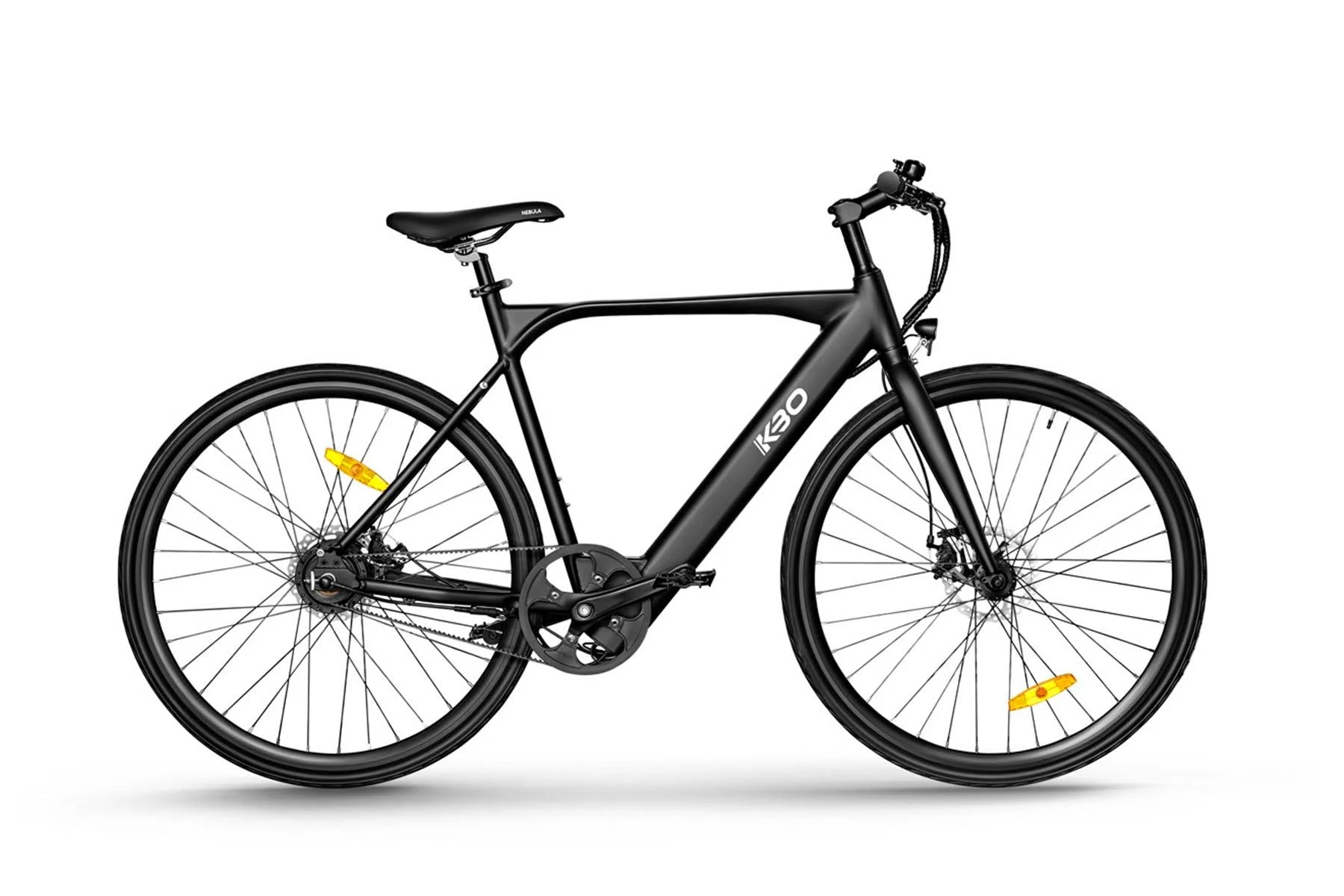
Are you curious about electric bikes but worried about breaking the bank? You’re not alone! E-bikes have exploded in popularity because they’re fun, eco-friendly, and perfect for everything from daily commutes to weekend adventures. But with so many options out there, finding a reliable e-bike under $1,000 can feel overwhelming.
That’s where this guide comes in. We’ve rounded up the top 10 budget-friendly electric bikes that deliver solid performance without emptying your wallet. Whether you’re a commuter, casual rider, or just starting out, you’ll find smart choices that prove you don’t need to spend a fortune to enjoy the perks of e-biking.
In this article, you’ll get clear info on each model’s specs, pros, and cons—plus expert tips to help you pick the best e-bike for your needs. Ready to find your perfect ride? Let’s dive in!
How We Selected These E-Bikes
Choosing the best e-bikes under $1,000 isn’t just about price — it’s about finding reliable rides that give you real value. So, how did we pick the top models for this list?
We focused on three main factors to make sure you get a solid, budget-friendly e-bike that won’t let you down:
- Price: Each e-bike had to be priced at or below $1,000.
- Reliability: We checked user reviews and expert opinions to find models known for durability and consistent performance.
- Features: Essential features like motor power, battery life, and build quality were key to ensure a smooth riding experience.
Key Specs We Evaluated
To help you ride with confidence, we looked closely at specs that matter most:
- Motor Power: Usually measured in watts, this determines how much help the bike gives when you pedal. More power means easier hills and faster speeds.
- Battery Life: How far you can go on a single charge is crucial. We looked for e-bikes offering a good balance of range and charging time.
- Weight: Lighter bikes are easier to handle and carry, especially if you need to bring your e-bike indoors or on public transport.
- Durability: Frame quality, brakes, and tires all play a role in safety and long-term use.
Who Are These E-Bikes For?
Our list includes e-bikes suited to a variety of riders:
- Daily commuters who want to cut down on car trips and beat traffic.
- Casual riders looking for a fun, eco-friendly way to explore neighborhoods and parks.
- Budget-conscious beginners eager to try electric biking without a big investment.
Pro Tip: If you plan on tackling hills or longer rides, prioritize e-bikes with higher motor power and longer battery range.
With these guidelines, you can trust that every e-bike on our list is a smart buy for 2025. Ready to discover your perfect match? Keep reading!
Top 10 E-Bikes Under $1,000 (2025): Affordable, Reliable, and Ready to Ride
Looking for the best e-bikes under $1,000 in 2025? You’re in the right place! Whether you want to cruise through the city, tackle weekend trails, or just enjoy an eco-friendly ride, we’ve rounded up the top budget-friendly electric bikes that deliver great value without breaking the bank.
In this e-bike buying guide, you’ll find detailed specs, pros and cons, and the ideal rider for each model — helping you make a confident choice. Ready? Let’s dive in!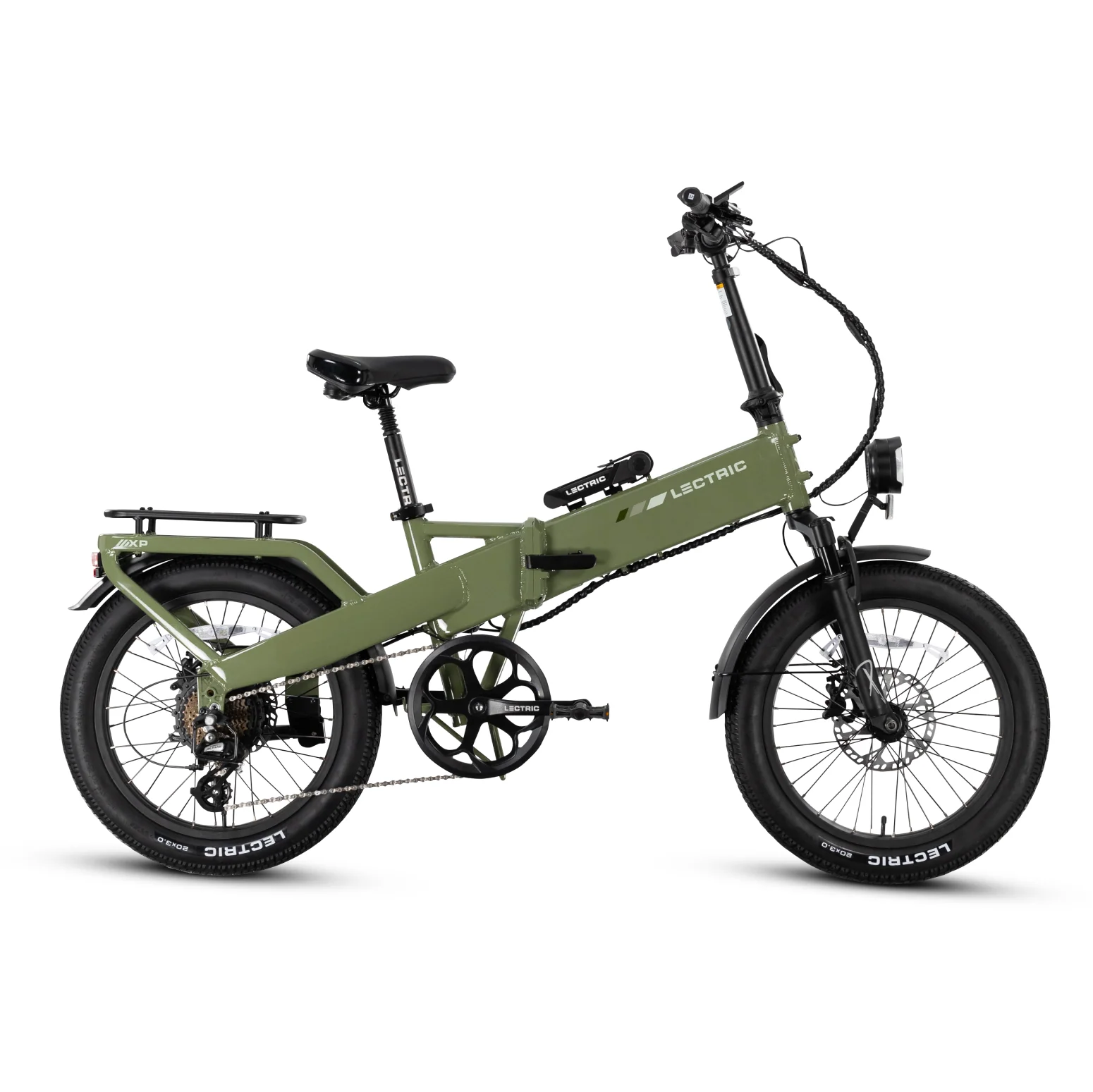
1. Lectric XP4
Price: $999
Key Specs:
- Motor: 500W (1,092W peak) rear hub
- Battery: 48V 10.4Ah
- Range: Up to 45 miles
- Top Speed: 20 mph (can be unlocked higher)
- Weight: ~60 lbs
- Frame: Foldable, step-thru aluminum with all-terrain tires
Pros:
- Excellent value for the price
- Powerful motor and solid battery
- Hydraulic disc brakes and front suspension
- Integrated lights, fenders, and rear rack
- Supports up to 330 lbs
Cons:
- Slightly heavy for a folding bike
- Limited color options
Ideal Use Case:
Perfect for first-time e-bike buyers, urban commuters, and weekend adventurers who want a versatile, foldable ride.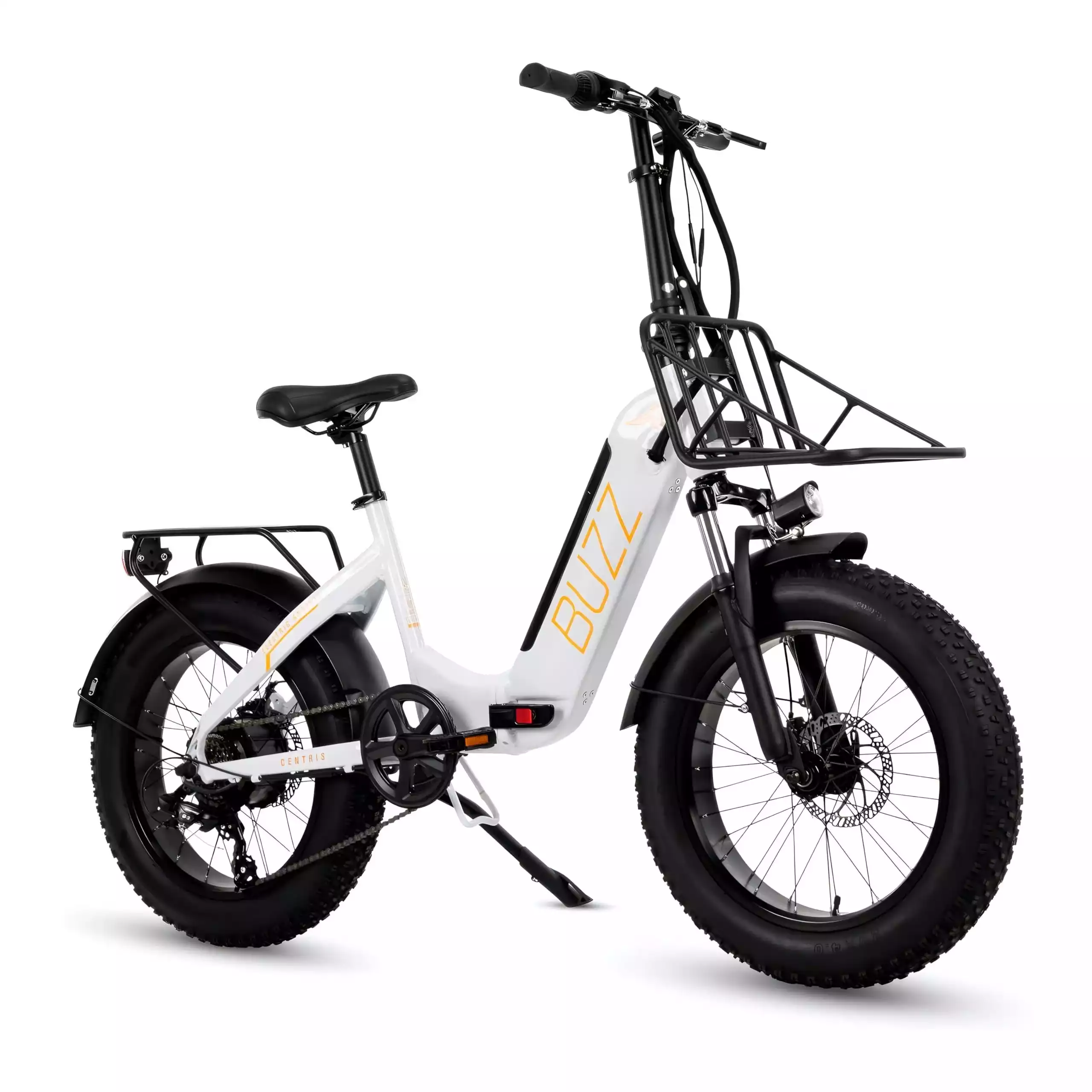
2. Buzz Centris Folding E-Bike
Price: $899
Key Specs:
- Motor: 500W rear hub
- Battery: 48V 10.4Ah
- Range: Up to 40 miles
- Top Speed: 20 mph
- Frame: Compact folding with magnesium wheels
Pros:
- Durable magnesium wheels
- Integrated rear rack for cargo
- Compact for easy storage
Cons:
- Basic mechanical disc brakes
- Not suitable for heavy hauling
Ideal Use Case:
Ideal for riders with limited storage space and light urban commuters.
3. Lectric XP Lite 2.0
Price: $799
Key Specs:
- Motor: 300W nominal (800W peak)
- Battery: 48V 7.8Ah
- Range: Up to 40 miles
- Top Speed: 20 mph
- Weight: 41 lbs
- Frame: Lightweight, foldable aluminum
Pros:
- Very lightweight and portable
- Affordable entry-level option
- Comes with integrated lights and display
Cons:
- Lower motor power than pricier models
- Shorter range if throttle is used often
Ideal Use Case:
Great for students and urban dwellers who prioritize portability and budget.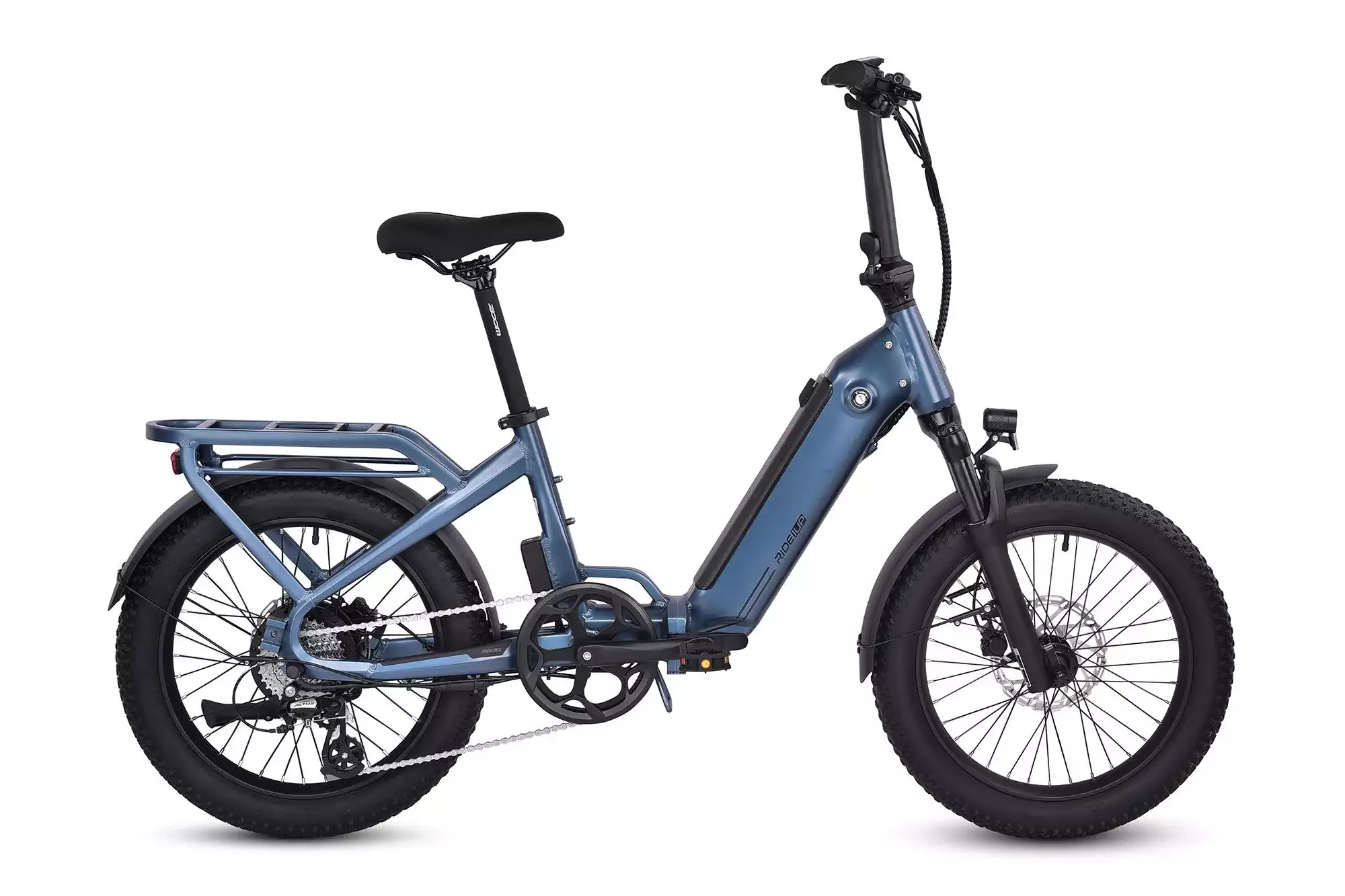
4. Ride1Up Portola
Price: $995 (on sale)
Key Specs:
- Motor: 750W rear hub
- Battery: 48V 14Ah
- Range: 30–45 miles
- Top Speed: 20 mph
- Weight: 59 lbs
- Frame: Foldable aluminum with fat-ish tires and suspension
Pros:
- Powerful motor with hydraulic brakes
- 8-speed drivetrain for varied terrain
- Compact folding design
Cons:
- Slightly heavy
- MSRP a bit over budget but often discounted
Ideal Use Case:
For riders wanting a quality folding bike with good ride comfort and power.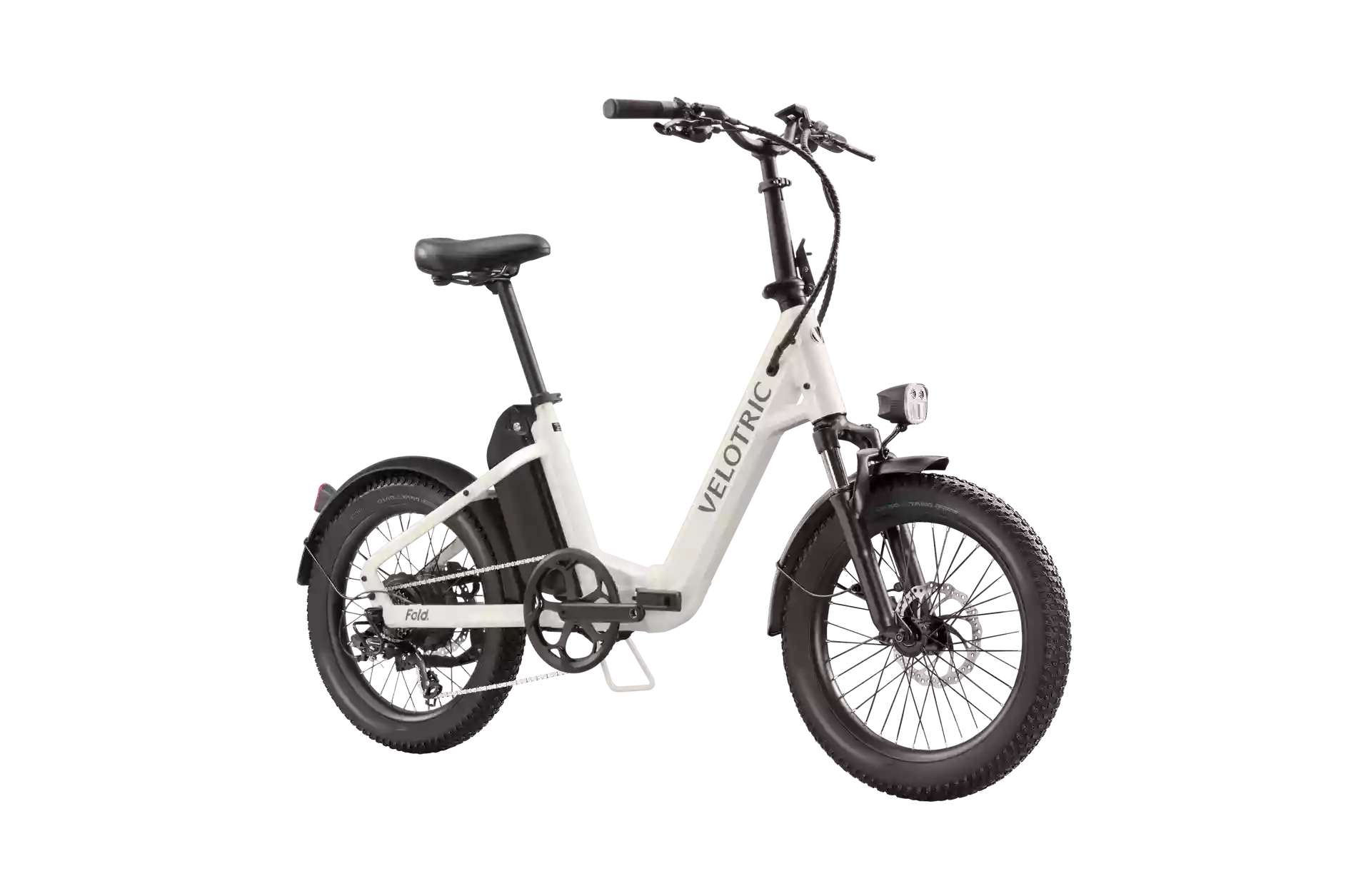
5. Velotric Fold 1 Lite
Price: $999
Key Specs:
- Motor: 500W rear hub (55Nm torque)
- Battery: 48V 486Wh
- Range: Up to 48 miles
- Top Speed: 20 mph (can unlock 28 mph)
- Frame: Foldable aluminum with 20x3” all-terrain tires
Pros:
- Stylish design with solid folding mechanism
- Hydraulic disc brakes
Cons:
- No rear rack included
- Limited color choices
Ideal Use Case:
Style-conscious commuters who want compactness without sacrificing performance.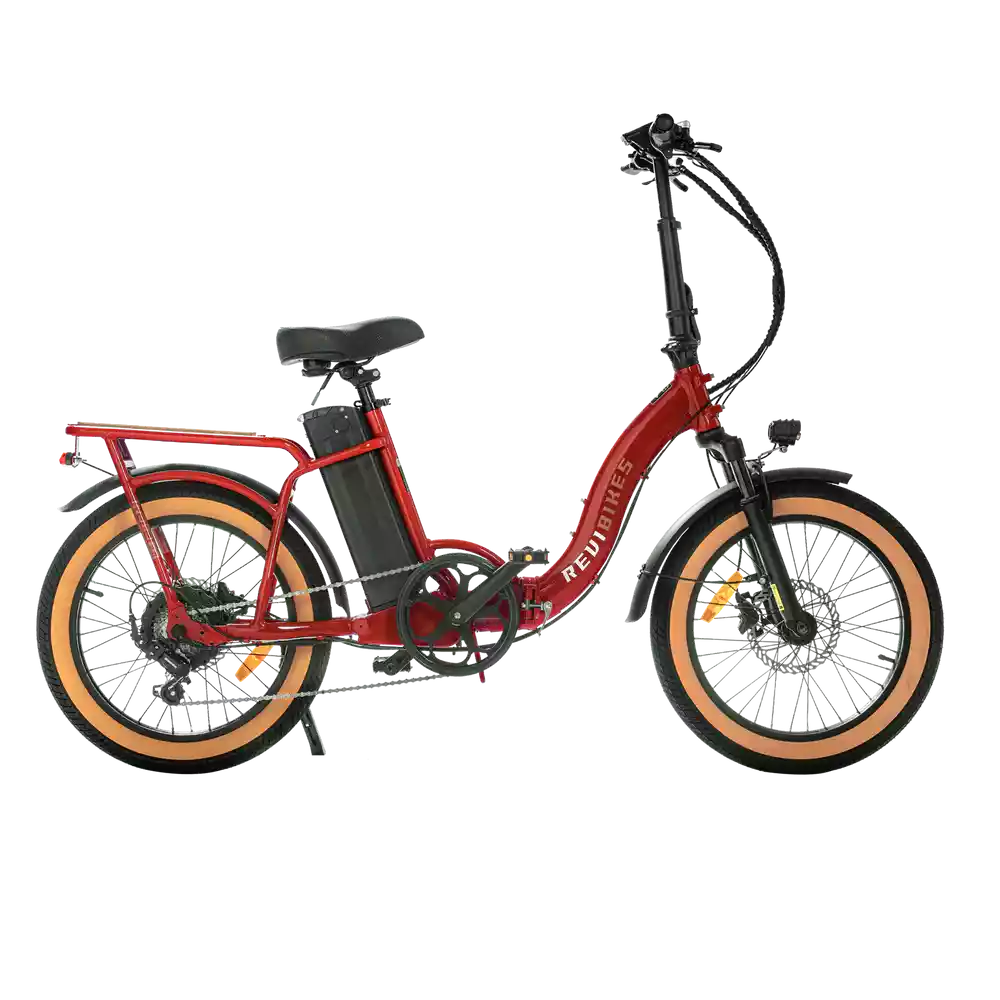
6. REVI Rebel 2 Step-Thru Folding
Price: $849
Key Specs:
- Motor: 750W (1,000W peak)
- Battery: 48V 15Ah Samsung
- Range: Up to 60 miles
- Top Speed: 28 mph
- Weight: 65 lbs
- Frame: Folding, step-thru with fat tires
Pros:
- High power and long range
- Hydraulic disc brakes
Cons:
- Heavier than typical folding bikes
Ideal Use Case:
Heavier riders or urban commuters wanting portability and power.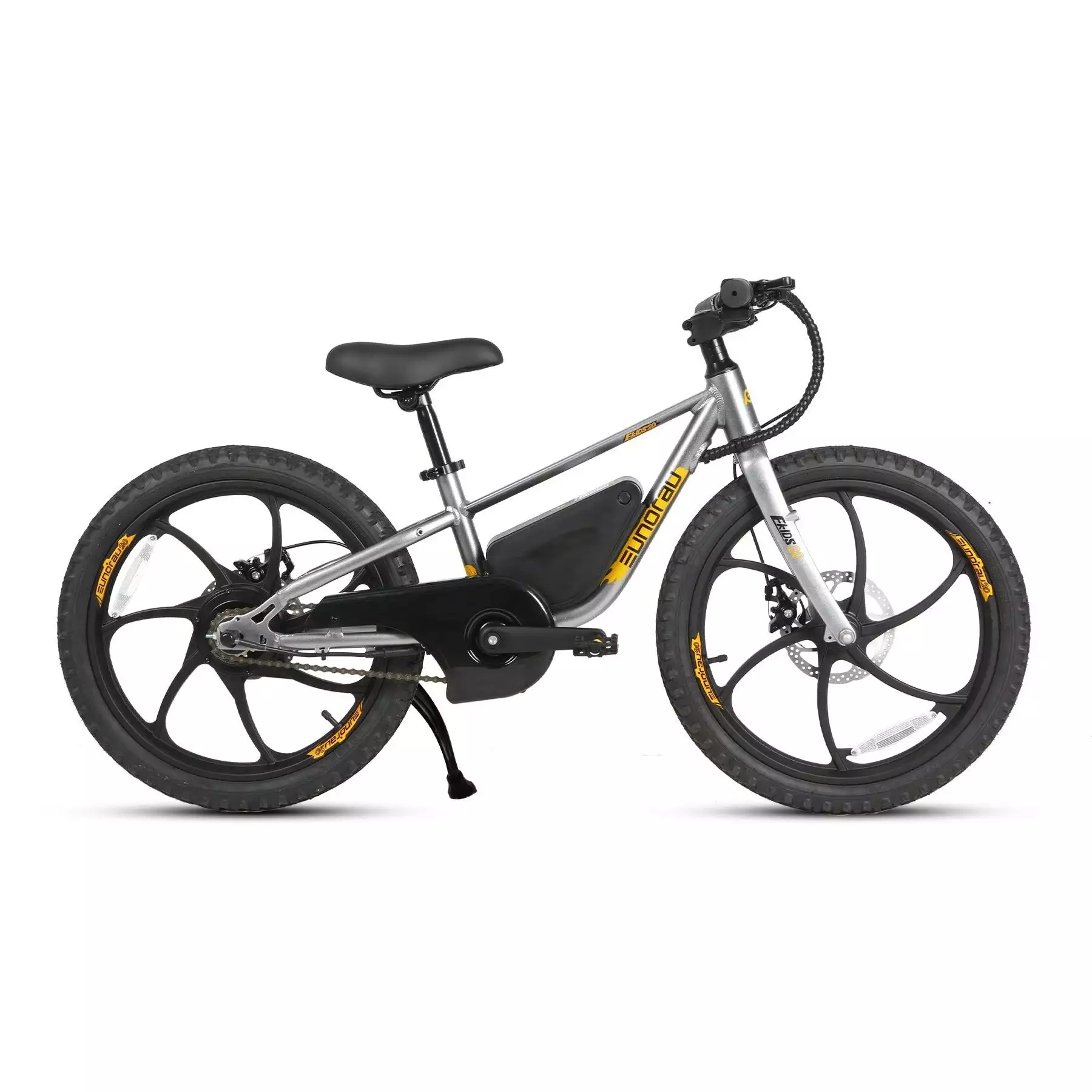
7. EUNORAU EKIDS 20
Price: $849
Key Specs:
- Motor: 250W
- Battery: 24V 10Ah
- Range: Up to 20 miles
- Top Speed: 20 mph
- Weight: 37.4 lbs
- Frame: Compact, lightweight, step-thru
Pros:
- Very light and easy for kids
- Simple controls
Cons:
- Limited power and range
Ideal Use Case:
Perfect for kids, teens, or short city trips.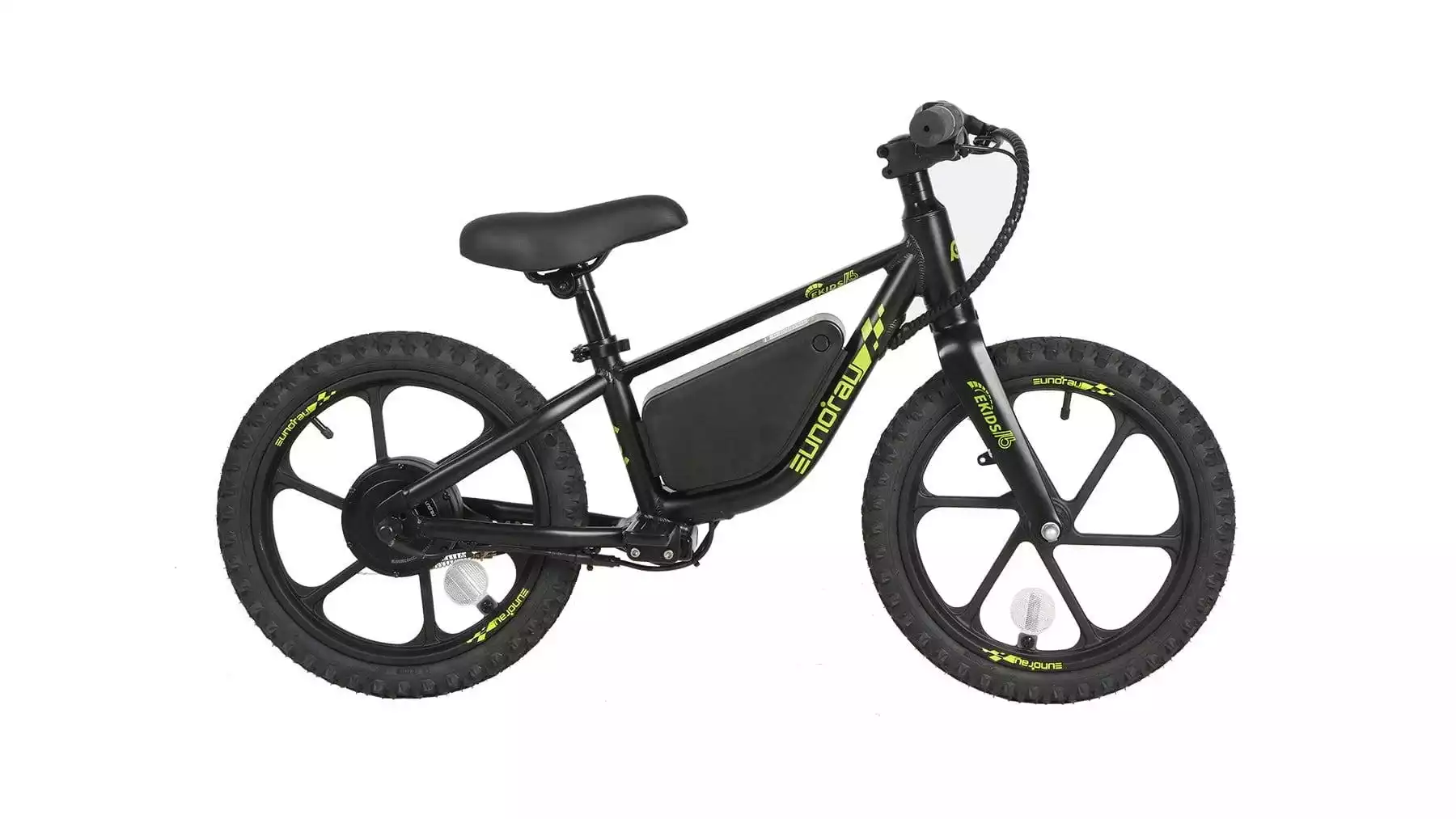
8. EUNORAU EKIDS 16
Price: $749
Key Specs:
- Motor: 180W
- Battery: 24V 10Ah
- Range: Up to 25 miles
- Top Speed: 13 mph
- Weight: 28.6 lbs
- Frame: Extra compact kids model
Pros:
- Extremely lightweight
- Safe top speed for young riders
Cons:
- Only suitable for young children
- Not for hills or adults
Ideal Use Case:
Young children learning to ride electric bikes.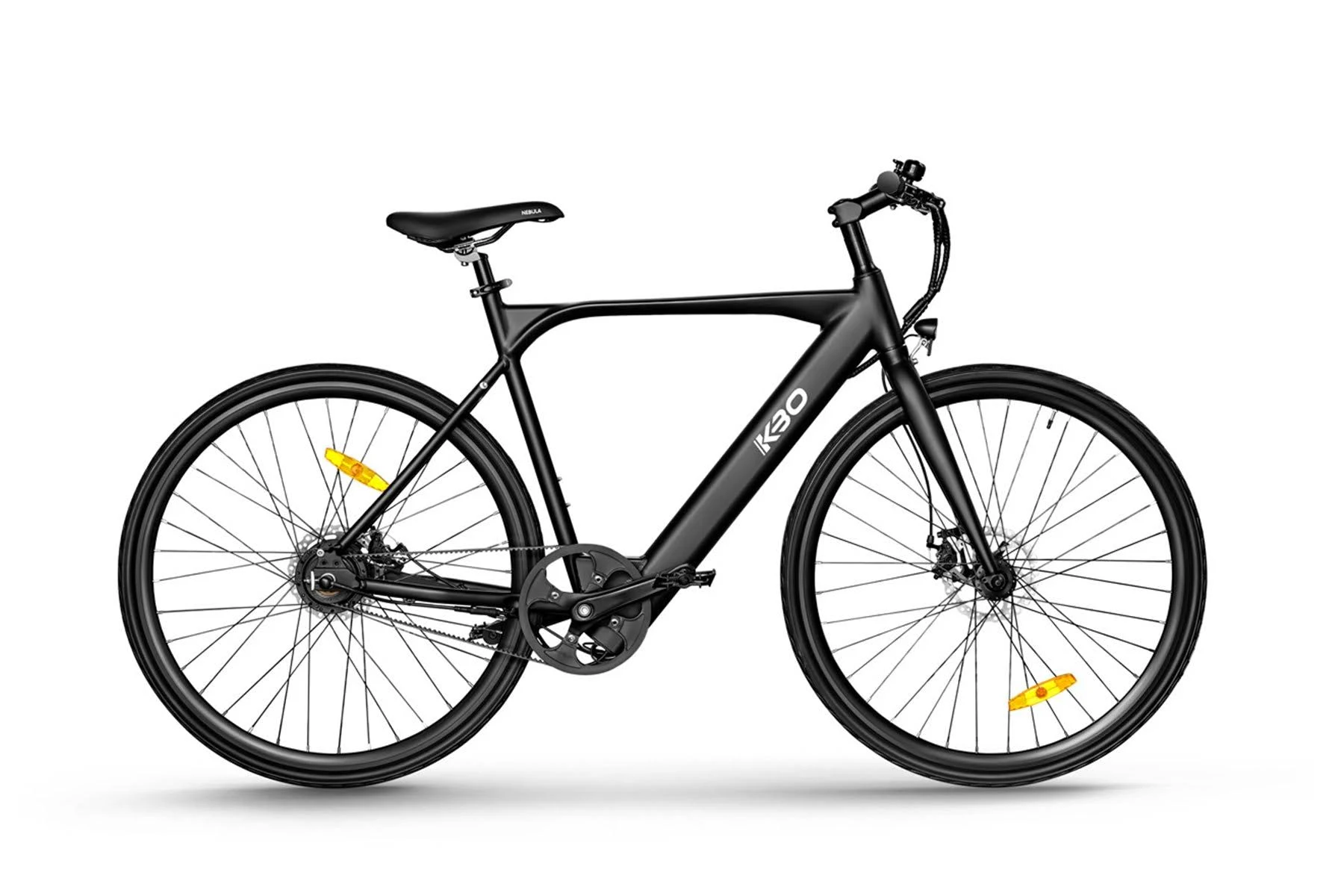
9. KBO Hurricane 2.0
Price: $899 (sale)
Key Specs:
- Motor: 500W peak
- Battery: 36V 378Wh Panasonic
- Range: Up to 45 miles
- Top Speed: 20 mph
- Weight: 36 lbs
- Frame: Sleek urban aluminum with road tires
Pros:
- Lightweight and discreet
- Great for city commuting
Cons:
- Modest battery capacity
- Limited off-road use
Ideal Use Case:
Urban riders wanting a stealthy, light e-bike.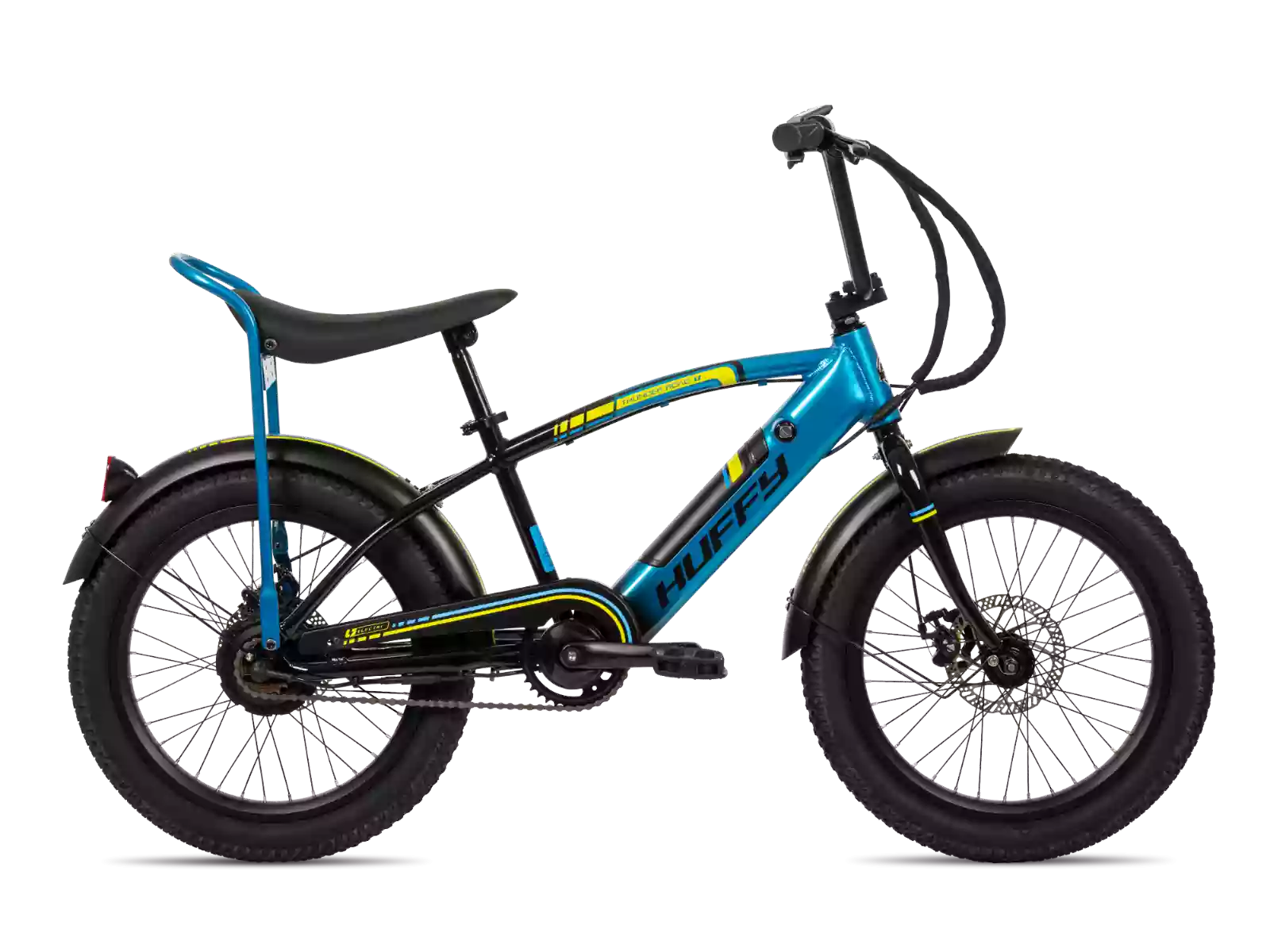
10. Huffy eThunder Road Kids E-Bike
Price: $729
Key Specs:
- Motor: 250W
- Battery: 24V 6Ah
- Range: Short range (not stated)
- Top Speed: 15 mph
- Weight: ~35 lbs (kid-sized)
- Frame: Steel mini-moto style
Pros:
- Fun motorcycle look
- Safe for young riders
- Durable construction
Cons:
- Only for kids and teens
- Shorter range
Ideal Use Case:
Great for kids transitioning from toys to real e-bikes.
Pro Tip:
Consider your daily ride needs. Lightweight, foldable bikes work great for city commutes, while powerful motors and suspension help on longer or rougher rides.
Ready to ride? These best e-bikes under $1,000 for 2025 offer options for every rider and budget. Find your perfect match and start enjoying the electric ride today!
Key Features to Consider in Budget E-Bikes: Your 2025 Buying Guide
Thinking about buying one of the best e-bikes under $1,000 but not sure what really matters? Picking the right electric bike isn’t just about price—it’s about finding the features that fit your riding style and needs.
In this quick guide, we’ll break down the key features to consider in budget e-bikes so you can shop smart and ride happy.
Motor Types and Power: What Moves You?
The motor is the heart of your e-bike. Budget models usually offer hub motors (located in the front or rear wheel) that provide smooth, quiet power.
- Motor wattage typically ranges from 250W to 750W in affordable e-bikes. More watts mean more speed and hill-climbing ability.
- For city commuting, 250W to 500W motors are usually enough.
- If you want extra boost for hills or rough terrain, look for 750W options.
Pro Tip: Don’t just focus on motor power—consider how the bike feels when you pedal. Some bikes have better pedal assist systems that make rides easier without draining the battery too fast.
Battery Range and Charging Time: How Far Can You Go?
Battery life impacts how far you can ride before needing a recharge. Most budget e-bikes offer ranges between 20 to 50 miles, depending on battery capacity and riding conditions.
- Battery capacity is measured in volts (V) and amp-hours (Ah) — a higher number generally means longer rides.
- Charging times typically range from 3 to 6 hours. Faster chargers might be available but can increase the bike’s cost.
- Keep in mind: Using pedal assist conserves battery, while relying heavily on throttle drains it faster.
Frame Quality and Materials: Built to Last
Your e-bike’s frame affects durability, weight, and comfort.
- Aluminum frames are common in budget e-bikes — they’re light, rust-resistant, and strong.
- Some models use steel frames, which add weight but offer durability and a smooth ride.
- Look for a foldable frame if storage or portability is a priority.
Weight and Portability: Easy to Handle
E-bikes can be heavy, especially those with bigger batteries or sturdy frames. Consider:
- Lightweight bikes (around 30-40 lbs) are easier to carry and store.
- Folding e-bikes add convenience if you need to bring your bike on public transit or store it in small spaces.
- Heavier bikes may offer better stability but can be tough to lug upstairs or lift into a car.
Extra Features: Pedal Assist, Throttle, Suspension, and Brakes
Modern e-bikes pack in helpful extras that boost comfort and control.
- Pedal assist helps you pedal with motor power proportional to your effort—great for smooth rides and better battery life.
- Throttle mode lets you ride without pedaling, like a scooter—handy for quick boosts or tired legs.
- Suspension forks absorb bumps for a smoother ride, especially on rough roads or trails.
- Brakes: Hydraulic disc brakes are more effective and responsive than mechanical brakes, especially in wet conditions.
Pro Tip: Consider what features matter most for your rides. If you mostly stick to paved roads, suspension might be less critical than good brakes and battery life.
Ready to Ride?
Understanding these key features helps you zero in on the best e-bikes for your needs in 2025. Whether it’s city commuting, weekend cruising, or getting started with e-bikes, the right combination of motor power, battery range, frame, and extras will make your ride fun, reliable, and practical.
Find the perfect budget e-bike today and start enjoying the freedom of electric riding!
Tips for Buying an E-Bike Under $1,000: Your 2025 Buying Guide
Thinking about snagging one of the best e-bikes under $1,000 but want to make sure you get the right deal? Buying an electric bike is exciting—but a few smart tips can help you avoid surprises and ride off happy.
Here’s what you need to know to shop confidently and get the most value for your budget.
Best Purchasing Channels: Online vs. Local Stores
Both online retailers and local bike shops have their perks:
- Online shopping often offers better prices, wider selection, and customer reviews.
- Local stores let you test ride bikes, get expert advice, and easier in-person support.
Pro Tip: If buying online, check for a clear return policy and assembly support. Some brands offer free shipping and assembly videos to make setup easier.
Warranty and Support Considerations
A solid warranty can save you headaches down the road.
- Look for at least a 1-year warranty on the frame and electrical components.
- Check if the brand offers customer support via phone, chat, or email.
- Some budget e-bikes include free tune-ups or service clinics through local dealers.
Test Riding and Fit: Don’t Skip This Step
How a bike fits and feels can make or break your experience.
- Visit local stores or events to test ride different models.
- Make sure the bike is comfortable to sit on and easy to reach the handlebars and pedals.
- Folding bikes should feel sturdy and fold/unfold smoothly.
Pro Tip: If you can’t test ride in person, watch online reviews and unboxing videos to get a sense of handling and setup.
Maintenance Basics: Keep Your E-Bike Running Smoothly
Even budget e-bikes need regular care to stay reliable.
- Keep tires inflated to the recommended pressure for a smooth ride.
- Check brakes and adjust or replace brake pads when needed.
- Clean the chain regularly and lubricate it to avoid rust.
- Charge the battery after each ride and store it in a cool, dry place.
Ready to Ride?
Buying an e-bike under $1,000 can be simple and fun when you know where to shop, what to expect in warranty, and how to ensure a good fit. Follow these tips to find your perfect ride and enjoy all the perks of electric biking in 2025.
Find the best e-bikes for your lifestyle today and start pedaling smarter!
Conclusion: Why Affordable E-Bikes Are a Smart Ride in 2025
Looking for the best e-bikes under $1,000 means you don’t have to sacrifice quality or fun just to stay on budget. Affordable electric bikes offer impressive power, good battery life, and features that fit a variety of riders—from city commuters to weekend explorers.
Remember, the key is to balance specs and your personal needs. Whether it’s motor strength, battery range, or portability, choosing what matters most to you ensures a satisfying ride without overspending.
Pro Tip:
Focus on your daily riding habits and terrain to pick the best e-bike for you. The perfect budget e-bike combines performance, comfort, and value.
Ready to explore the top affordable e-bike options and find your perfect match? Dive into our detailed reviews and start your electric adventure today!
Additional Resources for E-Bike Riders: Learn, Ride, and Maintain with Confidence
Ready to dive deeper into the world of electric bikes? Whether you’re a beginner or looking to upgrade your knowledge, these extra resources will help you get the most out of your e-bike experience.
Detailed Reviews and Buying Guides
Want to explore the best e-bikes for commuters, beginners, or outdoor adventurers? Check out trusted sites that offer in-depth 2025 electric bike reviews, user testimonials, and comparisons to help you find the perfect fit.
- Look for e-bike buying guides that explain features in plain English.
- Video reviews can show you real-world performance and unboxing experiences.
Safety Tips for E-Bike Riders
Riding smart keeps your adventures fun and injury-free.
- Always wear a helmet and visible clothing.
- Use lights and reflectors for night riding.
- Follow local traffic laws and ride predictably.
- Learn how pedal assist and throttle modes affect your control.
Maintenance Tutorials: Keep Your E-Bike Running Smoothly
Regular care boosts performance and extends your bike’s life.
- Simple tasks like tire inflation and chain lubrication make a big difference.
- Watch step-by-step videos on brake adjustments, battery care, and cleaning.
- Many brands offer maintenance guides tailored to their models.
Pro Tip: Bookmark a few reliable e-bike blogs and YouTube channels to stay updated on tips, trends, and troubleshooting advice.
Feeling ready to start your e-bike journey? Explore these resources, gear up safely, and enjoy the thrill of electric riding!
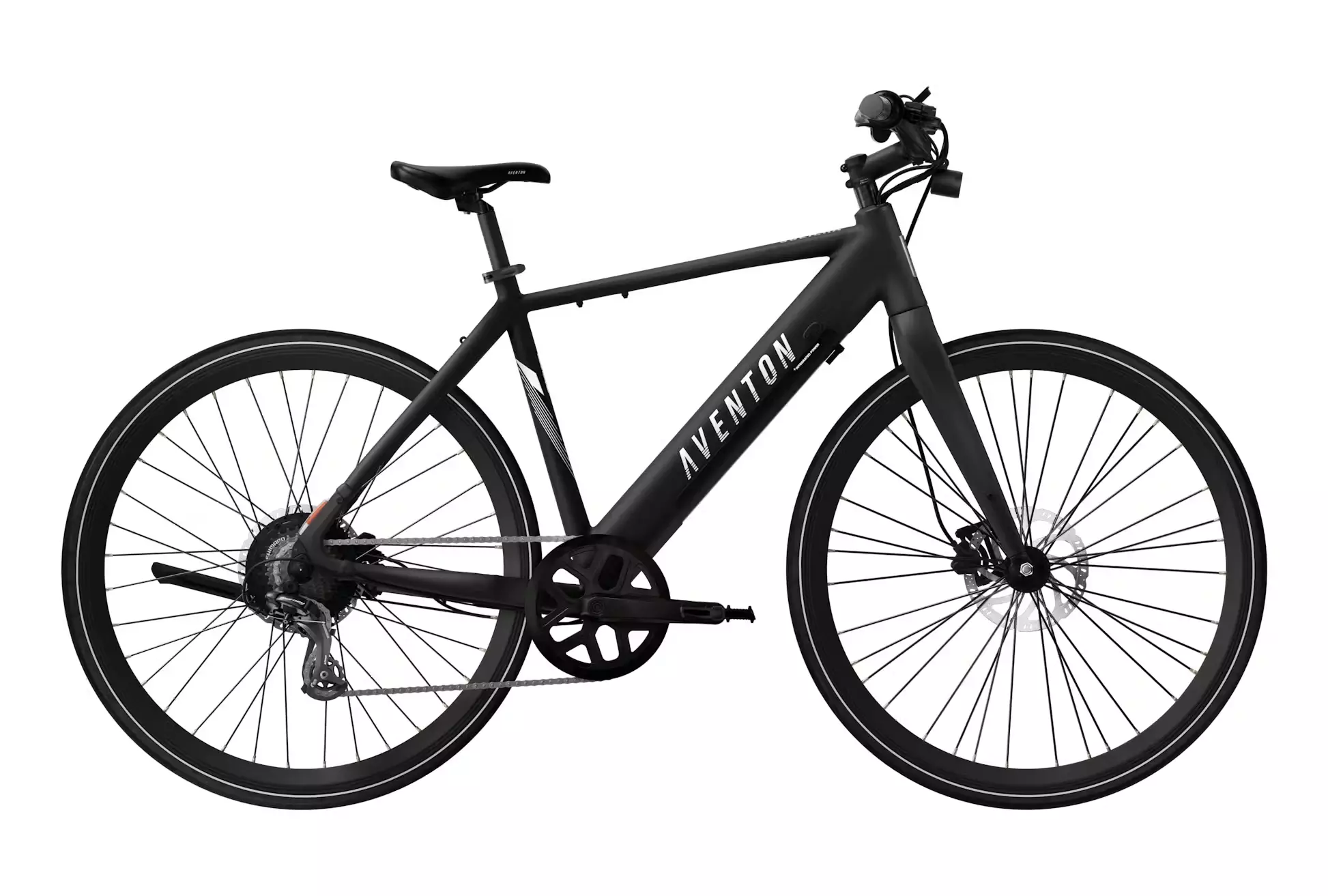
Let’s face it—teens want independence, style, and a bit of speed. And in 2025, electric bikes deliver all three. Whether it’s cruising to school, heading to practice, or just hanging with friends, e-bikes are giving young riders more freedom than ever—without needing a driver’s license.
But here’s the thing: not all e-bikes are teen-friendly. Some are too powerful. Some are too pricey. Others just don’t look cool enough to ride.
That’s why we’ve put together this e-bike buying guide specifically for teens. Whether you’re a parent looking for something safe and reliable, or a teen looking for style and speed, you’ll find exactly what you need here.
What You’ll Learn in This Guide
Choosing the right e-bike means balancing safety, cost, and style—and we break it all down for you. In this guide, you’ll find:
- Top electric bikes for teens by price and performance
- Safety tips every young rider should know
- Trendy designs that look great and ride smooth
- Pro tips for getting the best value and long-lasting use
Why It Matters
Teens are still growing, physically and emotionally. That means they need age-appropriate power, lighter frames, and smart safety features. A good e-bike isn’t just fun—it’s a tool for independence, confidence, and daily adventure.
Pro Tip:
Look for models with a top speed of 20 mph or less and adjustable seat height. These make great first e-bikes that teens can grow into safely.
The Bottom Line
The best e-bikes for teens in 2025 combine smart design with great performance—without breaking the bank. They’re fun, practical, and built to fit younger riders.
Ready to ride? Keep reading to explore the top picks for safety, affordability, and teen-approved style.
Key Things to Know Before Buying a Teen E-Bike
Shopping for the best e-bikes for teens in 2025? There’s more to it than picking the coolest-looking ride. The right electric bike balances safety, affordability, and style—and getting that balance right can make all the difference.
Here’s what to keep in mind before you buy.
Safety First: What to Look For
Teens need bikes built with their safety in mind. Here are the key features to prioritize:
- Motor Power: Look for motors in the 250W to 500W range. That’s enough for hills and speed without being too intense.
- Top Speed: Most teen-appropriate e-bikes cap out at 20 mph—fast enough for fun, slow enough for control.
- Brakes That Stop Smoothly: Choose disc brakes, either mechanical or hydraulic. Some models even offer regenerative braking, which helps recharge the battery while slowing down.
- Frame Fit: A smaller frame and lower standover height make it easier for teens to ride confidently and safely.
Pro Tip:
Skip bikes with throttles and go for pedal-assist (PAS) instead. It encourages safe riding and gives more control to new riders.
Affordability: What You’re Really Paying For
Not all e-bikes are created equal when it comes to price. Here's how to think about value:
- Entry-Level ($500–$900): Basic design, fewer features, solid for first-time riders
- Mid-Tier ($1,000–$1,500): Better batteries, smoother rides, longer warranties
- Premium ($1,600+): Longer range, higher-end components, better tech and design
Also consider long-term costs:
- Battery replacements (after ~2–4 years)
- Regular tune-ups
- Spare parts and accessories
Warranty matters too—look for at least 1-year coverage on the battery and frame, with responsive customer support.
Style, Weight & Tech: Making It Teen-Approved
Let’s be honest—if it doesn’t look cool, it won’t get ridden. Luckily, today’s e-bikes combine function with serious style.
- Design: Think sleek frames, bold or muted color options, and minimalist branding
- Weight: Go lightweight (under 55 lbs) or foldable models for easier transport
- Extras Teens Love:
- LED lights for night rides
- Phone holders and USB charging ports
- App connectivity for trip tracking and battery stats
Pro Tip:
Let teens customize with fun add-ons—colorful grips, reflective decals, or matching helmets make it feel personal and cool.
Make a Smart, Safe Choice
Choosing the right teen e-bike means thinking beyond looks. Focus on safe specs, realistic budgets, and style that fits your rider’s vibe. The perfect ride is out there—you just have to know what to look for.
Ready to narrow it down? Let’s explore the best electric bikes for teens in 2025—ranked by safety, price, and fun factor.
Top E‑Bike Models for Teens in 2025
Looking for the best e-bikes for teens in 2025? We've done the research and rounded up models that check all the right boxes—safe, stylish, and budget-smart. Whether you want a first ride under $700 or a premium folding beast with all the features, this guide has something for every young rider.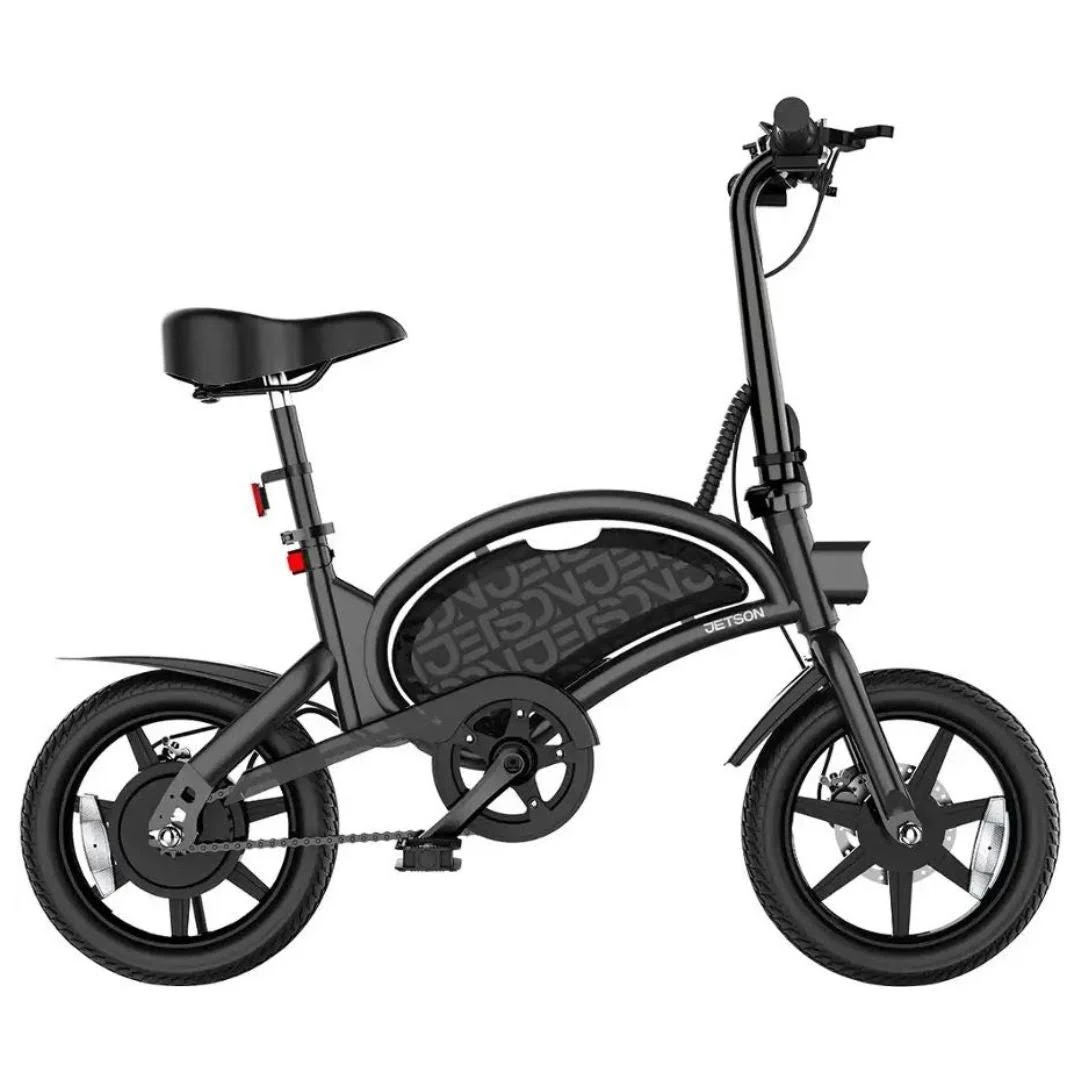
🔋 3.1 Budget-Friendly Picks
Jetson Bolt Pro
- Price: Under $600
- Motor/Battery: 250W motor, 36V battery
- Range: Up to 15 miles
- Weight: ~34 lbs
- Why Teens Love It:
- Super compact, easy to carry or stash
- Simple design, throttle-only control (no pedals)
- Great starter e-bike for short commutes or campus rides
Pros: Affordable, ultra-light, fun design
Cons: Limited range, no pedal assist
Best For: City streets and quick trips
Lectric XP Lite 2.0
- Price: ~$700
- Motor/Battery: 300W motor, 48V battery
- Range: Up to 40 miles
- Weight: ~46 lbs
- Why Teens Love It:
- Foldable frame makes it great for dorms or cars
- Solid build with a minimalist vibe
- Easy to ride and store
Pros: Foldable, great battery life, durable
Cons: Single-speed, no suspension
Best For: Teens who need a reliable daily ride
Pro Tip:
Start with a simple model. Teens can upgrade later as they gain confidence and riding experience.
💡 3.2 Mid-Range Options
Ride1Up Portola
- Price: ~$1,000
- Motor/Battery: 750W motor, 48V 10.4Ah battery
- Range: Up to 45 miles
- Weight: ~60 lbs
- Why Teens Love It:
- Comes in cool colorways
- Folds for easy storage
- Strong motor makes uphill rides easy
Pros: High power, hydraulic disc brakes, foldable
Cons: Heavier than budget models
Best For: Teens who want more zip and style

Aventon Soltera.2
- Price: ~$1,200
- Motor/Battery: 350W motor, integrated battery
- Range: 41 miles average
- Weight: ~46 lbs
- Why Teens Love It:
- Clean urban design with integrated lights
- App connectivity for ride tracking and custom settings
- Smooth, quiet motor
Pros: Lightweight, sleek design, tech-friendly
Cons: Less power than Ride1Up
Best For: Teens who care about looks, tech, and comfort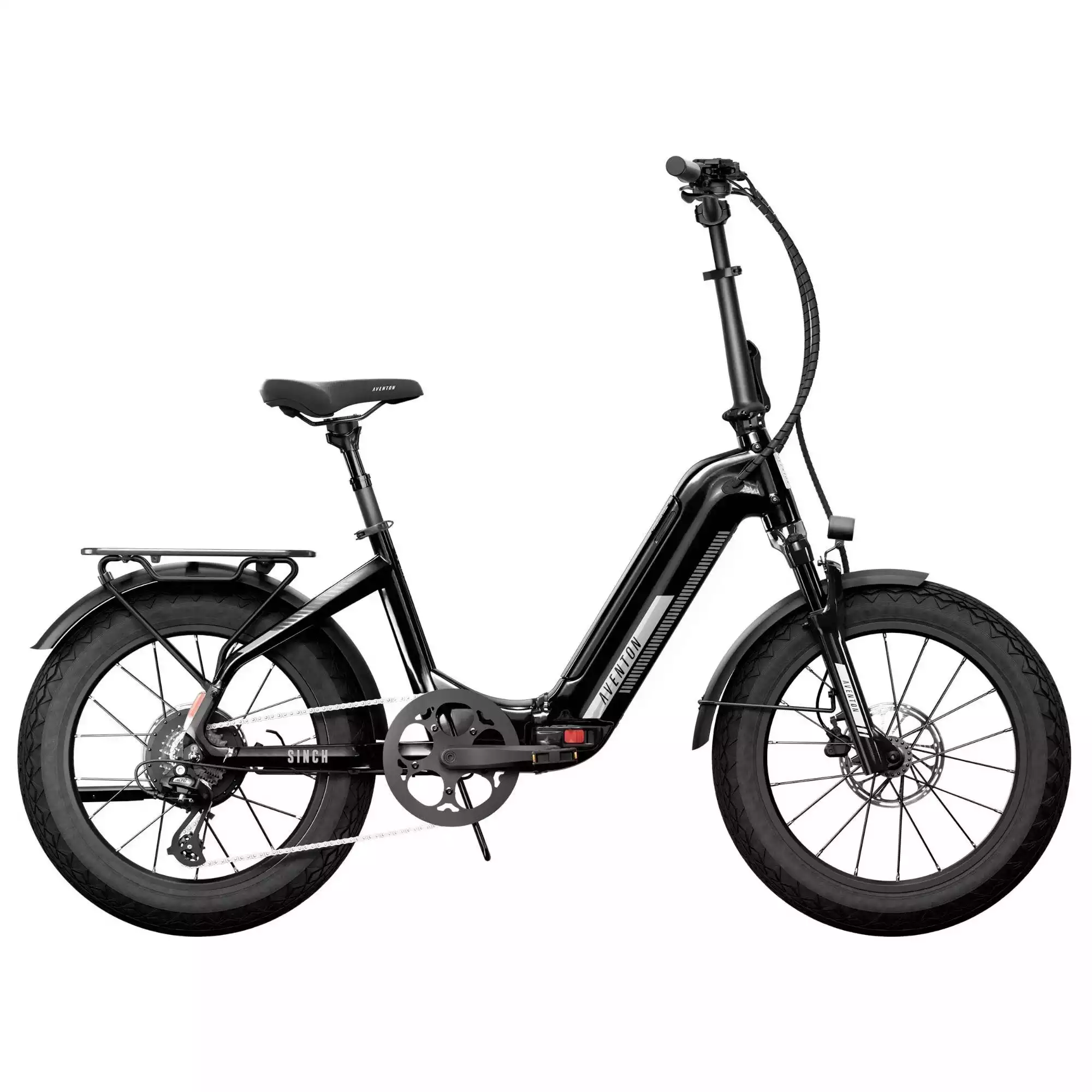
🚀 3.3 Premium / Feature-Rich Selections
Aventon Sinch 2.5
- Price: ~$1,500
- Motor/Battery: 500W motor, 48V 14Ah battery
- Range: Up to 55 miles
- Weight: ~68 lbs
- Why Teens Love It:
- Full suspension fork for smoother rides
- Folding frame with fat tires for trail or city
- App-enabled ride data and tracking
Pros: Versatile, comfortable, long range
Cons: Heavy, pricier
Best For: Teens who want adventure + commuting
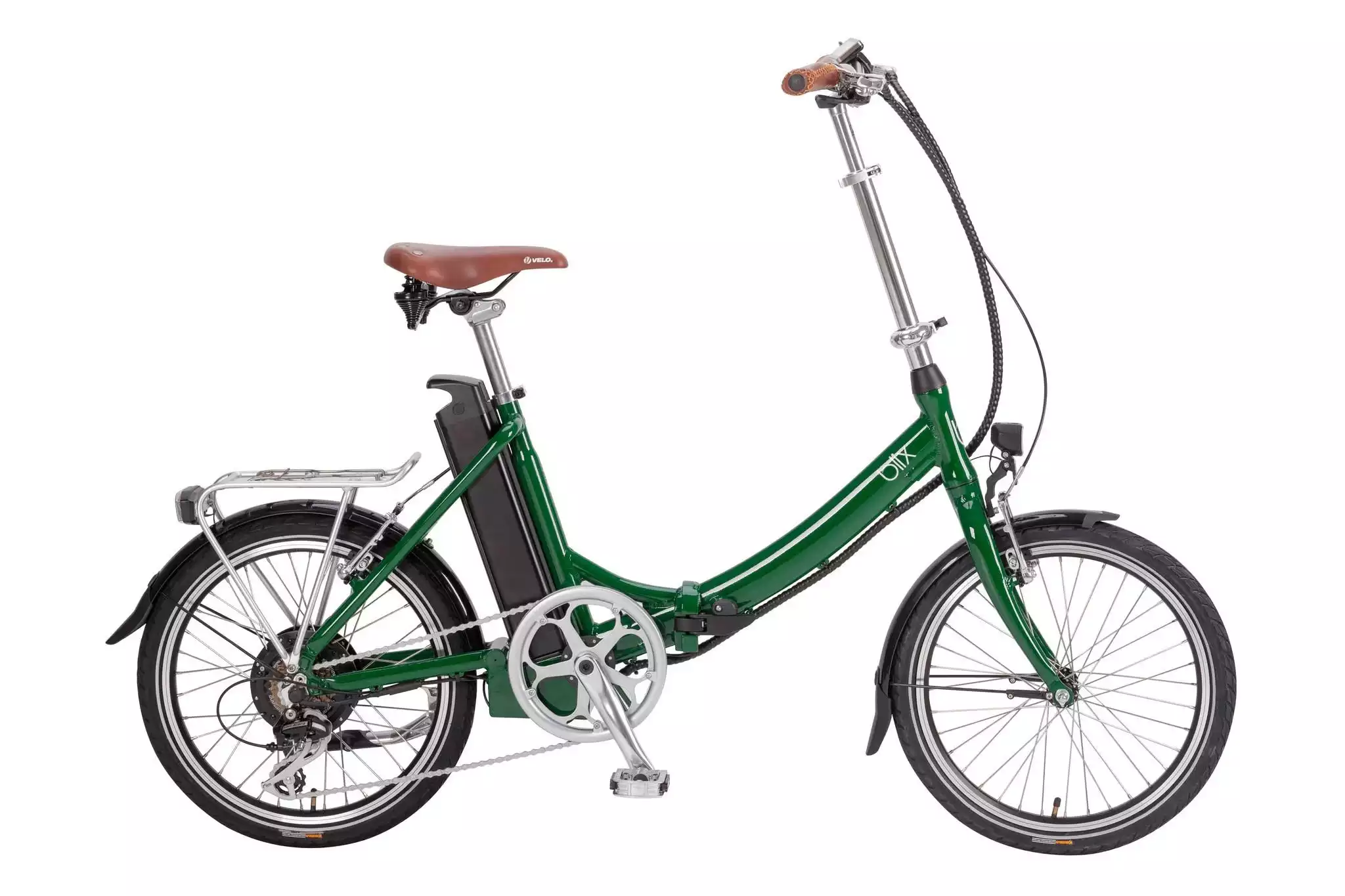
Blix Vika+ Flex
- Price: ~$1,800
- Motor/Battery: 500W motor, 48V 12.8Ah battery
- Range: Up to 45 miles
- Weight: ~55 lbs
- Why Teens Love It:
- Beautiful, retro-inspired frame
- Long battery life and premium parts
- Semi-foldable for smaller storage spaces
Pros: Stylish, high build quality, great range
Cons: Premium price, semi-folding only
Best For: Teens with big style and daily ride needs
Comparison Snapshot
| Model | Price | Range | Foldable | Top Feature |
|---|---|---|---|---|
| Jetson Bolt Pro | <$600 | 15 mi | ❌ | Ultra-light, no pedals |
| Lectric XP Lite | ~$700 | 40 mi | ✅ | Foldable, solid battery |
| Ride1Up Portola | ~$1,000 | 45 mi | ✅ | Power + hydraulic brakes |
| Aventon Soltera.2 | ~$1,200 | 41 mi | ❌ | Sleek design + app control |
| Aventon Sinch 2.5 | ~$1,500 | 55 mi | ✅ | Suspension + fat tires |
| Blix Vika+ Flex | ~$1,800 | 45 mi | Semi | Retro design + full setup |
Your Perfect Ride Awaits
Whether you want a no-fuss entry-level e-bike or a premium ride with bells and whistles, 2025 has something for every teen. Focus on what matters most—safety, range, portability, or tech—and find the e-bike that fits your lifestyle.
Ready to ride? Start comparing your favorites and lock in the best deal before they sell out.
Safety & Equipment Guide for Teens: Gear Up and Ride Smart
Are you ready to help your teen ride their new e-bike with confidence and safety? Choosing the best e-bikes for teens is just the start. Equipping them with the right gear and teaching good riding habits can make every trip safer and more fun.
Here’s your go-to e-bike buying guide for safety gear and smart riding tips.
Required & Recommended Gear: What Every Teen Rider Needs
Safety starts before the wheels start spinning. Make sure your teen has:
- DOT-Certified Helmet
A properly fitting helmet is non-negotiable. It protects the head from impact and reduces injury risk dramatically. Look for helmets made specifically for teens or youth, with adjustable straps and ventilation. - Reflective Clothing & Accessories
Bright or reflective jackets, vests, or arm bands help drivers and other riders see your teen, especially at dusk or night. - Gloves, Knee & Elbow Pads
These protect from scrapes and bruises during minor falls. Gloves also improve grip on handlebars for better control. - Secure Locks & GPS Trackers
A U-lock is usually better than a chain lock for keeping the e-bike safe from theft. Adding a small GPS tracker provides extra peace of mind by allowing you to locate the bike if it goes missing.
Teaching & Riding Best Practices: Building Good Habits Early
A safe rider is a confident rider. Here’s how to help your teen stay sharp on the road:
- Basic Maintenance Checks
- Tire pressure: Under- or over-inflated tires can affect handling. Check weekly with a simple gauge.
- Brakes: Ensure brakes respond promptly and pads aren’t worn down.
- Battery care: Charge regularly and avoid deep discharges to keep the battery healthy longer.
- Know the Rules of the Road
- Keep speeds at or below local limits (usually around 20 mph for teens).
- Share the road responsibly with pedestrians, cars, and other cyclists.
- Ride in designated bike lanes or safe zones when available.
- E-Bike Etiquette & Awareness
Teach your teen to:- Always signal turns and stops with hand gestures
- Be alert for obstacles, parked cars, and opening doors
- Use mirrors or look back before changing lanes or crossing
Pro Tip:
Practice makes perfect! Ride together at first to review safety rules and build confidence in different traffic conditions.
Why This Matters for Teens & Parents
Teen riders are still learning, so combining the right gear with good habits reduces risk and builds lifelong safe riding skills. Plus, knowing their bike is secure and ready to go makes riding more enjoyable and worry-free.
Ready to Ride with Confidence?
Buying one of the best e-bikes for teens in 2025 is only the beginning. Outfit your rider with these essentials, teach them smart riding, and watch their confidence—and fun—grow!
Find the perfect e-bike and gear now, and get your teen rolling safely this year!
Cost Comparison & Value Analysis: Find the Best Bang for Your Buck in 2025
Wondering how to get the most value when shopping for the best e-bikes for teens? Price is important, but it’s just one part of the equation. Weight, range, speed, and warranty all factor into the long-term cost and satisfaction of your purchase.
In this e-bike buying guide, we break down what you really get for your money and highlight top picks that balance cost and features perfectly.
Side-by-Side Cost Comparison Table
| Model | Price | Weight | Range (miles) | Max Speed (mph) | Warranty |
|---|---|---|---|---|---|
| Jetson Bolt Pro | Under $600 | 34 lbs | 15 | 15 | 1 year (limited) |
| Lectric XP Lite 2.0 | ~$700 | 46 lbs | 40 | 20 | 1 year |
| Ride1Up Portola | ~$1,000 | 60 lbs | 45 | 20 | 2 years |
| Aventon Soltera.2 | ~$1,200 | 46 lbs | 41 | 20 | 2 years |
| Aventon Sinch 2.5 | ~$1,500 | 68 lbs | 55 | 20 | 2 years |
| Blix Vika+ Flex | ~$1,800 | 55 lbs | 45 | 20 | 2 years |
Best Value Picks for 2025
- Top Pick Under $1,000: Lectric XP Lite 2.0
It offers a solid 40-mile range and a foldable frame at an affordable price—perfect for teens who want quality without splurging. - Longest Range for the Price: Aventon Sinch 2.5
At around $1,500, it delivers an impressive 55 miles per charge, plus comfort features like a suspension fork. - Best Lightweight Option: Jetson Bolt Pro
At just 34 lbs, this is a great choice for portability and ease of use, especially for younger or smaller teens.
Long-Term Ownership: What to Expect
Buying an e-bike is an investment, and understanding the total cost of ownership helps you make a smart choice.
- Battery Life & Replacement: Expect about 3–5 years before the battery needs replacing, which can cost $200–$600 depending on the model.
- Maintenance Costs: Regular tune-ups, brake pads, and tire replacements add up, but many entry-level bikes keep these costs low.
- Warranty & Support: Longer warranties give peace of mind and may save money if repairs are needed.
Pro Tip:
Choosing a slightly higher-priced bike with a longer warranty and better components often saves money over time.
Making the Best Choice
When comparing prices, don’t just focus on upfront cost. Look for balance—a bike that fits your teen’s riding style, has a reliable range, and offers solid support.
With this overview, you’re set to make a confident decision in your search for the best e-bikes for teens in 2025.
Ready to ride? Explore detailed reviews and shop with confidence today!
Style & Customization Tips for Teen E-Bikes in 2025
E-bikes aren’t just about getting from point A to B—they’re a form of self-expression. For teens especially, owning one of the best e-bikes in 2025 means customizing it to match their personal style while staying safe and visible on the road.
In this part of our e-bike buying guide, we’ll explore top design trends, fun accessories, and clever ways to mix function with flair.
Hottest E-Bike Style Trends Among Teens
Teens in 2025 are blending sleek looks with bold accents. Popular styles include:
- Matte finishes in colors like forest green, charcoal, and deep teal
- Pop-tone accents—think neon cables, colored valve caps, or bright decals
- Retro-inspired frames with modern tech features
- Minimalist dashboards that cleanly integrate display screens and controls
Teens want bikes that look good cruising down the street—but also stand out in a crowd.
Must-Have Accessories for Teens
These simple add-ons not only personalize a ride but improve function, comfort, and safety too.
- 🛞 Grip Tape or Custom Bar Tape – Adds control and color to the handlebars
- 🛡️ Fenders & Mudguards – Keep clothes clean and match the bike’s aesthetic
- 📦 Cargo Racks & Baskets – Practical for books, snacks, or gear
- 🌈 LED Accent Lights – Underglow or wheel lights for night visibility and serious style points
- 💠 Spoke Reflectors or Rim Stickers – A small touch that adds pop and safety
- 📱 Phone Mounts – Keeps maps, music, and tracking apps within easy view
Pro Tip:
Match reflective decals or LED accents to your teen’s helmet or backpack for a coordinated look that boosts safety.
How to Personalize for Fun & Safety
Customizing your e-bike is more than just looking cool—it can actually make riding safer and more enjoyable.
- Choose reflective or glow-in-the-dark tape for bar grips or wheels
- Add a bell or horn with a sound your teen loves (classic ding or quirky honk!)
- Look for accessories with dual purpose—like racks with built-in lights or smart helmets with turn signals
Encourage your teen to pick upgrades that highlight their personality while enhancing visibility and comfort. The goal is to make the bike feel like theirs—and to make sure it’s equipped for any type of ride.
Final Thoughts: Style Meets Safety
One of the best things about owning an e-bike in 2025 is how easy it is to personalize. With the right accessories and a little creativity, any teen can turn their ride into a mobile expression of who they are—while staying road-ready and responsible.
Ready to personalize one of the best e-bikes for teens? Dive into your favorite gear shop and start customizing today!
Real-World Testing & User Feedback: How These E-Bikes Perform for Teens
Real‑World Testing & User Feedback
When it comes to picking the best e-bikes for teens in 2025, nothing beats hands-on experience. We gathered feedback from teen riders, parents, and online communities to give you a clear view of how these bikes perform in everyday life.
Handling, Comfort & Ease-of-Use
- Jetson Bolt Pro: “Super light and easy to steer. My 14-year-old figured it out in one afternoon,” said one Reddit parent.
- Lectric XP Lite: Teens love its foldability and intuitive throttle. “Not intimidating at all,” shared a 15-year-old rider on YouTube.
- Ride1Up Portola: Parents say it's “a great commuter—quiet and smooth,” with responsive brakes that inspire confidence.
- Aventon Soltera.2: Popular for city teens. “Feels like a real bike, but faster,” according to a review on TikTok.
- Aventon Sinch 2.5: Teens report a comfortable ride even on bumpy paths, thanks to the suspension fork and sturdy frame.
Teen & Parent Feedback
🗣️ “I was worried it’d be too fast, but it’s manageable and helps her get to practice safely.” – Parent review on EBR
🗣️ “My friends all want to ride it now. I added neon wheel lights, too.” – 16-year-old owner
🗣️ “It’s become part of our daily routine. We even take it on family camping trips.” – Family post in a Facebook group
Community Reliability Insights
From Reddit, Facebook e-bike groups, and YouTube comments, riders praised:
- Easy setup and clear instructions
- Consistent performance over time
- Good brand support (especially Aventon and Lectric)
Minor drawbacks? Some users mentioned basic pedals or accessories needing upgrades, but overall satisfaction remains high.
🛠️ Pro Tip: Always check tire pressure and brake tension weekly. A little maintenance goes a long way!
—
Decision‑Making Flowchart: How to Choose the Right Teen E-Bike
Not sure where to start? This simple checklist helps you confidently choose the best e-bike for your teen based on real needs and preferences.
Step 1: Set a Budget
- Under $700? Look at value picks like the Jetson Bolt Pro or Lectric XP Lite.
- $1,000–$1,500? Go mid-range for extra safety and tech—think Aventon Soltera.2 or Ride1Up Portola.
- $1,500+? Explore premium folding bikes with long range like the Aventon Sinch 2.5.
💡 Pro Tip: Don’t forget to budget $100–$200 for must-haves like helmets, locks, and lights.
Step 2: Focus on Safety
Key teen-friendly safety features:
- 250–500W motor (keeps speed manageable)
- Max speed near 20 mph
- Hydraulic or mechanical disc brakes
- Built-in LED lighting and reflectors
If riding at night, LED spoke lights and reflective tape go a long way.
Step 3: Pick a Style & Design
Let your teen’s personality shine! Popular choices include:
- Matte finishes or pop-color accents
- Foldable frames for easy storage
- Custom bar tape, spoke lights, or phone mounts
They’ll ride more when they love the look.
Step 4: Know Local Rules
Before buying, make sure you’re compliant with local laws:
- Minimum age to ride an e-bike
- Helmet requirements
- Where e-bikes are allowed (bike paths, sidewalks, etc.)
Check with your city’s transportation site or DMV.
Step 5: Try It Out
Nothing beats a test ride:
- Visit local shops with demo units
- Look for brands with good return policies
- Watch real-user ride tests on YouTube
Let your teen get a feel for control, height, and comfort before committing.
—
Ready to choose with confidence? Use this checklist to match the perfect ride to your teen’s needs—and start shopping smarter today!
🏁 Conclusion & Final Recommendations: Best E-Bikes for Teens in 2025
Finding the best e-bike for a teen in 2025 doesn’t have to be overwhelming. With the right mix of safety, style, and smart value, you can feel confident picking a model that’s exciting to ride and built to last.
Let’s recap the top choices and key takeaways to help you decide with ease.
—
🚲 Top Picks by Budget Tier
Whether you're looking for something simple or feature-packed, these models stand out:
- 💰 Budget-Friendly:
• Jetson Bolt Pro – Compact, lightweight, ideal for younger or beginner teen riders
• Lectric XP Lite – Foldable, under $700, strong reputation for durability and value
- 💡 Mid-Range:
• Ride1Up Portola – Great performance for around $1K, folding frame and hydraulic brakes
• Aventon Soltera.2 – Sleek design, built-in lights, app control, ideal for everyday commuting
- Premium/Feature-Rich:
• Aventon Sinch 2.5 – Suspension fork, long range, ride analytics
• Blix Vika X – Long battery life, foldable, full fender + light kit
No matter the price range, each of these models offers a great mix of performance, safety, and teen-friendly design.
—
Key Things to Keep in Mind
- Always prioritize safety: look for disc brakes, LED lights, and manageable top speeds
- Make sure the size, weight, and frame are age-appropriate
- Factor in long-term value—warranty, battery life, and upgrade options
- Style matters! Teens ride more when the bike fits their personality
Pro Tip: Test rides can make all the difference. What feels “just right” to your teen might surprise you—so try before you buy when possible.
—
Encourage Safe, Responsible Riding
An awesome e-bike means nothing without smart habits behind the handlebars:
- Make a DOT-certified helmet a must
- Add bright reflectors or LED accents to boost visibility
- Teach basic maintenance—like tire pressure checks and charging routines
- Respect road rules and local regulations (especially speed limits and riding zones)
Encouraging these habits early helps your teen build confidence and ride responsibly for years to come.
—
🎉 Final Thoughts
The 2025 electric bike review for teens shows one thing clearly—there’s never been a better time to ride. With so many options balancing affordability, safety, and cool factor, finding the right fit is easier than ever.
Ready to roll? Use this e-bike buying guide to pick your perfect match—and enjoy the ride ahead.
Additional Resources for Teen E-Bike Safety, Community & Maintenance
Looking for more ways to level up your e-bike knowledge? Whether you’re a parent, teen rider, or just exploring your options, these curated links and tools offer extra confidence as you shop, ride, and maintain one of the best e-bikes for teens in 2025.
From safety standards to community forums, here’s where to click next.
—
Know the Safety Standards
Not all e-bikes are built the same—and safety certifications matter.
- UL 2849: This is the gold standard for e-bike electrical safety. Look for this label on any e-bike you’re considering. Learn more at the official UL website.
- CPSC Guidelines: The Consumer Product Safety Commission outlines national rules for speed limits, braking, labeling, and helmet use. A great go-to before buying.
• Official Link: https://www.cpsc.gov/Newsroom/News-Releases/2023/Ebike-Safety
Pro Tip: Some states are rolling out additional safety inspection rules for new e-bikes, especially for younger riders. Check with your local DMV or Department of Transportation.
—
Join Teen E-Bike Communities
Get first-hand feedback, reviews, and style inspiration from other teen riders and parents. These online groups are full of real-world insights.
- Reddit – r/ebikes: Popular forum where users post ride updates, mods, safety advice, and teen-friendly bike reviews
- YouTube Channels:
• Electrek – In-depth reviews and test rides
• Micah Toll – Great for beginner tips and budget picks
• Two Wheeling Tots – Family-focused reviews on youth bikes
- Facebook Groups:
• “Teens Who Ride” (community for safe commuting and gear sharing)
• “Parents of E-Bike Teens” (reviews + local law discussions)
—
Learn to Maintain Your Ride
Keeping your teen’s e-bike in great shape is easier than you think—especially with these friendly, step-by-step tutorials.
- Lectric Bikes YouTube Channel – Covers brake checks, battery care, and general troubleshooting
- REI Expert Advice – Basics on tire inflation, chain lube, and storage
- Aventon Support Library – Model-specific videos for setup, maintenance, and app pairing
- YouTube Search Tip: Look for “[your model name] + maintenance” or “e-bike 101” to find beginner-friendly tutorials
Pro Tip: A simple maintenance kit (multi-tool, tire pump, chain oil) goes a long way. Add one to your teen’s gear setup for quick home fixes.
—
Stay Informed & Ride Smart
The best e-bike buying guide doesn’t end after the purchase—it’s about staying connected, safe, and empowered as a rider. Bookmark these resources, share them with your teen, and use them to keep your e-bike experience smooth and fun.
Ready to explore top picks and reviews again? Jump back to our list of the best e-bikes for teens in 2025 and start comparing now!
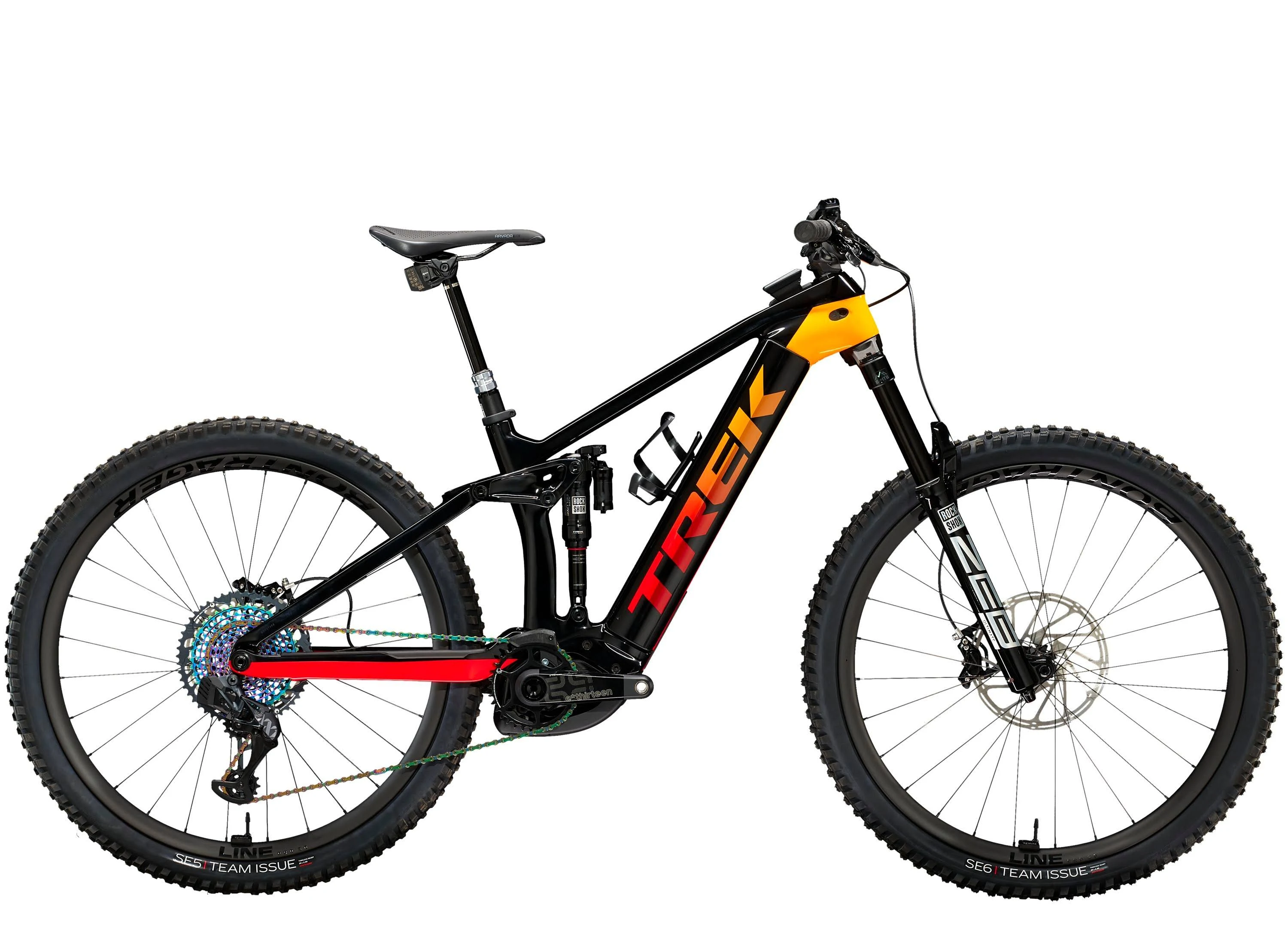
Ever tried biking up a steep hill and felt like your legs might give out? That’s where the right electric bike makes all the difference. Whether you're cruising through rolling countryside or facing daily uphill commutes, choosing the best e-bike for hilly terrain is key to a smoother, stronger ride.
Hilly areas put your bike—and your stamina—to the test. Think long, steep grades, sudden elevation changes, and battery-draining climbs. Not all e-bikes are built to handle that kind of pressure, which is why it's crucial to look for models designed specifically to conquer hills.
So, what makes an e-bike hill-worthy? It comes down to three big factors:
- High torque: This is the power that helps you climb without stalling. Look for motors rated at 70Nm or more.
- Mid-drive motors: Unlike hub motors, these are mounted in the center and work with your gears—ideal for inclines.
- Large battery capacity: Climbing takes more energy, so you'll want a battery that can go the distance (think 500Wh and up).
Pro Tip: More torque doesn’t always mean a faster bike—it means a stronger one, especially when heading uphill.
In this guide, you’ll learn exactly what to look for in an e-bike built for elevation, plus our top picks across different categories and budgets. Whether you’re a commuter, mountain adventurer, or weekend explorer, we’ll help you find the perfect match.
Ready to level up your ride? Let’s climb.
Key Features to Look for in a Hill-Climbing E-Bike
Conquering steep terrain isn’t just about brute force—it’s about choosing the right combination of power, battery life, and build. If you want to ride smarter (not harder), these are the essential features to keep in mind when shopping for the best e-bike for hills.
2.1. High Torque Output = More Climbing Power
Torque is what helps your e-bike push uphill without stalling or straining. It’s measured in Newton-meters (Nm), and higher numbers mean more hill-climbing muscle.
- Look for motors rated at 70Nm or higher for steep or sustained climbs.
- Bosch Performance Line CX: Up to 85Nm—excellent for mountain terrain.
- Shimano EP8: Delivers a smooth 85Nm with a natural feel.
- Bafang M600: Offers 120Nm for serious punch (great for off-roaders).
Pro Tip: If your daily ride includes steep grades, torque is more important than top speed.
2.2. Mid-Drive vs. Hub Motor: Know the Difference
Your e-bike’s motor placement plays a huge role in climbing ability.
- Mid-drive motors sit in the center and power the crank directly. This design allows the motor to work with your bike’s gears, giving you better performance on hills.
- Hub motors, found in the wheel, are cheaper but less efficient on inclines.
Why mid-drive is better for hills:
- Better torque transfer through your gear system
- Balanced weight improves traction and control
- More natural ride feel
Quick Comparison:
| Feature | Mid-Drive Motor | Hub Motor |
|---|---|---|
| Hill Climbing Power | ⭐⭐⭐⭐⭐ | ⭐⭐ |
| Price | $$$ | $ |
| Weight Distribution | Centered & Balanced | Rear-heavy |
2.3. Long-Lasting Battery Life for Steep Rides
Hills eat up battery faster than flat roads. That’s why battery capacity is key.
- Look for 500Wh or more if you’re riding in consistently hilly areas.
- Steep climbs can cut your range by 30–50%, especially in higher assist levels.
- Pairing the battery with an efficient motor (like Bosch or Shimano) can stretch your range.
Estimated Range:
- Flat Terrain: ~50–70 miles on a 500Wh battery
- Hilly Terrain: ~25–40 miles (depending on assist level and rider weight)
Pro Tip: Avoid letting your battery dip below 20% on big rides—it can stress the system and cut performance.
2.4. Gear Range and Drivetrain Quality Matter
Think of your drivetrain as your e-bike’s transmission. When you're climbing, a wide gear range helps your legs and motor work together efficiently.
- Choose bikes with 10–12 speed cassettes for maximum versatility.
- Brands like Shimano Deore, SRAM Eagle, or MicroSHIFT Advent X offer reliable performance for hill-heavy routes.
Key Benefits:
- Easier pedaling on steep inclines
- Better energy efficiency for both rider and battery
- Smoother gear shifts under load
2.5. Suspension & Braking for Confident Downhills
What goes up must come down—sometimes fast. That’s where good suspension and brakes come in.
- Front suspension (hardtail) is great for moderate trails and city hills.
- Full suspension (dual) is better for rugged off-road descents and comfort on bumpy terrain.
- Hydraulic disc brakes give you strong, consistent stopping power in all weather.
Look for:
- At least 100mm travel in front suspension
- Shimano or Tektro hydraulic brakes with large rotors (180mm+)
From high-torque motors to efficient drivetrains, every part of your e-bike should work in sync to power you uphill and keep you safe on the way down. Up next, we’ll break down the best electric bikes for hilly terrain by type and budget—so you can find your perfect match without the guesswork.
Ready to find your hill-climbing hero? Keep reading.
Best E-Bikes for Hilly Terrain (By Category)
From high-powered mountain beasts to budget-friendly commuters, the best e-bikes for hilly terrain come in all shapes and sizes. Below, you’ll find top picks across categories—each one tested and recommended for steep climbs, extended range, and total ride confidence.
3.1. Best Overall Climbing E-Bike
Trek Rail 9.9 XX1 AXS Gen 3
This full-suspension e-MTB blends premium trail performance with elite hill-climbing ability. With Bosch’s Performance Line CX motor, it delivers a smooth yet powerful climb, ideal for technical ascents and endurance rides.
| Feature | Details |
|---|---|
| Motor | Bosch Performance Line CX (mid-drive) |
| Torque | 85Nm |
| Battery | Bosch PowerTube 750Wh |
| Top Features | 160mm RockShox suspension, SRAM wireless shifting, super-adjustable frame |
| Price Range | $13,499 |
| Best For | Riders seeking all-day mountain power and top-tier parts |
Why it wins: It’s an all-around monster—refined, responsive, and built for elevation.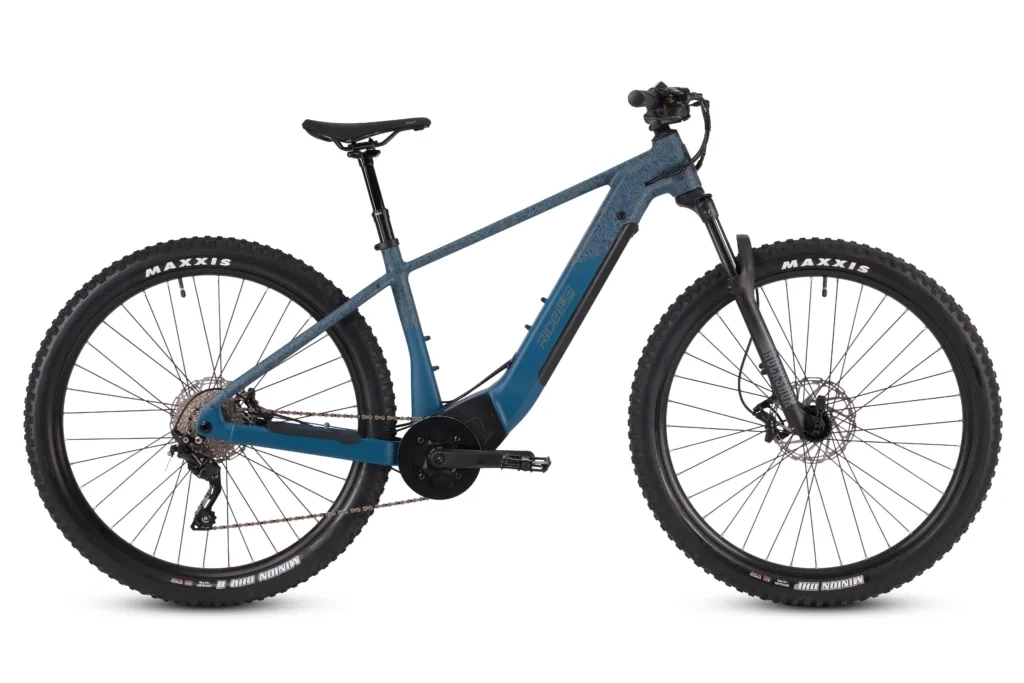
3.2. Best Mid-Drive E-Bike for Steep Hills
Rize RX Pro
For those who want sheer torque dominance, the Rize RX Pro hits hard. This beast sports a 160Nm Bafang mid-drive, making it one of the most powerful e-bikes on the market.
| Feature | Details |
|---|---|
| Motor | Bafang M620 mid-drive (1000W) |
| Torque | 160Nm |
| Battery | 52V 15Ah or 20Ah options |
| Top Features | Fat tires, advanced torque sensor, 9-speed drivetrain |
| Price Range | $2,799–$3,399 |
| Best For | Steepest hills, off-road power, heavy-duty hauling |
Pro Tip: This bike borders on Class 3/4 specs—check your local e-bike laws before ripping through city limits.
3.3. Best Budget E-Bike for Hilly Areas
Qiolor Tiger RL
Don't be fooled by the price—this retro-style e-bike has real hill-climbing chops, with 85Nm of torque and a smooth power band for urban inclines.
| Feature | Details |
|---|---|
| Motor | Rear hub motor (750W, 1100W peak) |
| Torque | 85Nm |
| Battery | 48V 13Ah (upgradeable) |
| Top Features | Fat tires, hydraulic brakes, smart lock, 60-mile range |
| Price Range | $1,399 |
| Best For | Budget riders, city hills, stylish commutes |
Other Strong Budget Picks:
- Aventon Aventure.2 – Torque sensor, 750W hub motor, fat tires (~$1,799)
- Ride1Up Vorsa – Compact, efficient hill climber with 720Wh battery (~$1,395)
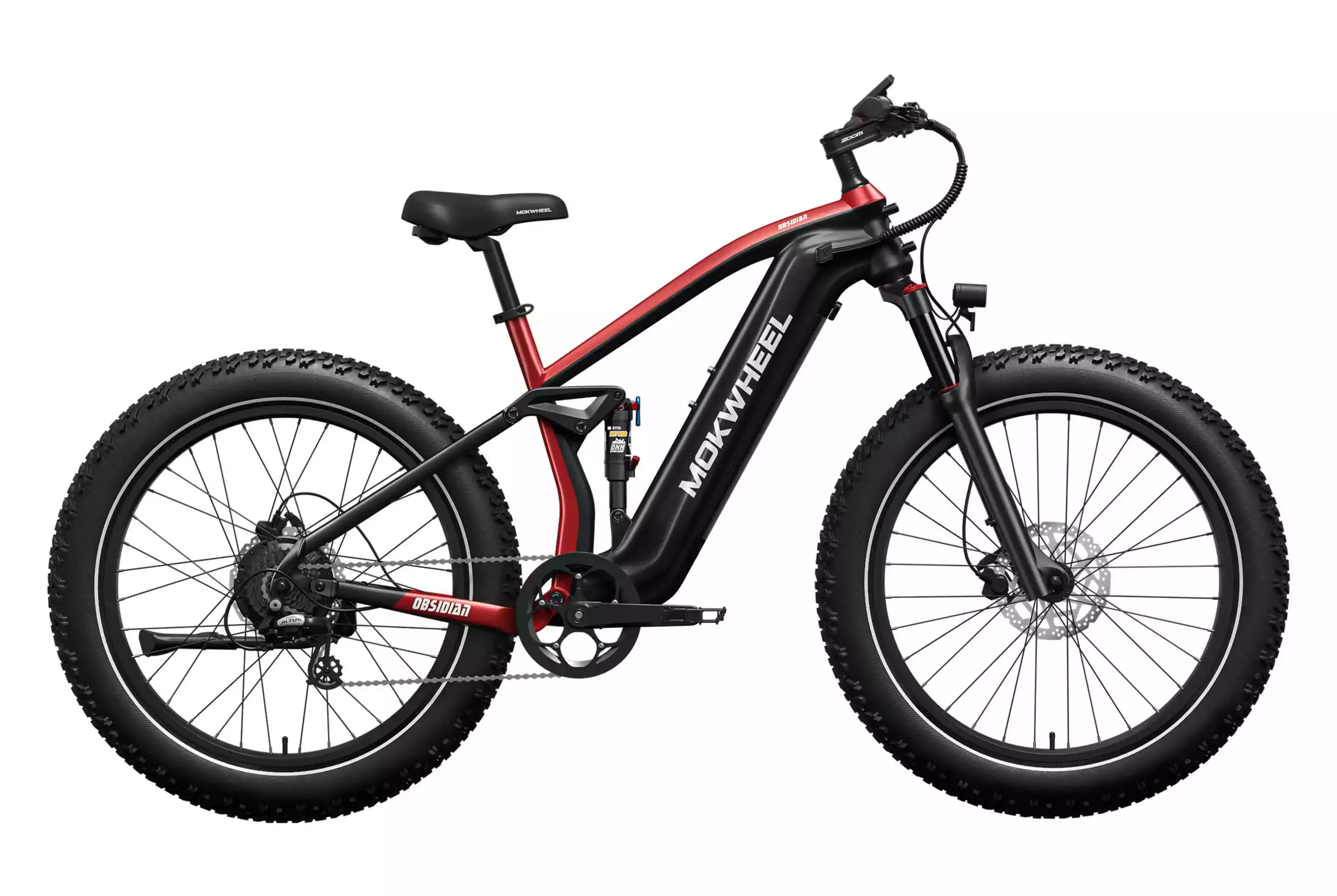
3.4. Best Full-Suspension E-MTB for Mountain Terrain
Mokwheel Obsidian Series
Designed for wild terrain and long-distance adventures, the Obsidian blends power with tech-forward features—solar charging, big suspension, and serious off-road potential.
| Feature | Details |
|---|---|
| Motor | High-power mid-drive (estimated 1300W peak) |
| Torque | Not specified (high-performing) |
| Battery | 60–80 mile range; solar charging capable |
| Top Features | Full suspension, fat tires, adventure-ready geometry |
| Price Range | $2,199.99 |
| Best For | Backcountry rides, trail hunting, all-terrain climbs |
Bonus Option: Orbea Wild – Bosch CX motor, 170mm travel, and competition-ready geometry.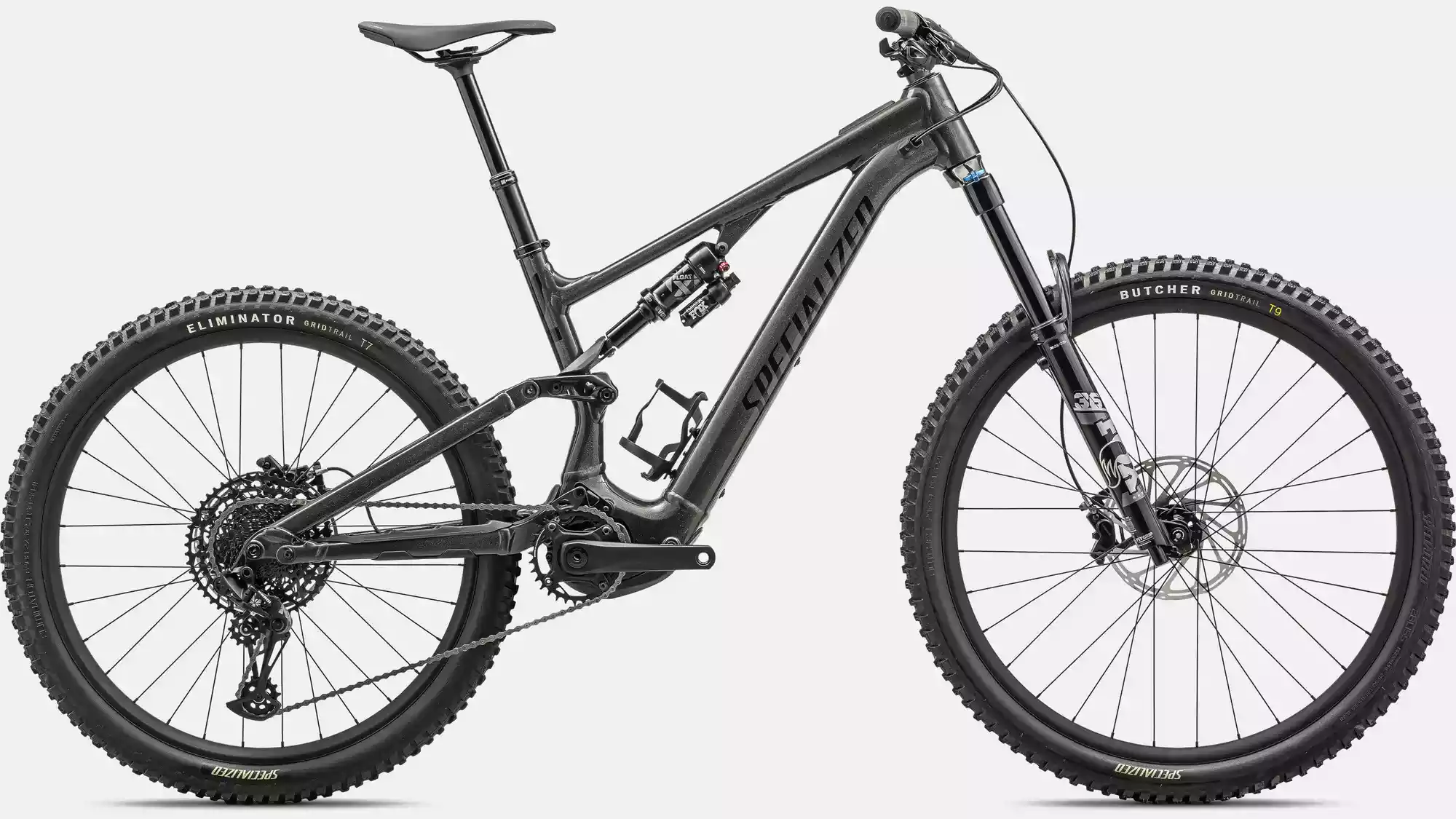
3.5. Best Lightweight E-Bike with Climbing Power
Specialized Turbo Levo SL
This sleek, featherweight e-MTB is perfect for riders who want nimble handling with just the right amount of boost. At 50Nm, it won’t win torque contests—but it climbs surprisingly well on moderate hills.
| Feature | Details |
|---|---|
| Motor | Specialized SL 1.2 mid-drive |
| Torque | 50Nm |
| Battery | 320Wh (extendable to 480Wh) |
| Top Features | 17kg frame, agile geometry, smooth power curve |
| Price Range | ~$8,000+ |
| Best For | Lighter riders, trail agility, long mixed terrain days |
Quick Reference Comparison
| Category | Best Pick | Motor Type | Torque | Battery | Price | Ideal Use |
|---|---|---|---|---|---|---|
| Best Overall Climber | Trek Rail 9.9 | Mid-drive | 85Nm | 750Wh | $13,499 | High-end climbing, all-day riding |
| Best Mid-Drive for Steep Hills | Rize RX Pro | Mid-drive | 160Nm | 52V 15–20Ah | $2,799+ | Power-heavy climbs, off-road |
| Best Budget for Hilly Areas | Qiolor Tiger RL | Hub | 85Nm | 48V 13Ah | $1,399 | Urban hill climbs, budget-friendly |
| Best Full-Suspension E-MTB | Mokwheel Obsidian Series | Mid-drive* | High | 60–80mi | $2,199.99 | Mountain trails, off-grid adventures |
| Best Lightweight Climber | Turbo Levo SL | Mid-drive | 50Nm | 320–480Wh | $8,000+ | Lightweight trail riders, agility |
These bikes prove you don’t have to suffer uphill. Whether you're scaling rugged trails, taking on long mountain commutes, or tackling a few steep blocks in your neighborhood, there’s an electric bike built for that.
Next Up: Want to make the most of your hilly ride? Let’s go over some pro tips for riding smart, staying safe, and saving battery power.
Tips for Riding an E-Bike on Hilly Terrain
Steep climbs don’t have to drain your battery—or your energy. With a few smart techniques, you can make every hill feel a little flatter and keep your ride smooth from bottom to top. Here’s how to ride more efficiently and get the most out of your hill-climbing electric bike.
Use Pedal-Assist Strategically
Pedal-assist is your best friend on climbs—but only when used right. Cranking it to the max from the start can burn through your battery faster than you think.
- Use lower assist levels on gentler grades to save power.
- Save Turbo or Boost mode for the steepest sections.
- Try riding in Eco or Tour mode to stretch your range, especially on long climbs.
Pro Tip: Think of pedal-assist like gears in a car—use more only when you really need it.
Shift Gears Before the Climb Starts
Unlike cars, e-bikes don’t love sudden gear changes under stress. Shifting too late—midway up a hill—can strain your chain and motor.
- Downshift early as you approach a hill so you’re ready to spin efficiently.
- Use lower gears to reduce resistance and help the motor assist you more smoothly.
- Listen for grinding or skipping—those are signs you waited too long to shift.
Plan Your Route with Elevation in Mind
Not all miles are created equal. A short ride with big climbs can be more demanding than a flat cruise.
- Use apps like Komoot, Ride with GPS, or Google Maps (bike mode) to preview elevation.
- Look for alternate routes that offer gentler climbs or switchbacks for longer ascents.
- Check the weather too—headwinds + hills = major battery drain.
Keep Your Battery Above 20%
Running your e-bike battery down too far can reduce performance—and may shorten the life of your battery over time.
- Start hill-heavy rides with at least 60–80% charge.
- Avoid pushing the battery below 20%, especially on multi-climb routes.
- Carry a spare charger or plan pit stops if you're going long.
Pro Tip: If your e-bike allows it, bring a range extender battery for peace of mind on big elevation rides.
With these simple habits, you’ll climb smarter, protect your gear, and ride longer with confidence. Whether you're scaling steep streets or winding up forest trails, the right approach makes every ascent more enjoyable.
Coming up next: We’ll tackle the most common questions about e-bikes and hills—so you can ride prepared and informed.
FAQs: E-Bikes and Hilly Terrain
Wondering how e-bikes really perform on hills? You’re not alone. These are some of the most common questions riders ask before taking on elevation. Let’s break them down so you can climb with confidence.
Can Hub Motors Handle Hills?
Yes—but with limitations.
Hub motors, especially rear hub types, can manage moderate hills, especially if they’re rated 750W or higher and paired with a torque sensor. But for long, steep climbs, a mid-drive motor is a better choice.
- Hub motors don’t use your bike’s gears, so they can struggle on steep terrain.
- Mid-drives work with your gearing to maintain momentum and climb more efficiently.
Pro Tip: For city riding with occasional hills, a strong hub motor will do the trick. For serious inclines or trail use, go mid-drive.
How Long Will My Battery Last on a Hilly Ride?
It depends on your battery size, terrain, assist level, and rider weight—but expect shorter range on hills.
- A 500Wh battery might get 25–40 miles in hilly conditions vs. 50–70 on flat ground.
- Using high assist modes or climbing with heavy loads will drain it faster.
- Motor efficiency also matters—Bosch and Shimano systems tend to stretch battery life better on climbs.
To extend your range:
- Use lower assist levels when possible.
- Shift early to reduce strain.
- Stay above 20% battery to keep performance consistent.
Do I Need Full Suspension for Climbing?
Not necessarily. Suspension helps more on the way down than on the way up.
- Front suspension (hardtail) is usually enough for city hills and basic trails.
- Full suspension (both front and rear) is ideal for off-road climbs, rocky terrain, or comfort on longer rides.
If you’re riding technical mountain trails, full suspension is a must. But if you’re sticking to pavement or light gravel, save the money and weight with a hardtail.
What’s More Important: Torque or Wattage?
Torque. For climbing, it’s torque—not just watts—that gets you up the hill.
- Torque is the turning force that helps move your bike uphill. It’s measured in Nm.
- Wattage shows how much power your motor can output, but high watts with low torque can still feel sluggish on climbs.
Look for motors rated at 70Nm or higher for serious hill work. Brands like Bosch, Bafang, and Shimano EP8 offer great climbing torque.
Choosing the right motor, battery, and setup makes all the difference in how your e-bike handles hills. Whether you’re still comparing options or ready to ride, the answers above should help you move forward with confidence.
Still climbing through questions? Check out our full e-bike buying guide or head straight to our top picks for hilly terrain.
6. Conclusion: Ride Higher with the Right E-Bike
When it comes to steep streets or mountainous trails, not all e-bikes are created equal. If you’re riding in hilly terrain, choosing the right combination of motor torque, battery capacity, and drivetrain is essential for a smooth, powerful climb.
A high-torque, mid-drive motor will give you the grunt you need on steep grades. A large, efficient battery keeps you moving without range anxiety. And quality components—from gears to brakes—make sure every ride is not just doable, but fun.
Pro Tip: Always test ride your e-bike on actual hills—online specs don’t always tell the full story.
Whether you’re commuting across rolling roads or heading deep into the mountains, the best e-bikes for hills turn every uphill challenge into an opportunity to ride farther, faster, and more confidently.
Ready to power up your ride? Explore our full e-bike buying guide or check out the latest 2025 reviews for top-rated climbing e-bikes. Your next great ride starts at the top.
7. Additional Resources for Hilly E-Bike Riders
Want to dive deeper into finding the perfect e-bike for hills? Whether you're comparing motors or mapping your next climb, these tools and guides will help you ride smarter and go further.
Torque Comparison Charts
Not sure how 85Nm stacks up to 60Nm? These visual guides make it easy to compare motor torque across brands like Bosch, Shimano, and Bafang.
- E-Bike Torque Comparison Chart (2025)
- Mid-Drive Motor Torque Ratings Explained
Battery Range Calculators
Estimate how far your e-bike can go on hilly terrain based on your weight, assist level, and elevation gain.
- Bosch eBike Range Calculator
- Specialized Turbo Range Tool
Pro Tip: Always add 10–15% buffer when riding routes with major elevation gains.
Local Trail & Commute Route Guides
Discover hill-friendly routes and test climbs in your area using trail-focused maps or e-bike commute planners.
- Trailforks – E-MTB Trails
- Komoot – E-Bike Climbing Routes
- Ride with GPS – Elevation Maps
Maintenance Tips for Hill Riders
Steep terrain puts more strain on your drivetrain, brakes, and battery. Keep your gear in top shape with these maintenance guides:
- How to Care for Your E-Bike Motor on Hills
- E-Bike Brake & Gear Maintenance
- Battery Health for Long Climbs
These extra tools can help you choose smarter, plan better, and keep your ride performing its best. Whether you're climbing daily or gearing up for a weekend adventure, a well-equipped rider is a confident one.
Still exploring? Head back to our top picks or check out our full 2025 e-bike buying guide for hilly terrain.
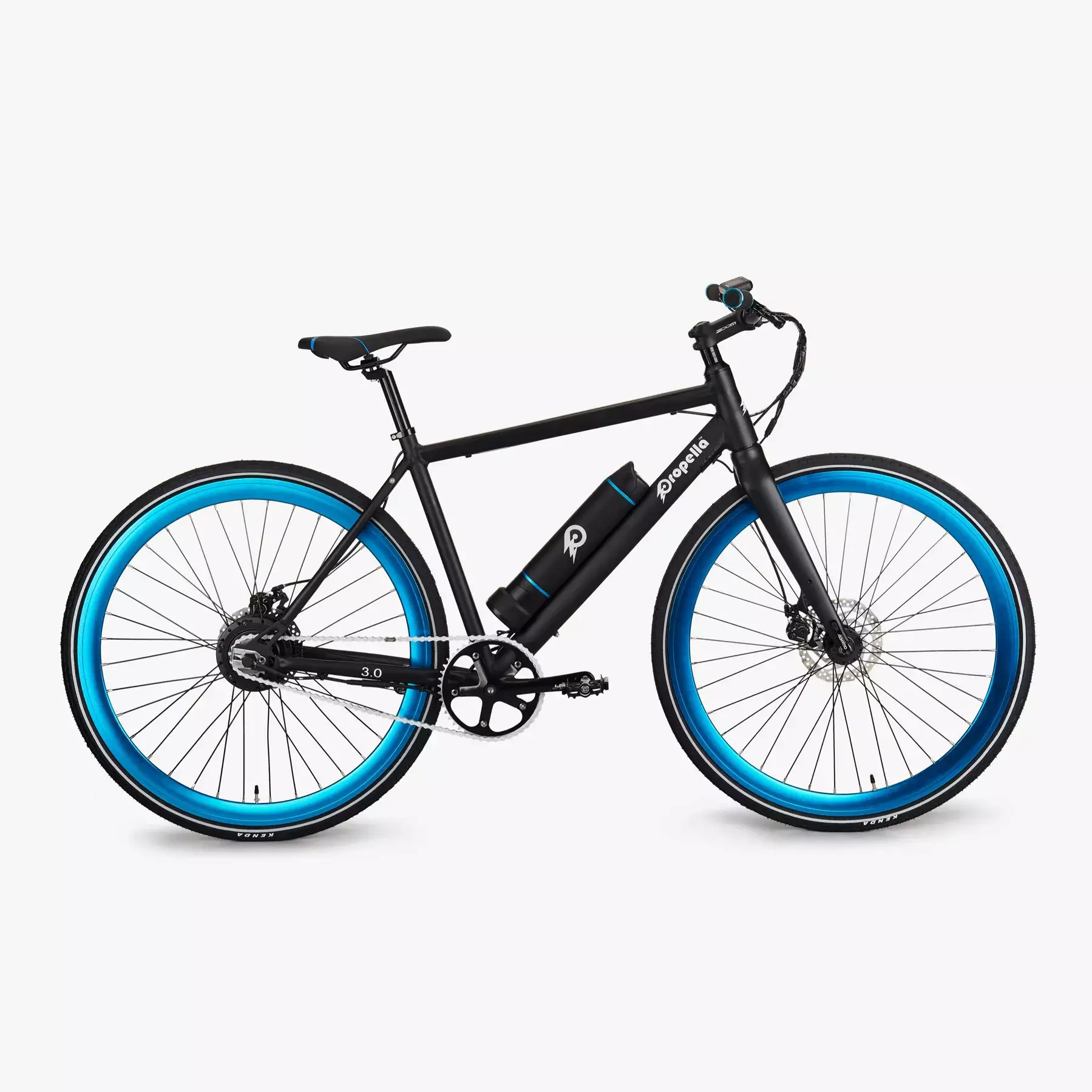
Rush hour doesn’t have to mean stress and gridlock. If you're looking for a faster, greener, and more fun way to get around the city, an e-bike might just be your new best friend.
From weaving through traffic to folding neatly under your desk, today’s commuter e-bikes are built for real-world city living—and they’ve never been better.
In this guide, you’ll learn how to choose the best e-bike for urban commuting, plus see our top picks for lightweight, foldable, and traffic-ready models in 2025.
What Makes a Great City Commuter E-Bike?
Not all electric bikes are created equal—especially when you’re riding through busy downtown streets or hopping on public transit.
Here’s what to look for in the best e-bikes for city commuters:
- Lightweight frames – Easier to carry up stairs or onto a train
- Foldable design – Ideal for small apartments and office storage
- Strong battery & range – Enough juice to cover your daily commute and then some
- Responsive brakes & handling – Crucial for stop-and-go traffic
- Built-in lights & fenders – Stay visible and clean, rain or shine
Pro Tip: Look for bikes with removable batteries if you plan to charge at the office or don’t have garage access.
Best Lightweight E-Bikes for Effortless City Travel
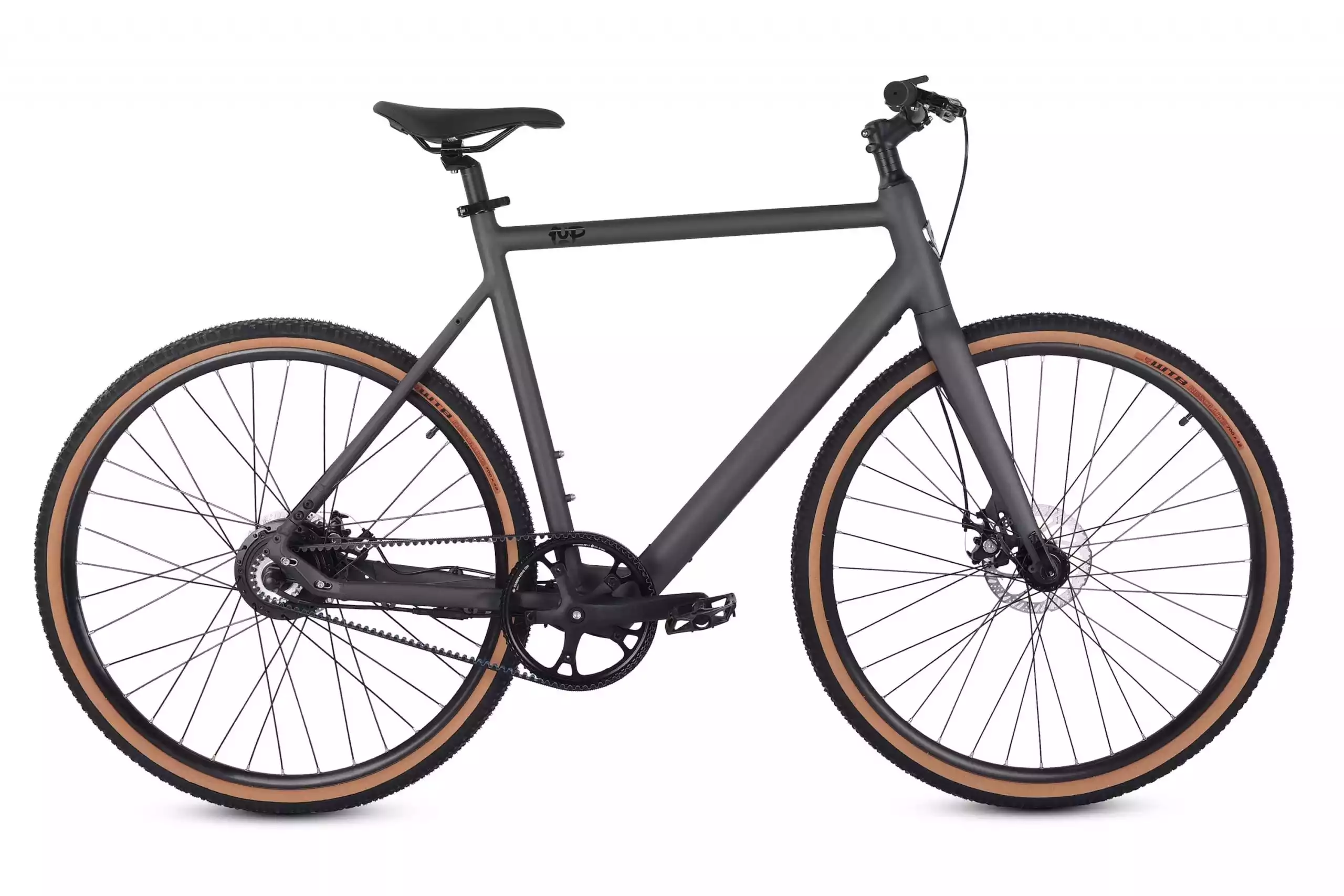
1. Ride1UP Roadster V2
- Weight: 33 lbs
- Range: Up to 30 miles
- Why it's great: Ultra-slim design and clean belt drive for a quiet, low-maintenance ride. Perfect for short daily commutes.

2. Propella 7S
- Weight: 37 lbs
- Range: 20–40 miles
- Why it's great: Sleek, minimal design with responsive pedal assist. Easy to carry and perfect for urban hills.
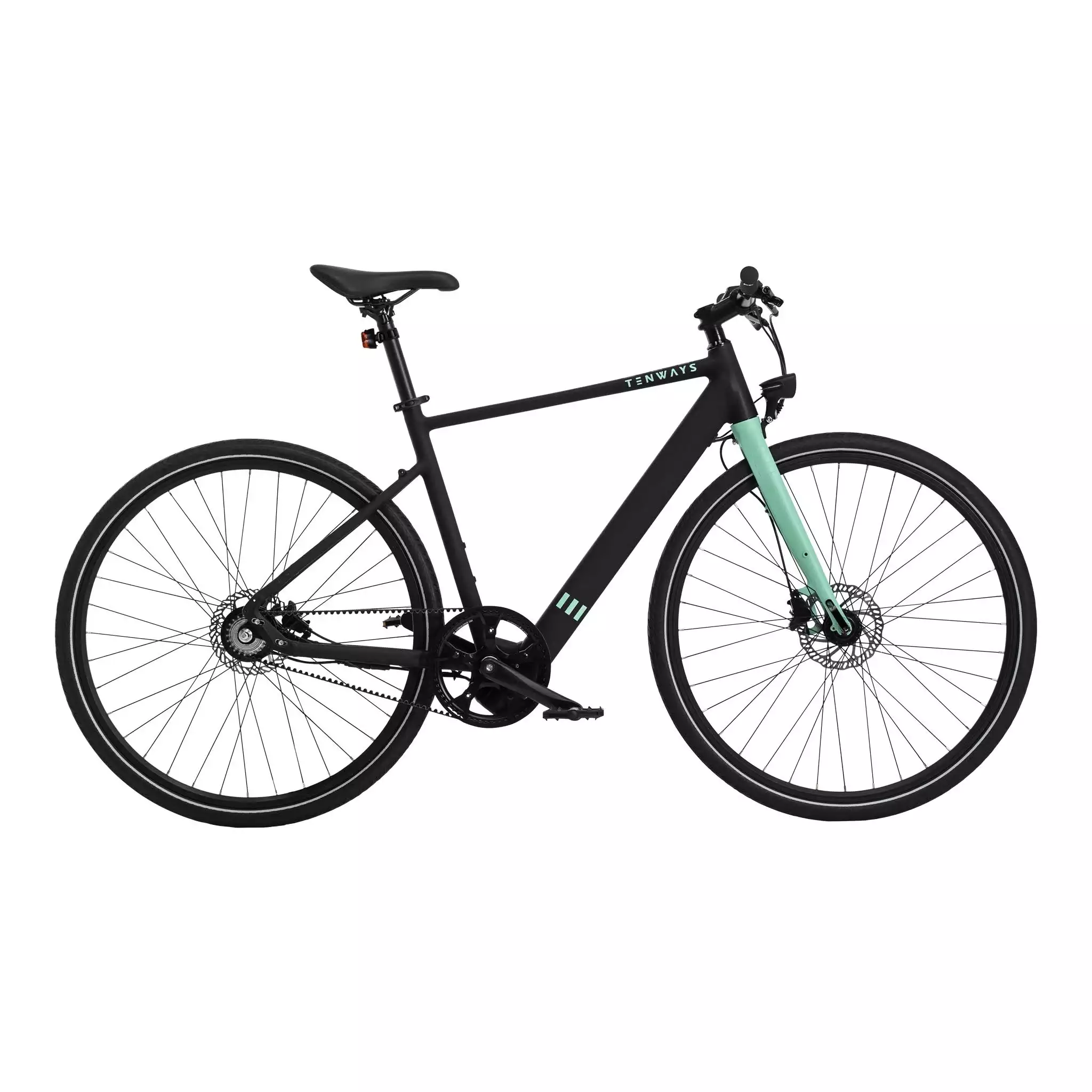
3. Tenways CGO600
- Weight: 34 lbs
- Range: Up to 45 miles
- Why it's great: Smooth torque sensor and internal cabling keep it tidy and modern for city rides.
Best Foldable E-Bikes for Urban Life on the Go
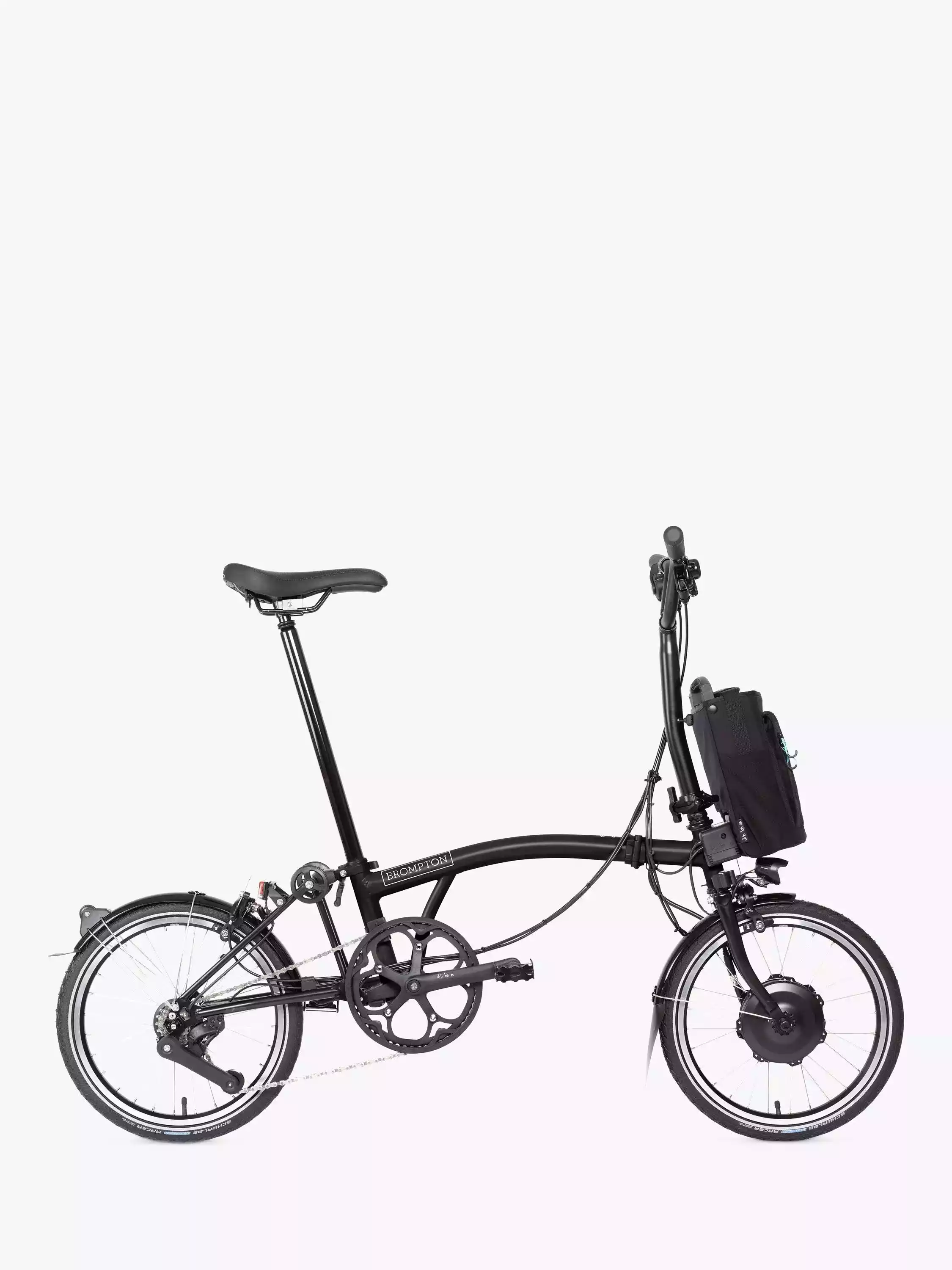
1. Brompton Electric C Line
- Fold Time: 20 seconds
- Range: 20–45 miles
- Why it's great: Legendary foldability and compact size, paired with a reliable electric boost.

2. Lectric XP 3.0
- Fold Size: 37 x 18 x 28 inches
- Range: 45–65 miles
- Why it's great: Rugged yet compact with fat tires for stability and an unbeatable price point.
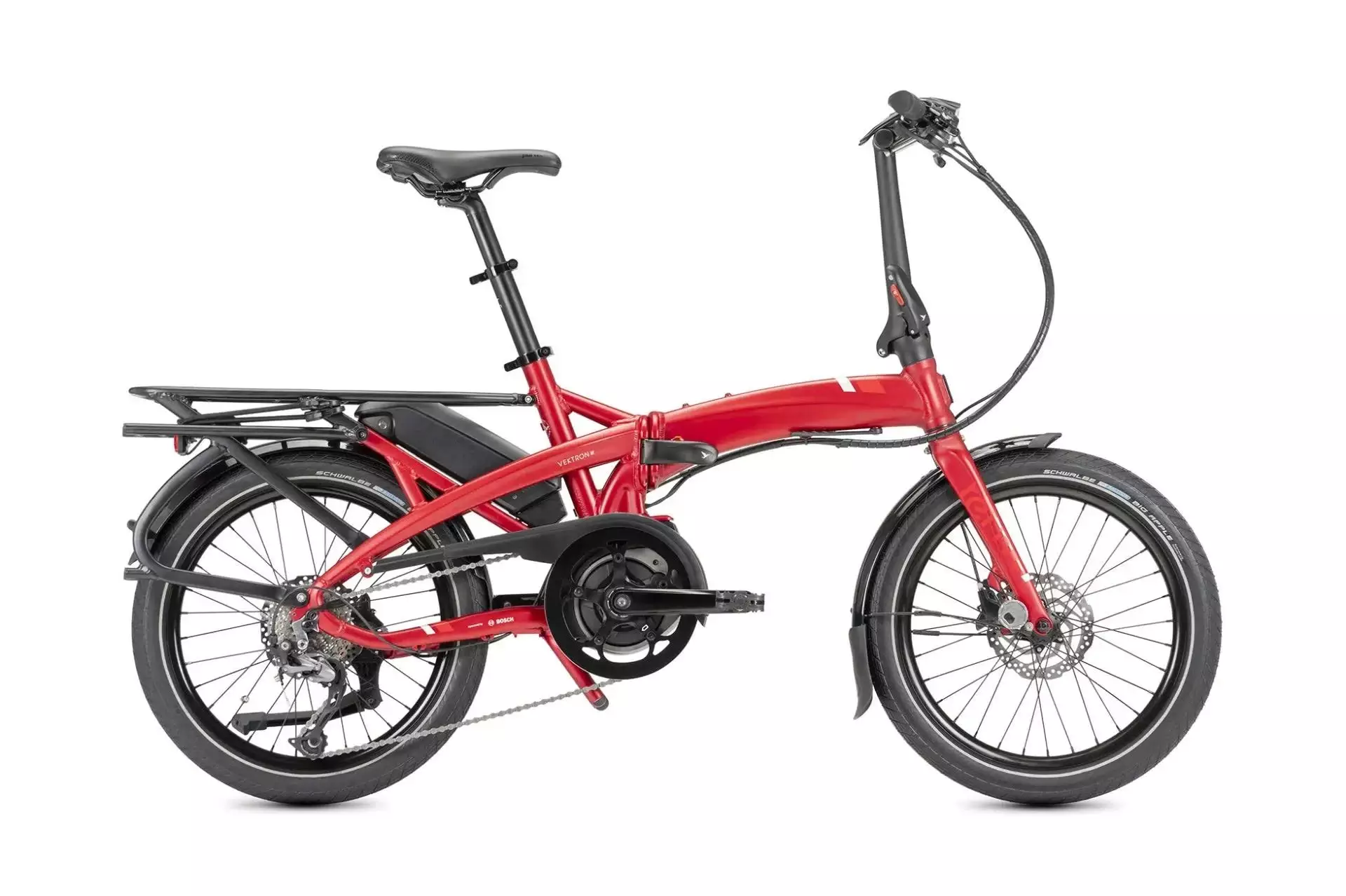
3. Tern Vektron Q9
- Fold Time: 10 seconds
- Range: 25–50 miles
- Why it's great: Premium folding bike with top-tier components and a Bosch motor for serious performance.
Pro Tip: If you plan to mix bike + train travel, check folded dimensions to make sure it fits transit rules.
Traffic-Ready Features That Matter in the City
In a city setting, safety and control are everything. Here’s what sets a true commuter e-bike apart:
- Hydraulic disc brakes – For confident stopping power
- Integrated front and rear lights – No forgetting to clip them on
- Puncture-resistant tires – Say goodbye to mid-commute flats
- Upright geometry – Keeps you visible and comfortable
Want a smooth ride on potholes and curbs? Look for bikes with suspension forks or wider tires for extra cushion.
Final Thoughts: Ready to Commute Smarter?
Whether you need something foldable for your train ride, or lightweight enough to carry into your walk
What Makes an E-Bike Perfect for City Commuting?
When you're weaving through traffic, hopping on public transit, or parking in tight spaces, not just any e-bike will do. City commuters need bikes built for real-world urban life—light, compact, and smartly equipped. Here's what to look for when choosing the best e-bike for city commuting.
Lightweight Design: Why It Matters
Nobody wants to lug a heavy bike up stairs or into a train. A lightweight e-bike makes city commuting more manageable, especially if you live in a walk-up or combine biking with other transportation.
Benefits of a lightweight build:
- Easier to carry up stairs or onto buses
- Faster acceleration and more responsive handling
- Simpler storage in apartments or office spaces
Most commuter e-bikes are made from aluminum or carbon fiber, which strike a solid balance between strength and lightness. Aim for models under 50 lbs if portability is a priority.
Pro Tip: Check the total weight including battery and accessories—not just the frame alone.
Foldability: Your Space-Saving Secret Weapon
If you’re tight on space or ride part of your commute on a train or bus, a foldable e-bike is a game changer. These bikes are designed to collapse quickly into a compact form, making them perfect for commuters in small apartments or shared workplaces.
Key folding features to consider:
- One-step or magnetic folding systems (faster and easier to use)
- Folded dimensions to ensure they fit under your desk or in a closet
- Secure locking mechanisms so they stay compact during transport
Models like the Brompton Electric or Gocycle G4 are popular examples of premium folding options in the 2025 electric bike market.
Pro Tip: Measure your trunk or entryway before buying—some “folding” e-bikes still take up more space than expected.
Traffic-Ready Features for Urban Survival
Riding in a city means dealing with cars, pedestrians, potholes, and stoplights. A great commuter e-bike should be ready for all of it—especially during rush hour.
Look for these traffic-ready features:
- Integrated front and rear lights for visibility at dawn, dusk, and in tunnels
- Reflectors and brake lights for added safety
- Full fenders to stay clean in wet conditions
- Responsive hydraulic or mechanical disc brakes for reliable stopping power
- Nimble handling to navigate tight corners and unexpected obstacles
Some models even include horns, turn signals, or automatic brake lights, which make a big difference in high-traffic zones.
Ready to Ride?
If you’re serious about stress-free commuting, choosing an e-bike with a lightweight frame, foldable design, and built-in safety features is a smart investment. These aren’t just nice-to-haves—they’re essentials for surviving (and thriving) in the city.
Next up: We’ll show you top-rated city e-bikes for 2025 that combine all these features in one sleek, ride-ready package.
Top Lightweight E-Bikes for City Commuters
If you're tired of lugging a bulky bike through stairwells or squeezing it onto public transit, you're not alone. Commuters everywhere are ditching heavy, cumbersome rides in favor of lightweight e-bikes that deliver agility, speed, and serious urban versatility. Below, we’ve rounded up five standout models in the 2025 electric bike review cycle—each with just the right mix of weight, range, and power for navigating the city with ease.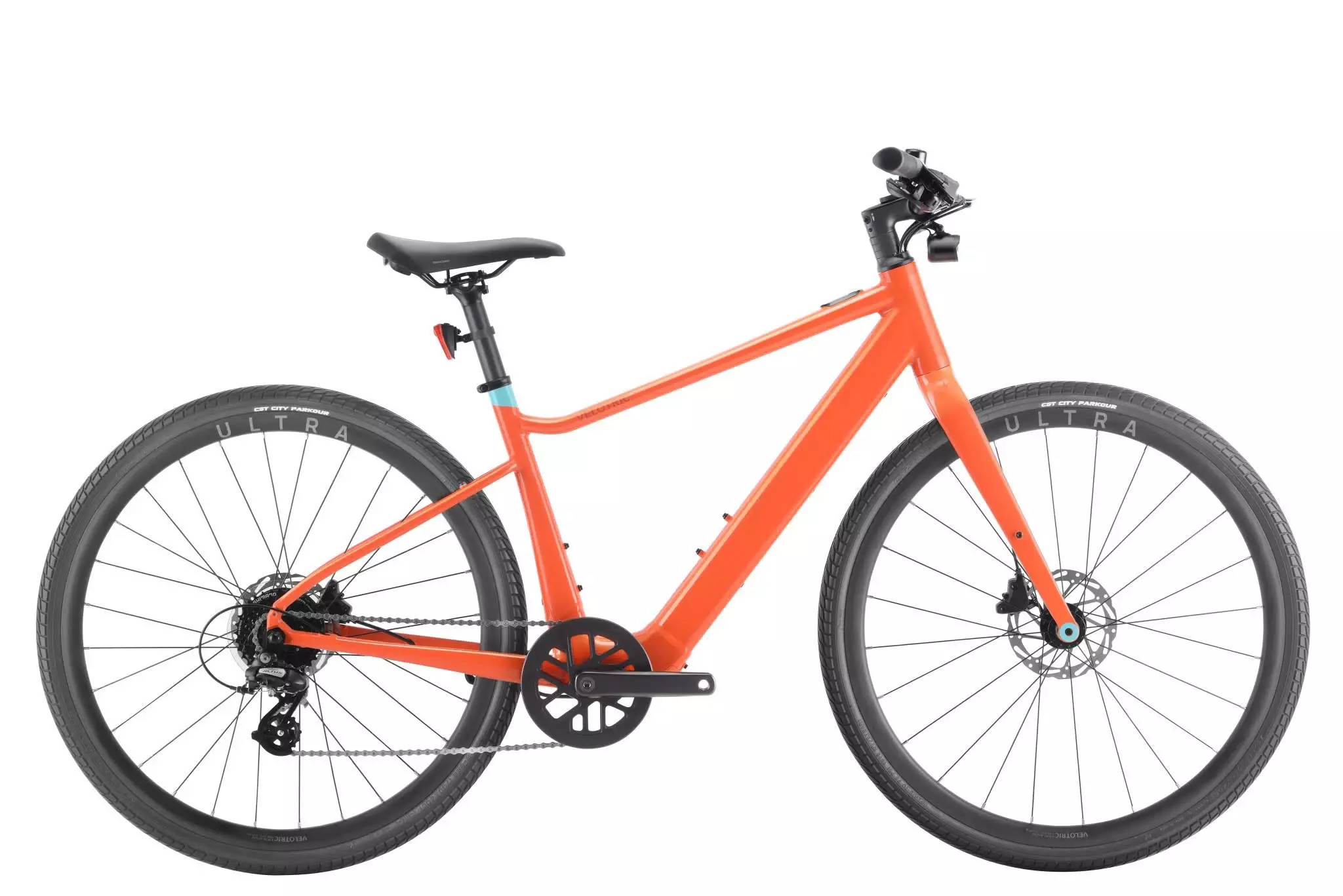
Velotric T1 ST Plus
- Weight: 39 lbs
- Motor: 350W rear hub (peaks at 600W)
- Range: Up to 70 miles (Eco Mode)
This commuter-friendly bike checks all the boxes: compact, clean design, a responsive torque sensor, and excellent real-world range. It’s light enough for stair carries, yet powerful enough to breeze through flat-to-moderate terrain.
Pros:
- Excellent battery life
- Smooth torque-sensing pedal assist
- Comfortable geometry and adjustable fit
Cons:
- Not ideal for steep hills
- Slightly heavier than carbon-frame models
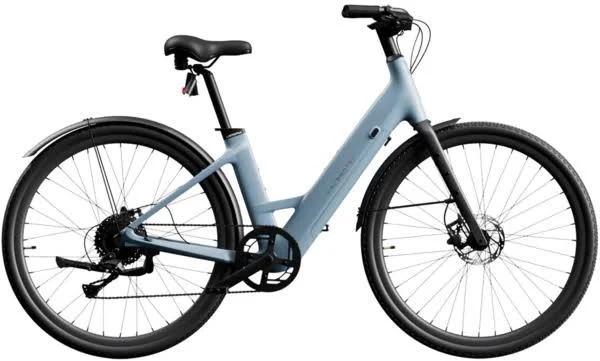
Urtopia Carbon 1 Step-Thru
- Weight: 36 lbs
- Motor: 350W rear hub (peaks at 750W)
- Range: Up to 80 miles
With a full carbon fiber frame, this is one of the lightest and sleekest e-bikes you’ll find. It’s also packed with commuter tech: turn signals, GPS tracking, and voice control. The ride is impressively smooth, especially with the four pedal assist levels.
Pros:
- Ultra-light carbon build
- Long range with fast charging
- Smart features and hydraulic brakes
Cons:
- Premium price
- Slightly lower max rider weight
Pro Tip: If you want the latest smart features and lightweight portability, this one’s hard to beat.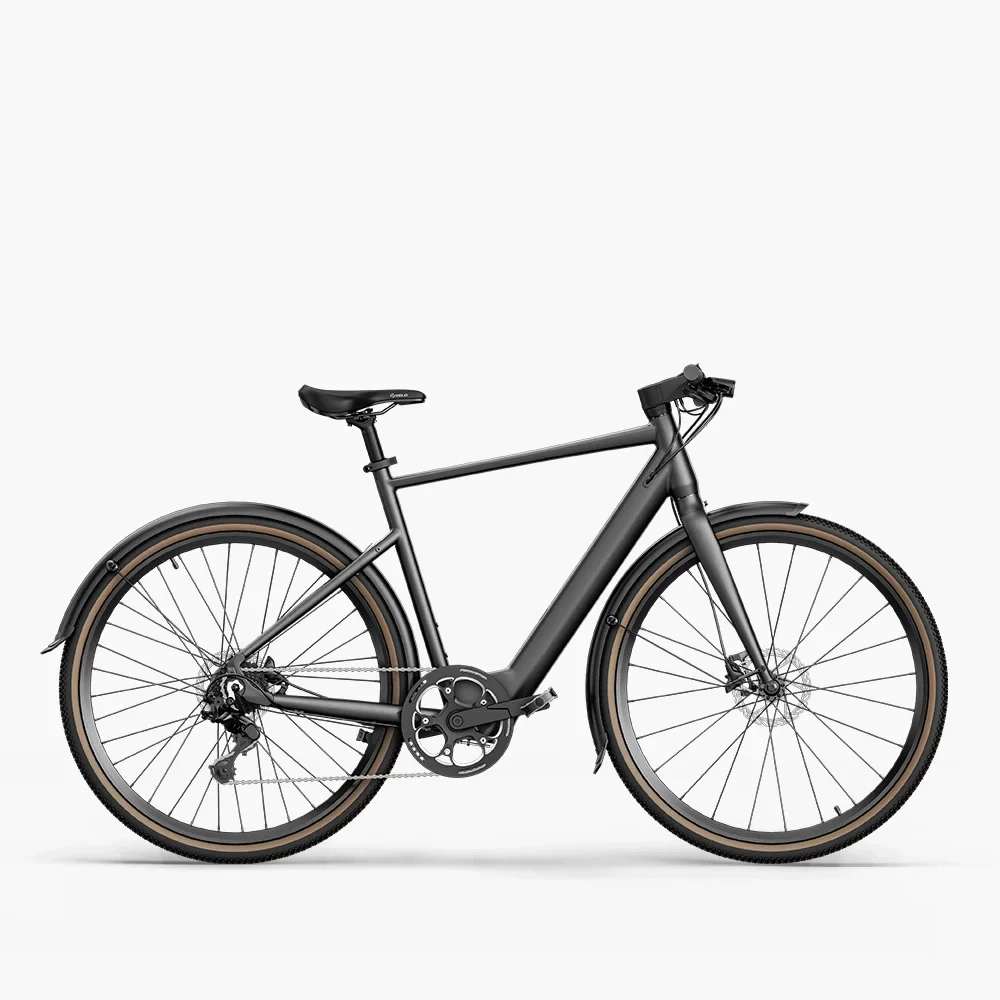
Fiido C21 Electric Road Bike
- Weight: 38.5 lbs
- Motor: Approx. 250–350W (varies by region)
- Range: ~50 miles (est.)
Sleek, sporty, and versatile—this model combines urban commuter style with gravel-friendly geometry. A built-in torque sensor and smooth LCD display make it approachable for new e-bike users, while still offering solid performance for regular city riders.
Pros:
- Stylish frame and compact battery
- Adaptable for road and light gravel
- Very commuter-friendly geometry
Cons:
- Specs vary by seller—check carefully
- Not ideal for hilly cities
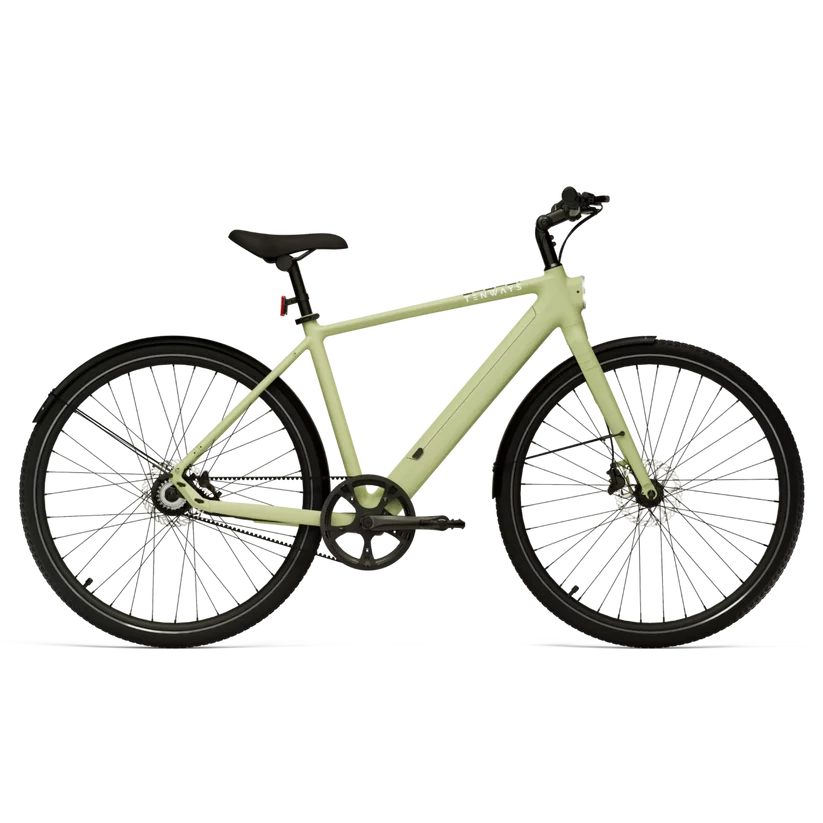
Tenways CGO600 Pro
- Weight: 37 lbs
- Motor: 350W rear hub
- Range: Up to 53 miles
This low-maintenance e-bike is beloved for its silent operation and sporty city ride feel. The belt drive, torque sensor, and clean design make it one of the best e-bikes for professionals who want something reliable, clean, and low-fuss.
Pros:
- Quiet belt drive
- Integrated lights and display
- Natural-feeling assist
Cons:
- Limited power for steeper terrain
- No throttle (Class 1 only)
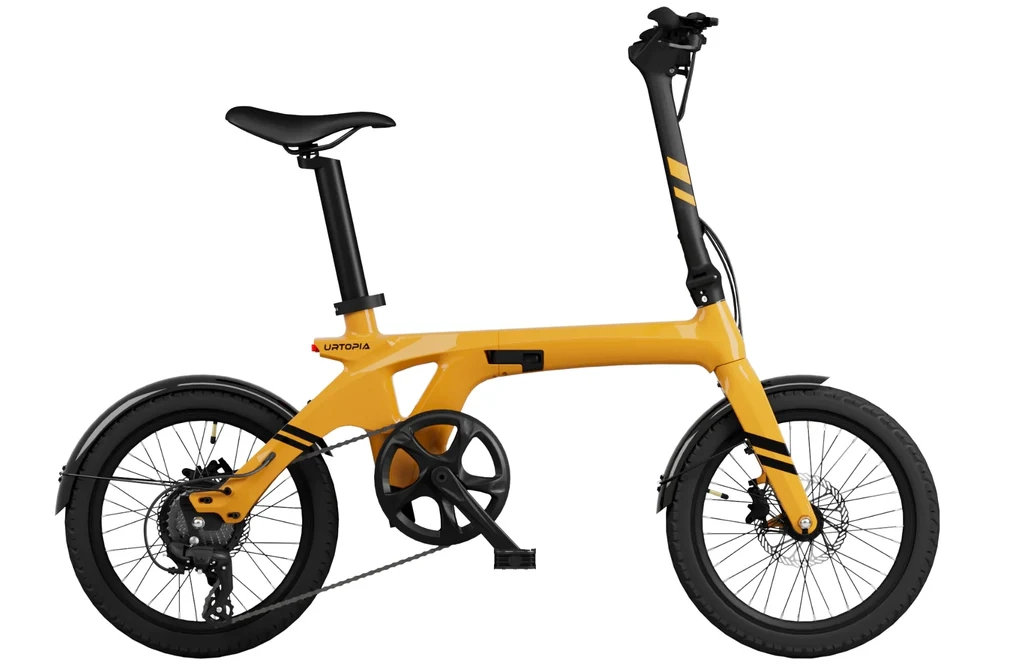
ADO Air Carbon
- Weight: 27.5 lbs
- Motor: 250W rear hub, 65Nm torque
- Range: Up to 62 miles
For ultra-portability, the ADO Air Carbon is the lightest option here. The folding carbon frame makes it a dream for apartment dwellers and transit riders. Don’t let the smaller motor fool you—it still delivers snappy acceleration in city conditions.
Pros:
- Feather-light and foldable
- Excellent torque for its size
- Ideal for last-mile and mixed-mode commuting
Cons:
- Smaller battery than others on this list
- Not ideal for larger riders or long, fast rides
✅ Summary: Which One Is Right for You?
| Model | Weight | Range | Best For |
|---|---|---|---|
| Velotric T1 ST Plus | 39 lbs | 70 miles | Long rides, smooth performance |
| Urtopia Carbon 1 | 36 lbs | 80 miles | Smart tech & high-end commuting |
| Fiido C21 | 38.5 lbs | ~50 miles | Stylish & versatile commuting |
| Tenways CGO600 Pro | 37 lbs | 53 miles | Low-maintenance city rides |
| ADO Air Carbon | 27.5 lbs | 62 miles | Ultra-light & portable commuting |
🚦 Final Thoughts
Choosing the best lightweight e-bike for city commuting depends on your daily route, whether you’ll be carrying your bike often, and how much smart tech you want onboard. Whether you're a casual rider or a dedicated commuter, there’s a model above that can make your mornings faster—and way more fun.
Ready to ride? Check out test rides at local dealers or trusted online retailers to find your perfect match.
Meta Description:
Looking for the best foldable e-bikes in 2025? Discover top picks for urban commuting with compact design, great range, and efficient motors in this foldable e-bike buying guide.
🚲 Best Foldable E-Bikes for Urban Mobility (2025)
Living in the city and short on space? Foldable e-bikes are a brilliant solution for urban commuters who need portability without sacrificing performance. Whether you're navigating tight hallways, hopping on transit, or storing your bike under a desk, these compact electric bikes bring flexibility to your everyday ride.
In this e-bike buying guide, we highlight five of the best foldable e-bikes of 2025 based on ease of folding, portability, battery range, and motor efficiency.
📊 Quick Look: Top Foldable E-Bike Comparison
| Model | Weight | Folded Size | Battery Range | Motor Power | Portability & Highlights |
|---|---|---|---|---|---|
| ADO Air Carbon | 27.5 lbs | Medium | Up to 62 mi | 250–350W | Ultra-light carbon frame, smooth torque assist |
| Engwe P20 | 41 lbs | Compact | Up to 62 mi | 250–350W | Folds in 10 sec, belt drive, torque sensor |
| Brompton Electric C Line | 36 lbs | Ultra-compact | 20–45 mi | 250W | Folds to briefcase size, ideal for transit |
| Volt Lite | 40 lbs | Compact | Up to 50 mi | 75Nm mid-drive | Mid-drive motor, carbon belt, great on hills |
| Dirwin Voyager | 59 lbs | 34 inches folded | Up to 50 mi | 500W | Suspension fork, removable battery, rugged design |
🔍 Model Spotlights
✅ ADO Air Carbon
- Why we love it: The lightest model in this roundup at just 12.5kg (27.5 lbs), thanks to a carbon fiber frame.
- Ride feel: A torque sensor delivers smooth, natural pedal assist.
- Extras: Belt drive, GPS anti-theft, and hydraulic brakes.
Pro Tip: If you carry your e-bike upstairs or into transit frequently, the ADO is worth every ounce saved.
✅ Engwe P20
- Why we love it: Compact folding (in just 10 seconds!) with great features like a carbon belt drive and torque sensor.
- Battery & motor: Delivers up to 62 miles on a single charge—perfect for long commutes.
- Comfort: Integrated turn signals and ergonomic handlebars.
✅ Brompton Electric C Line
- Why we love it: The king of compact, this bike folds smaller than nearly any e-bike on the market.
- Portability: Fits under desks, in lockers, or on trains with ease.
- Efficiency: While the range is lower (20–45 miles), the convenience is unmatched for multimodal riders.
✅ Volt Lite
- Why we love it: This one’s for the hill climbers. The 75Nm mid-drive motor handles inclines better than hub motors.
- Features: Integrated seatpost battery, carbon belt, and hydraulic disc brakes.
- Portability: Compact and easy to roll or carry.
✅ Dirwin Voyager
- Why we love it: Rugged, powerful, and still foldable enough to fit in a car trunk.
- Ride feel: 500W motor with hydraulic suspension = comfortable power.
- Practical touches: Removable battery, rear rack, and extra-thick tires.
🤔 What to Look for in a Foldable E-Bike
- Folding Ease: Look for simple latches or tool-free designs that fold in under 30 seconds.
- Battery Range: Most urban riders need 30–60 miles; choose more if you go longer or use throttle mode often.
- Motor Power: 250W is standard and legal in most cities; 350–500W adds hill-climbing power, but also weight.
- Weight: Anything under 40 lbs is very portable; over 55 lbs can be a challenge without ramps or elevators.
🧠 Pro Tips Before You Buy
- Test how it folds: Some models look compact but are awkward to carry.
- Check the dimensions: Don’t just trust “compact”—measure your car trunk, closet, or elevator to be sure.
- Mind the motor type: Mid-drive motors (like Volt Lite) are more efficient and hill-friendly than hub motors.
✅ Final Thoughts
Foldable e-bikes are the ultimate urban hack—perfect for small apartments, public transit, or car travel. Whether you value featherweight portability, smart commuting tech, or big power in a compact frame, there’s a foldable e-bike to fit your lifestyle.
Ready to ride? Explore test rides or visit local e-bike dealers to find your foldable match for 2025.
Meta Description:
Explore the best traffic-ready e-bikes for 2025, built for stop-and-go city life. Compare top models with integrated lights, powerful brakes, and agile handling for safe urban commuting.
🚦 Traffic-Ready E-Bikes Designed for City Streets
City traffic isn’t for the faint of heart—but with the right e-bike, it can actually be fun. Whether you're darting through stoplights or weaving around potholes, a traffic-ready e-bike can transform your commute into a smooth, stress-free ride.
In this guide, we’ll break down the best e-bikes for city streets—designed specifically for stop-and-go traffic, urban safety, and rider comfort in unpredictable conditions.
🔧 What Makes an E-Bike Traffic-Ready?
To confidently ride through crowded streets, your e-bike needs:
- Responsive handling for quick turns and frequent stops
- Integrated safety features like lights, brake sensors, and horns
- Comfort-forward designs that soak up bumps and reduce fatigue
Let’s take a look at some of 2025’s best picks for city-savvy riders.
🏆 Top Traffic-Optimized E-Bikes
| Model | Weight | Motor & Battery | Range | Safety Features | Comfort Highlights |
|---|---|---|---|---|---|
| Ride1Up Roadster V3 | ~34 lbs | 350W, 36V battery | Up to 33 mi | Lights, reflective accents | Lightweight, upright frame |
| Aventon Level.2 | ~54 lbs | 500W, 672Wh battery | Up to 60 mi | Turn signals, brake lights, LED lights | Suspension fork, ergonomic touchpoints |
| Tenways CGO600 Pro | ~39 lbs | 350W, 252Wh battery | Up to 53 mi | Bright lights, hydraulic brakes | Belt drive, smooth handling |
| Brompton Electric C Line | ~36 lbs | 250W, 300Wh battery | 20–45 mi | Compact design, lights, horn | Foldable, upright ride position |
| Canyon Precede:ON | 46–55 lbs | 250W mid-drive motor | Up to 75 mi | Brake sensors, horn, full lighting system | Wide tires, step-through geometry |
🔒 Safety First: Features to Look For
1. Lights & Turn Signals
Integrated LED lighting systems help you stay visible in low-light traffic. Higher-end models like the Aventon Level.2 even include brake lights and turn signals, giving drivers clear visual cues.
2. Braking Systems
- Hydraulic disc brakes (on Aventon, Tenways, Canyon) deliver stronger, smoother stops—especially in wet or high-speed conditions.
- Brake cut-off sensors instantly stop the motor when braking begins, offering more control and preventing lurching.
3. Horns or Electronic Bells
Be heard before you're seen. Compact e-bikes like the Brompton Electric C Line include handlebar-triggered horns—essential in dense intersections and pedestrian-heavy zones.
4. Reflective Materials
Many urban e-bikes have reflective tires or decals to boost visibility from all angles. It's a small touch that makes a big difference during early-morning or late-night rides.
🛞 Comfort & Handling: Built for Stop-and-Go
Upright Geometry
All models above feature upright or semi-upright designs—keeping your head up and back comfortable, ideal for seeing over traffic and reducing fatigue at lights.
Wide Tires & Suspension
- The Aventon Level.2 uses a front suspension fork to absorb cracks, bumps, and manhole covers.
- Canyon Precede:ON and others pair wide tires with solid frames for grip and balance on variable pavement.
Lightweight & Agile Frames
Models like the Ride1Up Roadster V3 and Tenways CGO600 Pro weigh under 40 lbs, making them highly maneuverable and easier to carry up stairs or onto trains.
🚴 Model Highlights
🔋 Aventon Level.2
- 500W motor with torque sensor for smooth assist
- Up to 60-mile range
- Turn signals, brake light, suspension fork
⚙️ Tenways CGO600 Pro
- 350W rear motor, hydraulic brakes, belt drive
- Super low maintenance and commuter-friendly
- Bright lighting system, agile geometry
💼 Canyon Precede:ON
- Premium city build with mid-drive motor
- Brake sensors, horn, wide tires
- Clean lines and a luxury feel
💡 Pro Tips for Urban Commuters
- Test visibility at dusk before committing—some integrated lights are better than others.
- Hydraulic brakes are worth the upgrade if you ride in unpredictable or wet conditions.
- Don’t overlook comfort—you’ll appreciate suspension forks and padded grips more than top speed.
✅ Final Thoughts
If you ride through busy streets every day, your e-bike should be as sharp and responsive as you are. These traffic-ready models offer the safety features, comfort upgrades, and city-smart handling you need to ride confidently and comfortably.
Ready to ride smart? Explore these models at your local shop or online—and find the traffic-taming e-bike that fits your urban lifestyle.
Meta Description: Discover must-have features for city commuters choosing an electric bike—from battery range and legal speed limits to smart tech and storage options.
🔌 Additional Features to Consider for City Commuters
Thinking about commuting by e-bike? You’re not alone—millions of city riders are making the switch for speed, savings, and simplicity. But beyond picking a sleek frame and motor, a few key features can make or break your day-to-day urban experience.
In this guide, we’ll highlight the essential e-bike features that city commuters should prioritize—so you can ride smarter, safer, and more comfortably in 2025.
⚡ Battery Range vs. Daily Distance
Let’s start with the big question: How far do you ride each day? If your daily commute is under 10 miles round-trip, most e-bikes will easily handle it on a single charge. But if you regularly go 15+ miles, especially with hills or heavy cargo, you’ll want a higher-capacity battery.
- Short city rides (under 15 miles/day): Look for 250–500Wh batteries (25–40 miles per charge).
- Medium to long rides (15–40 miles/day): Opt for 500–750Wh batteries (40–70+ miles per charge).
- Use eco/pedal-assist mode to stretch your range and reduce battery drain.
🔋 Pro Tip: Check the real-world range, not just the “up to” estimate. Factors like wind, weight, and terrain can shorten range significantly.
🚦 Urban Speed Limits & Legal Compliance
Before zipping through city streets, it’s important to know what’s legal in your area. Most cities follow Class 1–3 e-bike classifications:
- Class 1: Pedal-assist only, max 20 mph
- Class 2: Throttle + pedal-assist, max 20 mph
- Class 3: Pedal-assist only, max 28 mph (may be restricted in bike lanes)
Make sure your e-bike:
- Complies with local laws (especially for throttle use)
- Has a speed limiter or display so you stay legal
- Comes with a UL 2849 safety certification, especially if parking indoors or at work
📱 Connectivity & Smart Features
City riders are increasingly choosing smart e-bikes with app integrations, tracking, and real-time feedback.
Top smart features for commuters:
- GPS tracking / anti-theft alarms
- Bluetooth/app control for lock/unlock, speed limits, ride history
- Turn-by-turn navigation and range estimators
- Battery health alerts and maintenance reminders
Many popular models like the VanMoof S5, Cowboy 4, and Ride1Up Prodigy offer app-based control, while others like the Velotric Fold 1 Plus integrate with Apple Find My for added peace of mind.
🧳 Storage Options: Racks, Baskets & Panniers
City life means carrying stuff—whether it’s groceries, a laptop bag, or gym gear. A good commuter e-bike should support modular storage so you can adapt to your lifestyle.
Look for:
- Integrated rear racks or MIK-compatible mounts
- Front baskets or frame-mounted racks
- Pannier-compatible side rails
- Hidden or under-seat storage (on some folding bikes)
🧠 Pro Tip: If you plan to leave your e-bike outside, consider lockable panniers or weather-resistant covers to protect your gear.
🛠 Bonus Commuter-Friendly Features
To make your ride even smoother, consider these extras:
- Fenders: Keeps mud and water off your clothes in wet conditions
- Kickstand: A must-have for urban parking
- Chain guards or belt drives: Keeps your pants clean and requires less maintenance
- Step-through frames: Easier for frequent stops and riders in business attire
✅ Final Thoughts
When you're commuting by e-bike, it's not just about power and speed—it’s about reliability, convenience, and comfort. The best e-bikes for city riders come packed with features that make your daily journey smoother and safer.
Ready to level up your commute? Use this guide to check for the features that matter most to you—and find a traffic-savvy, feature-rich e-bike built for the way you ride.
Meta Description: Choosing the right e-bike for your city commute? Here's a practical guide to route planning, storage space, budget, and transport compatibility—so you buy smart.
Tips for Choosing the Right E-Bike for Your City Commute
Ready to ditch traffic and turn your commute into the best part of your day? With the right e-bike, your daily grind can become smoother, faster, and a whole lot more fun.
But before you click “Add to Cart,” here’s how to choose a commuter e-bike that fits your city lifestyle, route, and budget—without over- or under-buying.
📍 1. Start with Your Commute Route
Your route dictates everything—from motor power to frame style. Ask yourself:
- How far is your daily round trip?
- Under 10 miles: A light-duty motor (250–350W) and a 30–40 mile range is enough.
- 10–25 miles or more: You’ll want a higher-capacity battery (500–750Wh) with at least 45–60 miles of range.
- Are there hills?
- Opt for a mid-drive motor or higher torque (Nm) rating if your commute includes inclines.
- Any off-road or rough patches?
- Look for suspension forks or wider tires to handle bumps, cracks, or gravel with ease.
🧭 Pro Tip: Try your commute on a regular bike first. It'll give you a sense of what motor/battery combo you’ll actually need.
🚉 2. Think About Public Transport Compatibility
If you plan to combine e-biking with subways, buses, or trains, folding or compact bikes are a game-changer.
Best options for hybrid commuting:
- Foldable e-bikes (like Brompton Electric or Lectric XP Lite): Great for train rides and storage under your desk.
- Lightweight frames (under 40 lbs): Easier to carry up stairs or onto platforms.
- Quick-fold systems: Look for bikes that fold in under 15 seconds with secure locking.
Make sure your transit system allows e-bikes or batteries during rush hour—some don’t.
🏠 3. Consider Your Storage Situation
Don’t forget where your bike will sleep at night! Storage space matters.
- Small apartments: Choose a foldable or compact frame bike that fits in hallways or closets.
- Outdoor storage: Go for a model with IP-rated waterproofing and anti-theft features like GPS tracking, secure battery locks, and hardened steel frames.
- Office storage: Look for removable batteries to charge inside while leaving the frame in bike racks or garages.
🧳 Pro Tip: If you’ll be carrying your e-bike upstairs daily, anything over 45 lbs will start to feel heavy fast.
Budget, Warranty & Long-Term Support
E-bikes range from $800 to $4,000+, and it’s easy to overspend if you don’t know what you need. Budget smart:
- Under $1,500: Great entry-level commuters with basic features (Class 1 or 2)
- $1,500–$2,500: Mid-range bikes with stronger motors, better brakes, longer battery life
- $2,500+: Premium features like torque sensors, GPS, smartphone apps, and hydraulic brakes
Don’t skip the warranty—look for at least 1 year on the battery and 2 years on the frame. Also check for:
- Local service availability
- Spare parts access
- Customer support reputation
Brands like Ride1Up, Aventon, and Velotric often rank well for value and support in recent electric bike reviews (2025)[1][2].
🛠 Bonus Checklist: Questions to Ask Before You Buy
- Does this bike have the range I need on one charge?
- Is it legal for use in my city (Class 1/2/3)?
- Can I store it easily at home or work?
- Is it comfortable and adjustable for daily use?
- Is the brand known for reliability and support?
🎯 Final Thoughts
The right e-bike for your commute is the one that fits your route, your life, and your budget. Whether you need something light and nimble or powerful and long-range, thinking through these key factors will lead you to a bike you’ll love riding every day.
Ready to ride? Explore commuter-friendly models, read user reviews, and take a few for a test spin if possible. Your future self—cruising past traffic—will thank you.
Meta Description: Keep your electric bike safe, smooth, and city-ready with these urban e-bike maintenance and safety tips. Learn how to avoid theft, stay visible, and ride smart in traffic.
🔧 Maintenance and Safety Tips for Urban E-Bike Riders
Cruising through the city on an e-bike feels like freedom—until a flat tire, loose brake, or stolen ride brings everything to a halt. Whether you’re commuting daily or riding casually, routine maintenance and urban safety habits are key to staying secure and stress-free.
Here’s your no-nonsense guide to keeping your e-bike running smoothly and riding safely through busy streets.
🛠️ 1. Routine Maintenance for Daily Reliability
Urban riding means frequent stops, potholes, and unpredictable road conditions—your e-bike needs regular check-ins to stay reliable.
Weekly Quick Checks:
- Tires: Make sure tires are inflated to the recommended PSI and inspect for cracks or embedded glass.
- Brakes: Squeeze the levers—if the brakes feel squishy or slow, adjust or replace pads.
- Chain/Belt: Look for rust, dirt, or slack. Lube the chain every 1–2 weeks, or check belt tension if you have a carbon drive.
Monthly Tune-Ups:
- Battery & Electrical Connections: Wipe battery contacts clean and inspect wires for frays or wear.
- Bolts & Screws: Check that all frame, stem, and wheel bolts are tight—urban vibrations can loosen them over time.
- Display/Controls: Make sure your pedal assist, throttle, and display are functioning properly.
⚙️ Pro Tip: Keep a mini tool kit and tire patch kit in your bag or pannier—you’ll thank yourself on your next flat.
🔒 2. Urban Security & Anti-Theft Advice
E-bikes are an investment, and unfortunately, a target. Protect your ride with the right gear and habits.
Must-Have Security Gear:
- Heavy-duty U-lock or chain lock (preferably with a Sold Secure rating)
- Secondary cable lock for securing wheels or accessories
- GPS tracker (some batteries or frames have this built-in!)
- Battery lock or quick removal to deter battery theft
Smart Locking Tips:
- Lock your frame and rear wheel to a solid, immovable object.
- Always lock in well-lit, high-traffic areas.
- Remove accessories like displays, lights, and panniers when parking long-term.
🔐 Pro Tip: Register your e-bike’s serial number with local police or online bike registries—it helps in recovery if stolen.
🚦 3. How to Stay Safe in City Traffic
Urban riding requires focus and visibility. Use these techniques to ride smart and stay protected.
Visibility Is Everything:
- Use bright front and rear lights, even during the day.
- Wear reflective gear, especially if riding near dawn/dusk.
- Add reflective tape to your helmet or fenders for added visibility from side angles.
Ride Like a Pro:
- Signal clearly with hand gestures before turning or stopping.
- Don’t ride too close to parked cars—avoid the door zone.
- Obey traffic signals and flow with cars—don’t weave unpredictably.
Defensive Riding 101:
- Always assume drivers don’t see you.
- Keep two fingers on the brakes in high-traffic areas.
- Give space to pedestrians and other cyclists, especially at intersections.
🧰 Final Thoughts
Your e-bike should be as dependable as it is fun. With just a bit of regular upkeep and a sharp eye for safety, you’ll extend your bike’s lifespan, avoid costly repairs, and enjoy smoother, safer rides.
Ready to roll? Take five minutes today to check your tires, test your brakes, and charge your lights. Your future commute will thank you. 🛴💡
Meta Description: Discover why the right e-bike makes commuting easier, safer, and more fun. Here's how to choose your perfect city companion—and why a test ride can make all the difference.
Conclusion: Find the Right E-Bike for City Commuting
Choosing the right e-bike isn’t just about getting from A to B—it’s about transforming your commute into something smoother, greener, and a lot more enjoyable. With the right urban-friendly model, you’ll dodge traffic, cut down on transportation costs, and show up to work feeling energized—not exhausted.
Why the Right E-Bike Matters
A city-ready electric bike offers:
- Quick, reliable transportation without parking hassles
- Comfort and control in stop-and-go traffic
- Built-in safety features like lights, reflective details, and responsive brakes
- Smart tech that keeps your ride smooth, connected, and secure
Pair that with low-cost maintenance and a dramatically reduced carbon footprint, and it’s clear: e-bikes are one of the smartest upgrades a city commuter can make.
⚡ Pro Tip: Think about your daily ride—distance, terrain, storage needs—before you shop. That way, your new e-bike will fit seamlessly into your routine.
Next Step? Try Before You Buy
Reading specs and reviews is important, but nothing beats a test ride. Whether it’s at a local shop or a demo event, riding a few models will help you:
- Get a feel for weight, comfort, and control
- Compare motor power and assist styles
- Test folding mechanisms or mounting height
- Understand how it fits your body and riding style
Every rider’s needs are different—and the best e-bike for city commuting is the one that fits you.
Ready to Ride?
Now that you’ve explored models, features, safety tips, and more, you’re equipped to make a confident choice. Urban commuting doesn’t have to be a hassle. With the right e-bike, it’s faster, safer, and way more fun.
So go ahead—find your perfect electric bike and take the city on your own terms.
Need help picking a model? Check out our latest 2025 e-bike buying guide or visit a local shop today!
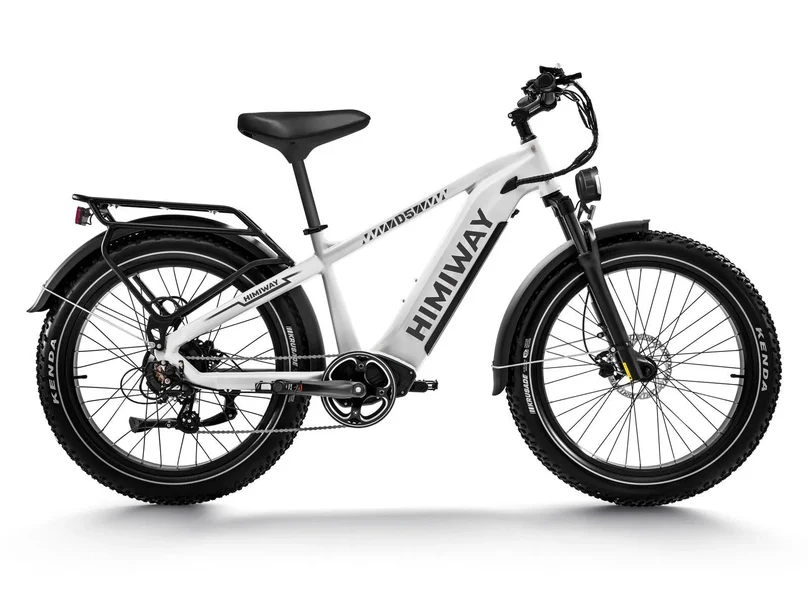
Are you a heavier rider looking for an electric bike that can keep up with your needs? Finding an e-bike that supports higher weight limits without sacrificing power or comfort can feel like a challenge. But don’t worry — the right e-bike is out there, and we’re here to help you find it.
Heavy riders face unique challenges when choosing an e-bike, from frame durability and motor strength to battery life and rider comfort. A bike that can safely carry your weight while delivering smooth, reliable power is essential to enjoy every ride — whether it’s a quick commute or a weekend adventure.
In this guide, you’ll discover the top e-bikes designed specifically for heavier riders, what features to look for, and expert tips to get the most from your electric bike. Ready to find your perfect ride? Let’s dive in.
What to Look for in an E-Bike for Heavy Riders
Choosing the right e-bike as a heavier rider means focusing on key features that ensure safety, power, and comfort. Let’s break down what really matters when shopping for the best e-bikes for heavy riders.
Weight Capacity
First and foremost, weight capacity is critical. Look for e-bikes with a minimum load limit of 300 pounds or more to ensure the frame and components can safely handle your weight.
The frame material plays a big role in durability:
- Aluminum frames are lightweight yet strong and common in most e-bikes.
- Steel frames offer extra toughness and flexibility but tend to weigh more.
- Carbon fiber is lighter and strong but usually reserved for premium bikes and may not always be ideal for heavier riders due to stiffness.
Motor Power
For heavier riders, a powerful motor makes all the difference — especially on hills or rough terrain. That’s where torque, or twisting force, comes into play. Higher torque means easier climbing and smoother acceleration.
You’ll usually find two types of motors:
- Mid-drive motors sit near the pedals and provide better balance and hill climbing power.
- Hub motors are located in the wheel and offer straightforward power, often at a lower cost.
For heavy riders, aim for at least a 750-watt motor. This power range offers enough strength to handle extra weight without slowing down.
Frame and Fork Strength
A strong frame is your bike’s backbone. Look for reinforced frames and wider forks designed to handle stress and weight over time.
Suspension also plays a role in comfort and control:
- Front suspension (forks) helps absorb bumps on rough roads.
- Full suspension (front and rear) offers extra comfort but can add weight and cost.
If you plan on riding off-road or on uneven paths, suspension can be a game-changer.
Braking System
With added weight, stopping power is crucial. Hydraulic disc brakes provide stronger, more consistent braking compared to mechanical brakes or rim brakes.
Also, consider rotor size — larger rotors (180mm or more) offer better heat dissipation and stopping power, which is important for heavy riders.
Battery and Range
More weight means your motor works harder, draining the battery faster. For this reason, prioritize e-bikes with larger battery capacities — ideally 600 watt-hours (Wh) or more.
Some e-bikes offer dual battery setups for riders who want to go the extra mile without worrying about running out of power.
Wheels and Tires
Wider tires help distribute weight more evenly and absorb shocks better. Consider fat tires (3.8 inches or wider) for extra stability and comfort.
Wheel sizes matter too:
- 26-inch wheels are sturdy and responsive.
- 27.5-inch wheels offer a nice balance of speed and control.
- 29-inch wheels roll over obstacles smoothly and are great for long rides.
Pro Tip:
Always check the bike’s official weight limit before buying — exceeding it can void warranties and risk damage. Also, consider upgrading to puncture-resistant tires for peace of mind on longer rides.
Ready to explore e-bikes that combine strength and style? In the next section, we’ll review some of the top models perfect for heavier riders in 2025.
Top E-Bikes for Heavy Riders (2025 Edition)
Looking for a strong, reliable e-bike that can comfortably support your weight and deliver smooth power? Here are the top models for heavy riders in 2025, featuring high weight limits, powerful motors, and rider-friendly features.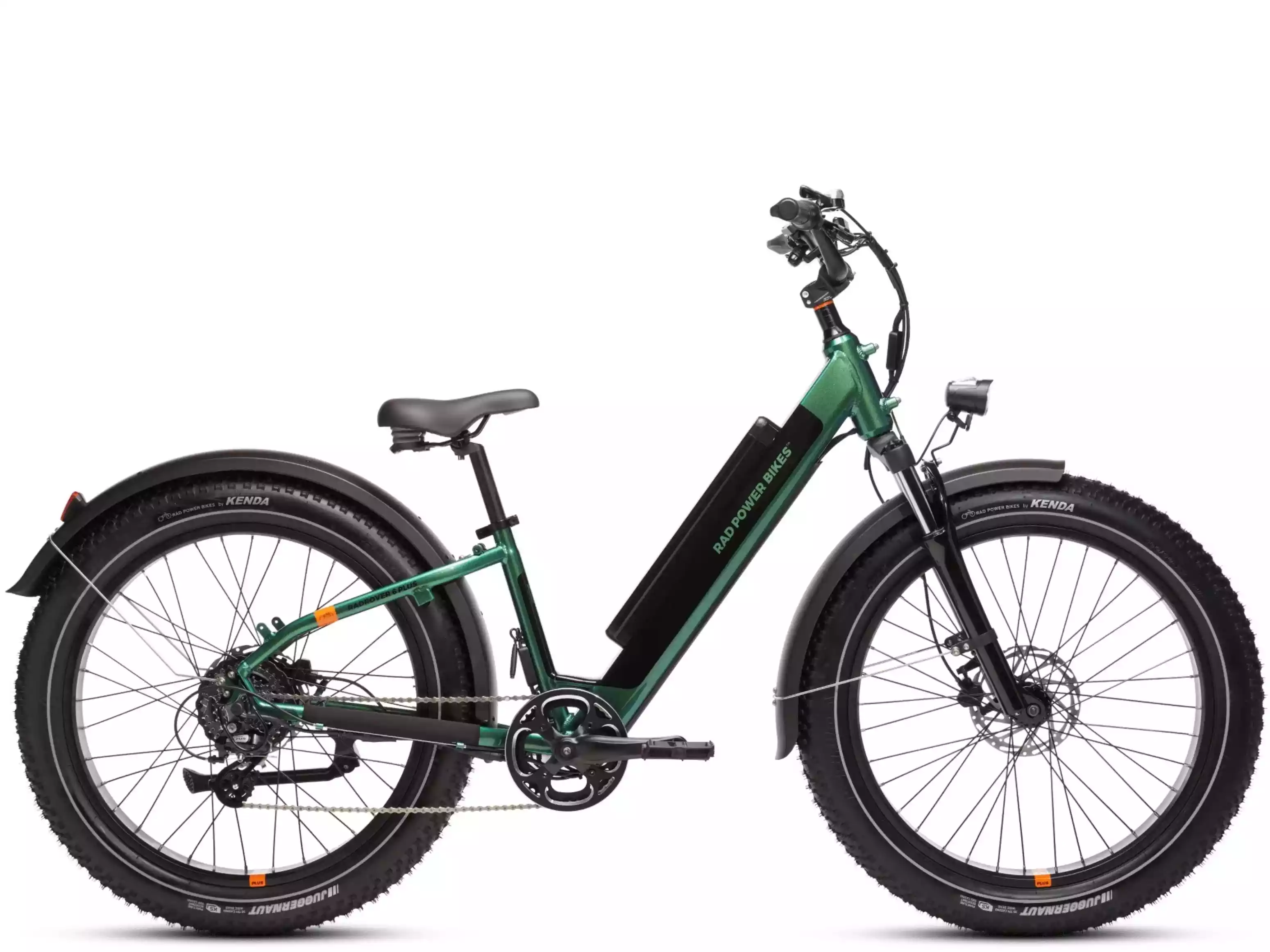
1. Rad Power Bikes RadRover 6 Plus
- Weight Limit: 275–300 lbs
- Motor: 750W geared hub motor
- Highlights: Fat tires for stability, optional step-through frame for easy mounting, integrated lights and fenders
- Why It’s Great: Offers a balanced mix of power and comfort at a solid price point, making it a favorite for city and trail riders alike
- Considerations: Heavier bike (74 lbs) and no included rear rack
- Price: Around $1,300
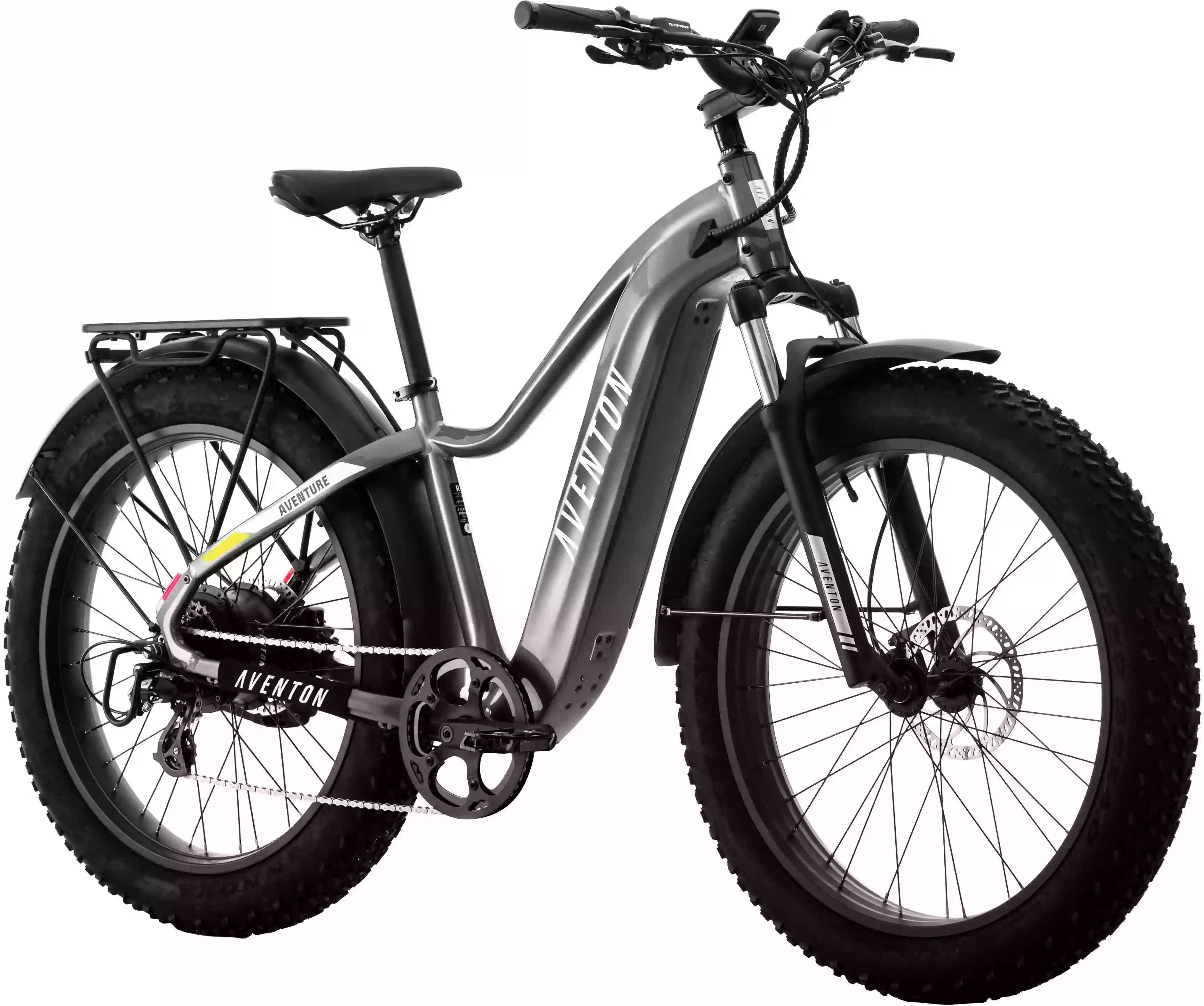
2. Aventon Aventure.2
- Weight Limit: 400 lbs
- Motor: 750W with torque sensor for smooth power delivery
- Highlights: Fully integrated battery, fat tires, turn signals, and front rack/fender options
- Why It’s Great: Combines rugged design with commuter-friendly features; excellent for heavier riders who want versatility
- Considerations: Slightly heavy (~77 lbs), not ideal for aggressive off-road trails
- Price: About $1,999

3. Himiway Zebra
- Weight Limit: 400 lbs
- Motor: 750W motor paired with a large 960Wh battery
- Highlights: Long range, stable fat tires, integrated lighting
- Why It’s Great: A budget-friendly powerhouse that doesn’t compromise on performance or load capacity
- Considerations: Finish and details not as refined as premium models; overall weight is on the heavier side
- Price: Approximately $1,699
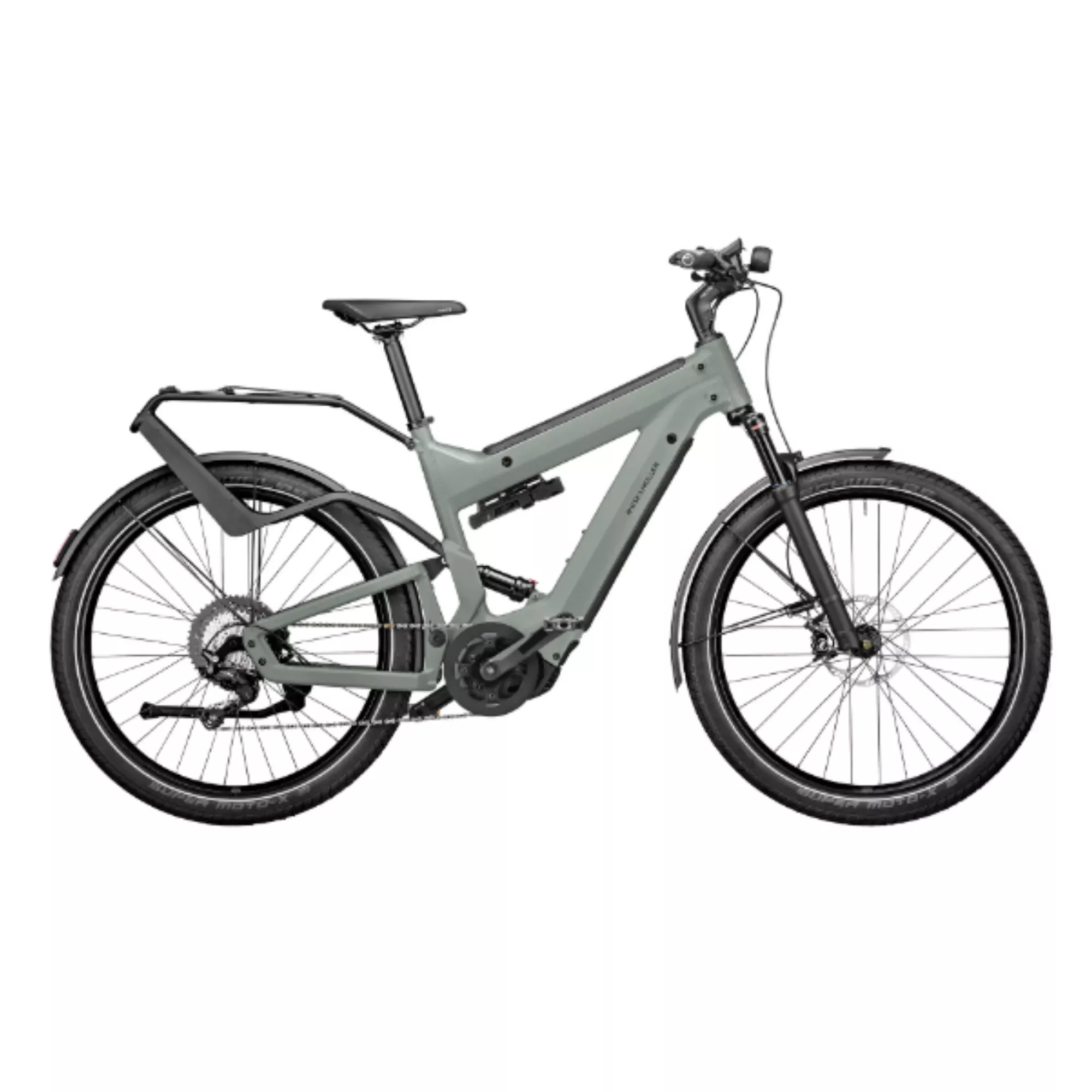
4. Riese & Müller Superdelite
- Weight Limit: About 350 lbs (customizable)
- Motor: Bosch high-end mid-drive motor with dual battery options up to 1,125Wh
- Highlights: Premium components, full suspension options, advanced electronics
- Why It’s Great: Top-tier durability and range for riders who want the best performance and comfort
- Considerations: Premium pricing ($8,000+), may be more bike than some need for daily use
- Price: $8,000–$12,000 depending on options

5. Cyrusher Kommoda
- Weight Limit: 330 lbs
- Motor: 750W motor with full suspension
- Highlights: Fat tires, adjustable seat height, step-through frame design
- Why It’s Great: Comfort-focused design ideal for taller or heavier riders looking for versatility on city streets and light trails
- Considerations: Brand is less known, heavier frame, styling may be polarizing
- Price: Around $1,799
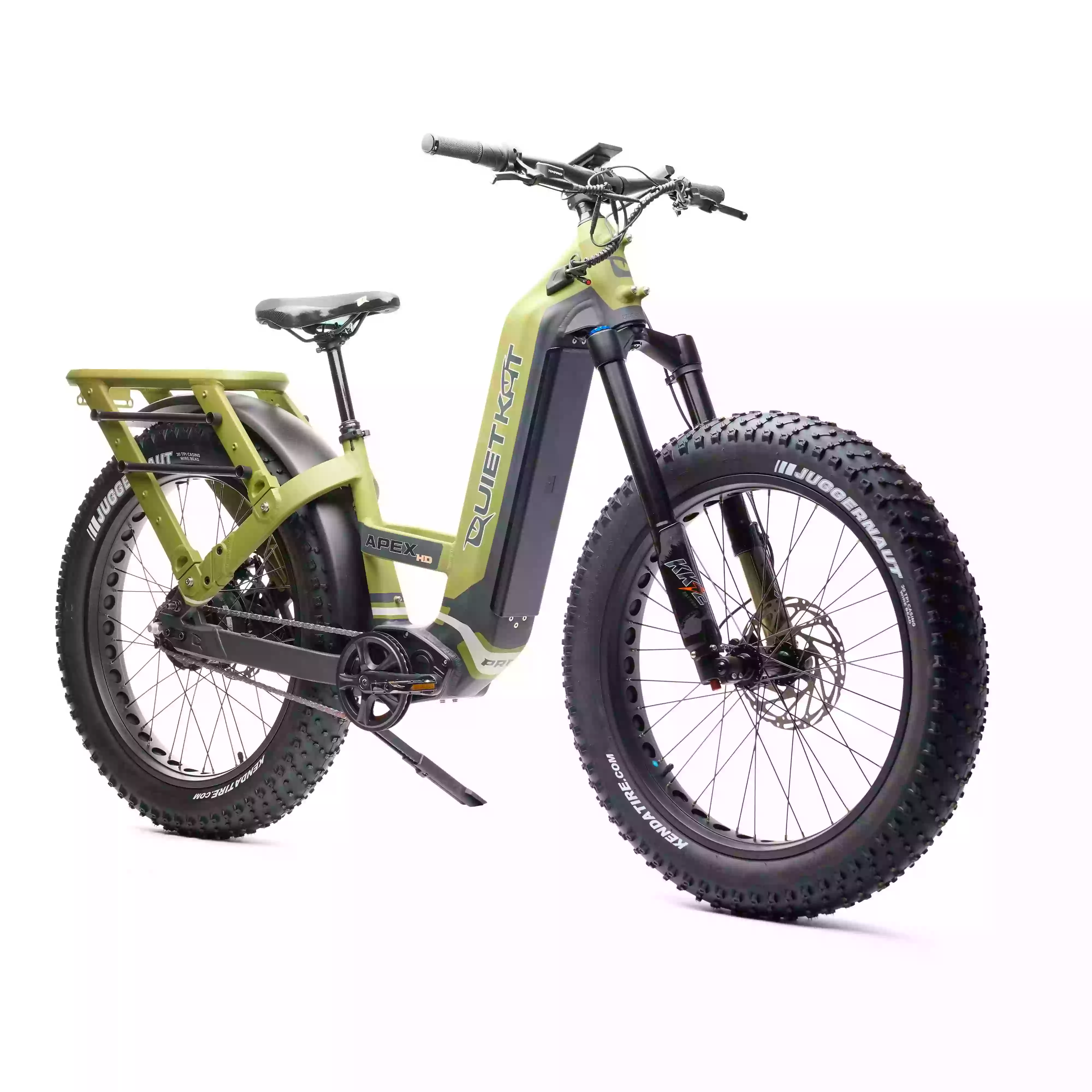
6. QuietKat Apex
- Weight Limit: 325 lbs
- Motor: Mid-drive motor with ultra-fat tires
- Highlights: Designed for off-road, hunting, and trail riding with rugged construction
- Why It’s Great: Excellent choice for adventure seekers who need a powerful, durable bike for tough terrain
- Considerations: Heavy and pricey, not ideal for city-only use
- Price: Roughly $5,000–$6,000
Pro Tip:
Look for fat tires and hydraulic disc brakes when shopping for heavy rider e-bikes—they improve stability and stopping power under load. Also, check if the bike includes integrated lights and racks if you plan on commuting.
With these solid options, heavy riders can find an e-bike that fits their lifestyle and weight needs without compromising on performance or comfort. Ready to ride? Check out detailed reviews and find your perfect fit today!
Honorable Mentions
Looking for even more options that pack a punch? These honorable mentions didn’t make the main list but are still fantastic choices for heavy riders. Whether you need extra power, customization, or value, these e-bikes are worth a serious look.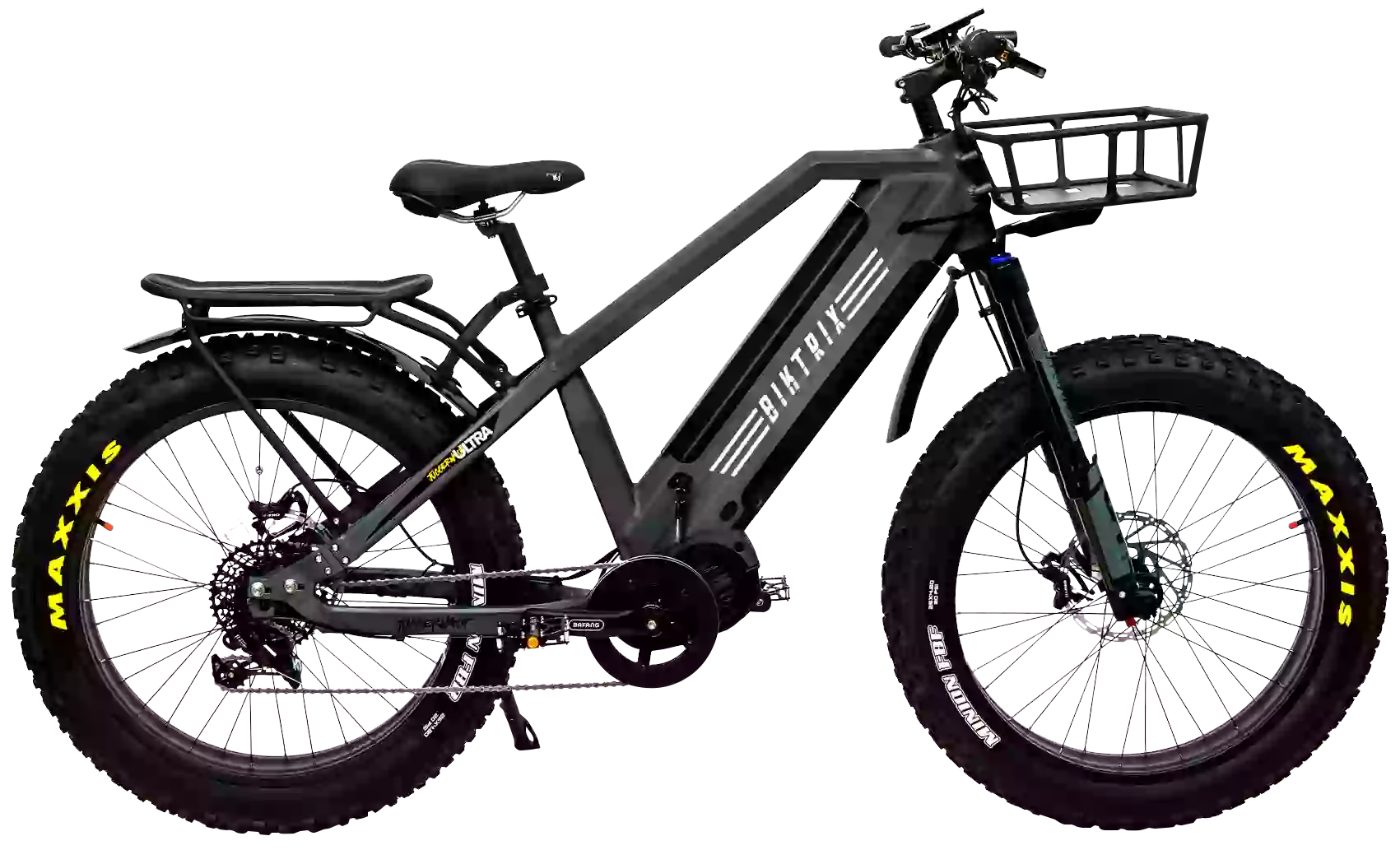
1. Biktrix Juggernaut Ultra Beast 2
- Motor: 750W or 1000W mid-drive
- Battery: Dual battery setup for extended range
- Weight Limit: 380–400 lbs (depending on configuration)
- Why It Stands Out: With powerful motor options and extreme range, this beast is built for serious riders who want all-day performance and torque to conquer hills with ease.
- Pro Tip: Ideal for riders over 300 lbs who also need long-distance range or plan to tow gear or a trailer.
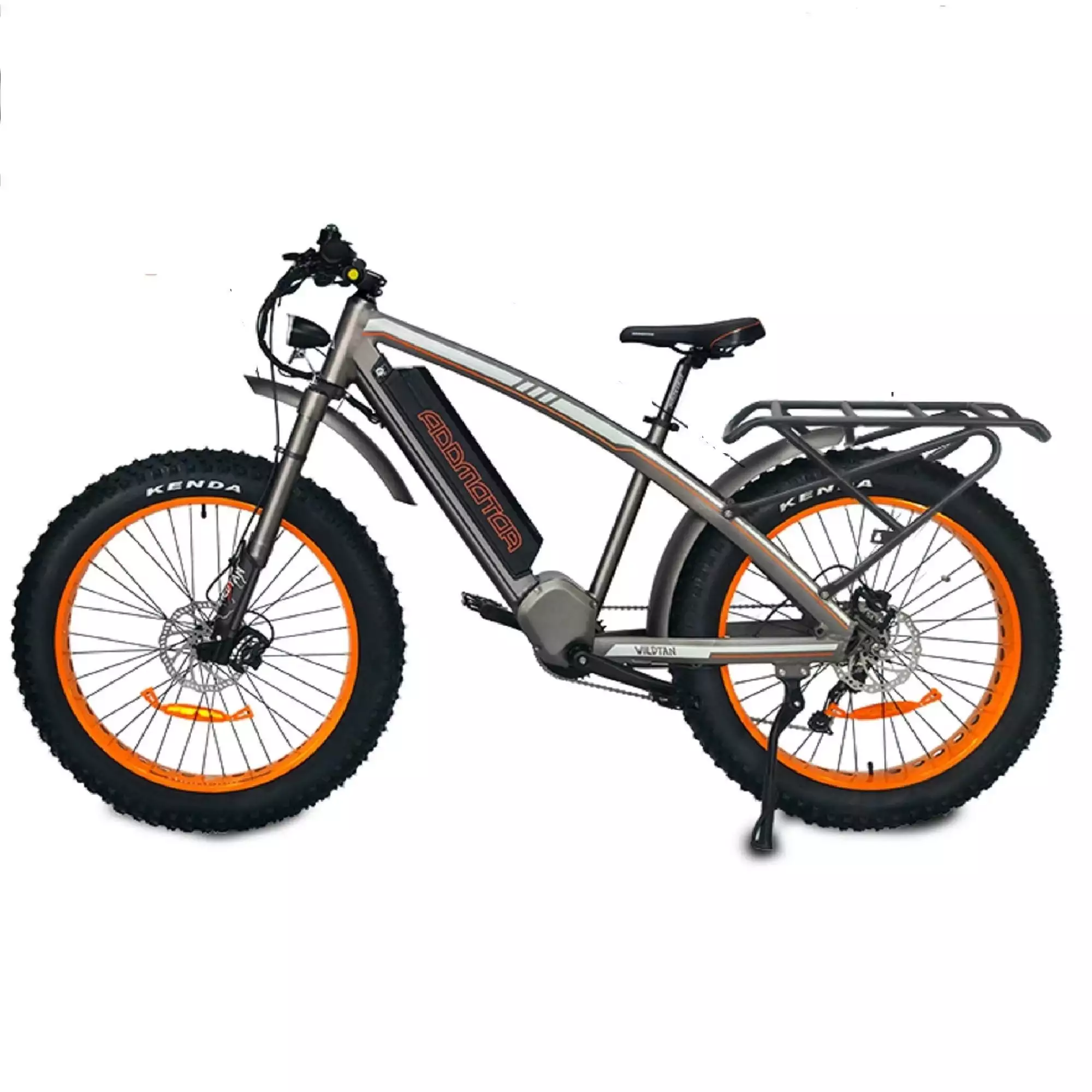
2. Addmotor M-5600
- Motor: 1000W Bafang mid-drive
- Features: Rugged frame, large fat tires, and integrated lighting
- Weight Limit: ~350 lbs
- Why It Stands Out: One of the best fat-tire e-bikes for heavy-duty use at a competitive price point. Its strong motor and solid build are perfect for off-road enthusiasts or riders in hilly areas.
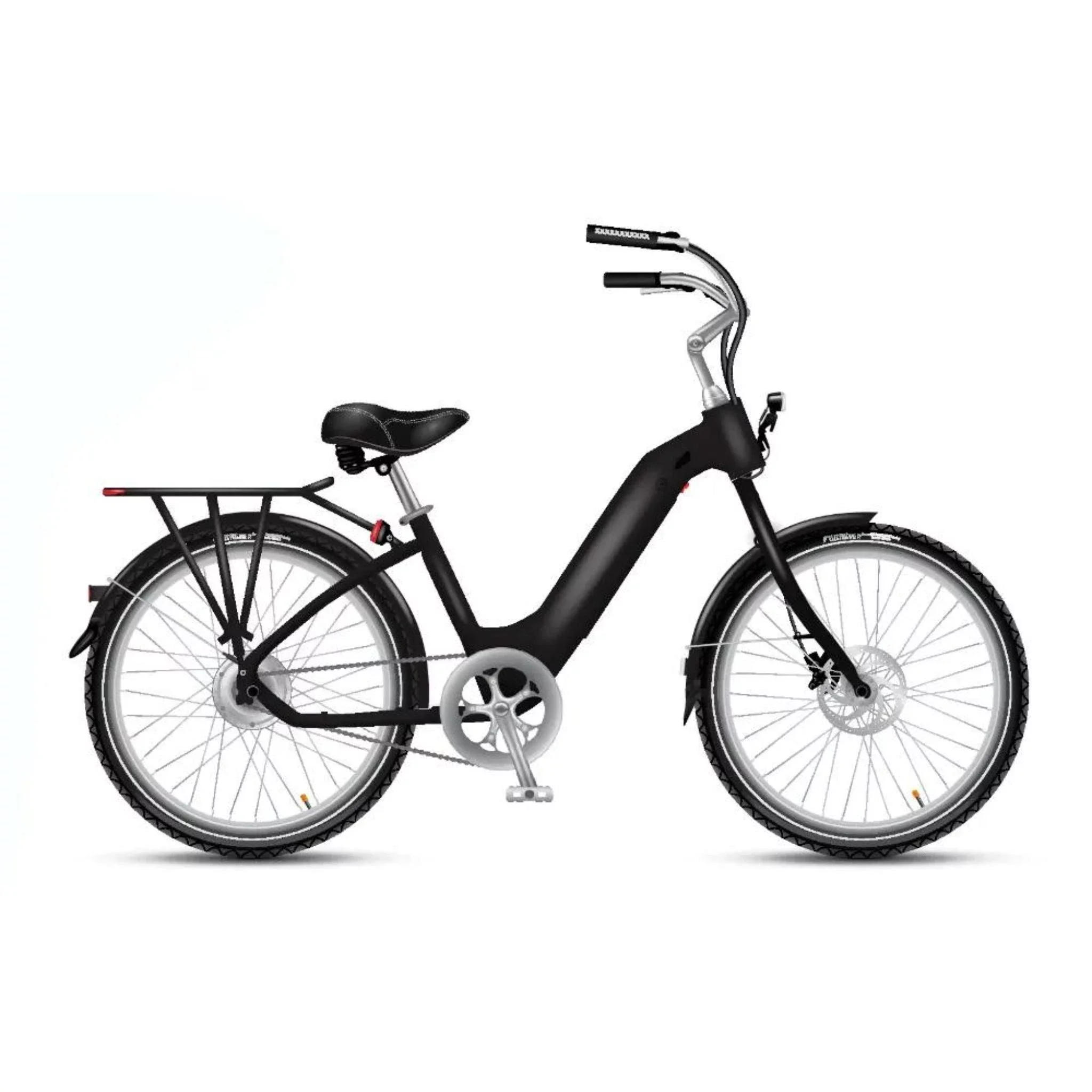
3. Electric Bike Company Model R
- Motor: Up to 750W rear hub
- Customization: Built-to-order in the USA with color, accessories, and frame style options
- Weight Limit: 350+ lbs depending on setup
- Why It Stands Out: If you want an e-bike tailored to your lifestyle, the Model R offers top-notch customization, comfort, and quality. Great for commuting, cruising, or cargo hauling.
Pro Tip:
If you’re on the higher end of the weight spectrum or plan to carry cargo, consider brands that offer custom builds or upgrade options — these often include stronger wheels, higher torque motors, and reinforced frames.
These honorable mentions round out our list of the best e-bikes for heavy riders in 2025. Whether you're after raw power, personalization, or unbeatable range, there’s something here to match your riding goals and body type.
Want help comparing features or finding the right fit? Check out our buyer’s guide or contact a local e-bike dealer for a test ride. You're just one ride away from feeling the freedom an e-bike brings.
Let me know if you'd like a downloadable version or if you'd like to keep going with the rest of the article!
Tips for Heavy Riders
Whether you're new to e-biking or upgrading to a more powerful ride, these quick tips can help heavier riders stay safe, comfortable, and confident on every trip.
1. Keep an Eye on Tire Pressure and Brake Wear
Your tires and brakes work harder when carrying more weight. Check tire pressure weekly and keep it within the recommended PSI to avoid flats and improve efficiency. Also, inspect brake pads regularly, especially if you’re using the bike for daily commutes or hilly terrain.
Pro Tip: Use puncture-resistant or thicker tires if you often ride on rough or gravel paths.
2. Upgrade for Comfort
Factory saddles don’t always cut it. Consider replacing your seat with a wider, cushioned saddle designed for heavy riders. A suspension seatpost also helps absorb bumps and reduce fatigue on longer rides.
3. Be Ready on the Road
Always carry a mini pump, multitool, and patch kit—just in case. Heavier loads can put extra stress on components, and a quick fix can keep your ride going.
4. Look for Throttle Options
Many of the best e-bikes for heavy riders include a throttle assist, which helps you start from a complete stop without having to pedal hard. This is especially helpful at traffic lights, on hills, or when starting with added cargo.
Pro Tip: Throttle can also give your knees a break—great for joint protection on longer rides.
By following these tips, you’ll extend the life of your e-bike and improve every ride’s comfort and safety. Combine the right gear with smart habits, and you’ll be cruising with confidence.
Ready to explore your options? Up next, we’ll tackle some of the most frequently asked questions from heavier riders just like you.
6. FAQs
Still have questions about choosing the best e-bike for heavy riders? You’re not alone. Here are some quick answers to common questions to help you ride with confidence.
Q1: Can a 250W motor support a heavy rider?
Not really. While a 250-watt motor might technically move a heavier rider, it will struggle on hills, wear out faster, and feel sluggish. For better performance and longevity, we recommend at least a 500W–750W motor, especially if you're riding on inclines or carrying gear.
Pro Tip: More torque equals better hill-climbing power. If you live in a hilly area, prioritize mid-drive motors with high torque.
Q2: Are fat tires better for heavier riders?
Yes—fat tires offer better weight distribution, traction, and comfort. They help smooth out the ride, especially on rough roads or gravel trails, and can handle higher PSI ranges to support heavier loads.
Look for tires 3 inches or wider and consider puncture-resistant liners or slime-filled tubes for extra protection.
Q3: What if I weigh over the bike’s stated limit?
It’s not recommended. Exceeding the weight limit can lead to frame damage, poor handling, brake failure, and it often voids the warranty. Always look for bikes with a published weight capacity higher than your body weight—ideally with room to spare for cargo or gear.
Have more questions? Drop them in the comments or connect with your local e-bike dealer for a personalized test ride. Finding the right e-bike is all about matching your body, your needs, and your ride style—and you’re already on the right path.
Up next: Let’s wrap it all up and get you ready to roll.
Wrap Up:
Choosing the best e-bike for heavy riders isn’t just about weight limits—it’s about unlocking a smoother, more comfortable, and more confident ride. When you match your body type with the right frame, motor, and features, every ride becomes easier, safer, and more enjoyable.
Don’t settle for “good enough.” Test ride a few models, explore suspension and seating upgrades, and consider how the bike fits into your daily life—whether that means commuting, weekend adventures, or just cruising for fun.
Pro Tip: A strong frame and a powerful motor aren’t just about performance—they give you the confidence to ride farther, faster, and more often.
Remember:
- Strong frame = durability and safety
- Powerful motor = smoother rides and easier hills
- Right fit = long-term comfort and fun
With so many exciting options in the 2025 electric bike market, there’s never been a better time to ride. Whether you're 260 lbs or 400+, your perfect e-bike is out there—and it's ready to roll.
Ready to ride? Explore our top picks and e-bike buying guides to find your ideal match today.
Additional Resources for Teen E-Bike Riders
Just getting started or looking to level up your e-bike setup? Here are some extra tools, guides, and tips to help teens ride smarter, safer, and more confidently.
Find the Right Fit: Sizing Guides
One of the most common mistakes in buying an e-bike—especially for teens—is choosing the wrong size. A proper fit makes all the difference in comfort, control, and safety.
Here are some helpful links:
- REI’s Electric Bike Sizing Chart
- Lectric eBike Frame Fit Guide
- Two Wheeling Tots: Kid & Teen Bike Size Reference
🛠️ Pro Tip:
Most teen e-bikes fall between 24" and 27.5" wheels. If you're in between, size down for control or up for room to grow.
Gear Up: Safety Essentials Teens Actually Want to Wear
Riding safe doesn’t have to mean looking lame. These accessories blend protection and style:
- Helmet: Look for MIPS-certified helmets with ventilation and cool color options
- Reflective gear: Add reflective ankle straps, backpack decals, or tire spoke lights
- Padded shorts or gloves: For longer rides, these make a big difference in comfort
- Lock & light combo sets: Easy add-ons for daily commuting or school rides
📦 Pro Tip:
Bundle up gear at the time of bike purchase—many retailers offer a discount if you buy safety gear with a bike.
Maintenance Made Easy: Teen-Friendly Checklists
Keep your e-bike in top shape with simple monthly checks:
- ✅ Tire pressure (aim for what’s printed on the sidewall)
- ✅ Brake test before every ride
- ✅ Wipe the chain and lube it once a month
- ✅ Charge the battery before it dips below 30%
Some apps even remind you when it's time for a tune-up!
Stay Curious, Stay Safe
Want to learn more? Explore teen e-bike forums, YouTube maintenance tutorials, or your local bike shop’s event calendar for free classes.
🎯 Find your fit. Gear up. Ride smart.
Looking for the best e-bike for your teen? Check out our full review section and start comparing top models today.

